Text
Countries that are no more: Republic of Florence (1115AD-1569AD)
Much of Italy's history has been spent less as a united territorial entity and more a complex patchwork of city-states, Rome being its best known given its expansive influence not just on the Italian Peninsula but well beyond in terms of geography and the span of time. Its influence lingers in realms such as language, political structure, jurisprudence, art and architecture. It also laid the groundwork for all Italian city-states that followed. Though none have risen to Rome's geographic expanse, many have left influential traces which can be seen today across language, government, economics and the humanities. One that stands out in all these areas arose to prominence in the high and late Middle Ages and straddled the transition from the Medieval period to the Modern Age being synonymous with the Italian Rennaissance, the Republic of Florence.
Name: In Latin it was known as "Res Publica Florentina" and in the Old Italian dialect as "Republica di Fiorenza". In foreign relations its official name in English was the Florentine Republic or commonly known today as the Republic of Florence or just Florence.
Language: The official languages included Latin as the language of diplomacy, religion and government business. While the Tuscan dialect of Italian was the vernacular language. Thanks in part to the works of Florentine writer Dante Alighieri (1265-1321) Tuscan Italian would become the written basis for standardized modern Italian.
Territory: The territorial holdings of the Florentine Republic varied in in size and scope but unlike other Italian city-states that were its contemporaries such as Venice and Genoa it never possessed territory outside of what is modern Italy. Venice and Genoa possessed overseas territories throughout the Mediterranean and Black Sea regions while Florence centered around its namesake city on the Arno River and the surrounding area in Tuscany but essentially covered parts of what central and northwestern Italy at its greatest extent in the 14th and 15th centuries.
Symbols & Mottos: The flag of the state was a white cross on a red field. Other symbols used reflected the various political factions which altered in the control of the city state. These included the Ghibelline and Guelph factions which had their origins in a broader Italian political struggle beyond Florence dating back to the 12th and 13th century power struggles between the Holy Roman Emperors and the Papacy. Traditionally the Ghibellines were noble families who supported continued patronage from the Holy Roman Emperor and their noble rights while the Guelphs tended to be backers of the Papacy and the rights of the commoners in varying degrees of Medieval populism. This struggle saw back and forth control over Florence in the 12th to 14th centuries. Whereas some Italian cities tended to remain firmly in one camp or the other, Florence fluctuated between the two. Other symbols were tied to the various trade guilds which dominated the city's economy, and some symbols were tied to specific heraldic and coat of arm designs for noble families such as the most well-known Florentine family, the Medicis.
Religion: Like most of Italy, the official religion of the republic was Roman Catholicism. Though there was also a small community of Jews who lived and practiced their faith within Florence but tolerance for Judaism was variable over the lifespan of the republic. Jews experienced relative tolerance from some Popes and through the protections and their connections with leading Italian banking families such as the Medicis, and some Jewish families prospered individually with their connections to Medici run Florence but at other times they were subject to religious and social restrictions including the establishment of a Jewish ghetto in 1571 after the republic's official end. The ghetto likewise established by the Medicis who had at times been patrons and benefactors of the Florentine Jewish community as well.
Currency: The currency of Florence was the gold florin; the name derived from the city. The florin was backed by gold reserves or a gold standard and was eventually the most widely used currency in western Europe. Florence would be well known for its families involved in banking, most notably the Medici family which would become among the most wealthy and influential in Europe. The Medicis and other Florentine banking families opened bank branches in other Italian cities and western European countries as far flung as France and England. One innovation of the Medici banking system was the use of bills of exchange which served as a legal document noting a payment of funds to a Medici bank which could be carried across geographical boundaries and delivered to another branch elsewhere and exchanged for funds at their destination. For the customer this allowed them to travel with legal tender but no actual currency sparing them from robbery as the lack of coinage wouldn't serve thieves and for the Medicis this circumvented church sponsored laws against usury or interest on money lending, and they got the benefit of exchange rates when the bill of exchange was turned in for currency. These became a precursor to modern variations of letters of credit.
Population: Prior to the Black Death in the middle of the 14th century, Florence itself had roughly 100,000-120,000 people with an estimated 300,000 additional people in the rural environs surrounding the city. The Black Death is estimated to have halved the city's population and recurring bouts of plague and war over the ensuing centuries kept the population low and growth slow to recover. In its Medici heyday of the 15th century, it was back up to roughly 60,000 within the city proper and slowly climbed back from there subject again to bouts of plague and war.
Government: Florence's political structure for the duration of the republic would probably be best described as an oligarchic republic. The republican institutions took shape over time originally having come out of an aristocratic led revolt against the former Marquis of Tuscany in the early 12th century. In time these aristocratic families would see their power too ebb and flow in the Ghibelline and Guelph conflicts. As a result of the challenges brought on by the conflict between these rival factions and the demographic shock of the Black Death which saw a wane in the hold of feudalism in Europe a rising mercantile middle class in Florence began to take the reins of power, some families from this middle class would become minor nobility themselves and intermarry with the old noble families or each other creating new political dynasties, the Medici family being one such family albeit the one with the most success. By the late 14th and early 15th centuries the republic's classic political structure took shape. Its leading bodies consisted of a twelve and nine-man council called respectively "the twelve good men" and the "signoria" which served as the legislative branches. Its executive member was named the "gonfaloniere" which translated as standard bearer who was responsible for security, law and order. The gonfaloniere was selected by lottery from the signoria and served a rotating two-month stint though after 1498 it was extended to lifetime appointments akin to the Venetian or Genoan doge. These council members had to come be men over age 30 with good finances and had to come from one of the seven main trade guilds in the city. Typically, these fell to members of the most influential and wealthy families with the supposedly random lottery drawing often being predetermined and the lottery itself being symbolic. In the 16th century there were reforms to the structure of government expanding it to an executive branch consisting of a four-man council headed by a Duke of Florence who was effectively a hereditary ruler (and member of the Medici family), a forty-eight-man senate charged with foreign policy and financial decision making and a council of two hundred making of the judiciary which heard petitions claims from the citizenry.
Military: Florence's military was never especially large when compared to its contemporaries as most of its might came from its deep economic and political connections within Italy and more broadly Europe and Near East. Throughout its existence it relied on its local citizenry both urban and rural for manpower. Early on, like many Italian city-states it utilized the condottieri system of mercenaries. These consisted of bands or companies of mercenaries for hire, some having fought in the Crusades in Middle East or elsewhere and brought back their fighting prowess to Italy. They could be locally raised Italians or in some cases foreigners from France, England, Spain, Germany or the Low Countries and elsewhere. Eventually the condottieri system was replaced by a reformed citizen's militia which consisted of infantry and cavalry with some reforms being proposed by Florentine politician and writer Niccolo Machiavelli (1469-1527). This was in response to the mercenaries becoming effective bandits and not always showing loyalty to their employers within the republic acting with self-interest above most other concerns. Machiavelli proposed a citizen's militia theoretically 20,000 men strong though in practice his reforms weren't easily implemented.
Economy: Florence's economy benefitted greatly from its location and the diversity of trades its location assisted in yielding. Its location in central Italy meant it was along many well-established trade routes and had a river (Arno) which afforded access to the sea. Likewise, it benefitted from favorable weather and soil conditions which along with a hilly geography guarded by the Apennine Mountains. These geographic and climate conditions combined to make it ideal pastureland for sheep and a wool industry, they also grew various types of wines as the soil was conducive to variety rather than strictly red or white wine as some regions were limited too. It also had balance of sunny and shady conditions to grow mulberry trees which sustained silkworms who in turn helped fuel production. Additionally, there were nearby marble quarries which produced high quality and durable marble for architecture and artworks and some degree of gold mining and production in the Arno valley too. Additionally, banking and money lending became a major industry as well with many notable Florentine banking families accumulating great wealth and influence throughout Europe and Near East. Twenty-one trade guilds formed in Florence to regulate the quality of these and various other industries becoming the drivers of economic life for the republic and often overlapping with the political machinations of the city-state too. The guilds standards lead to high levels of specialization and quality in these artisan fields, but they did also limit participation and stagnation with some resistance to innovation in the long run too.
Lifespan: The republic's official start date is not universally agreed upon but generally its accepted between 1115AD to 1138AD it made its first transitions from being a component city of the Marquis of Tuscany to its own independent city-state. It would experience a gradual formation into its classic 14th and 15th century republican structure but largely this developed out of the longstanding and sometimes destructive factional warfare between noble backing Ghibellines and populist Guelphs coupled with the demographic loss brought on by the Black Death which saw peasant populations drop dramatically and therefore weakening the feudal overlord's system of influence and helped give rise to the power of the trade guilds and mercantile families which overtook the city's economic and political engines.
The most notable example of this change in dynamic was the rise of the aforementioned Medici family from the late 14th century rising from somewhat humble origins in the wool and banking industries. Their innovations in accounting and banking outside of Florence raised their wealth and influence sufficiently that Cosimo de Medici (1389-1464) would on the back of his father's banking success and his own continued success raise the profile of the Medici family not only within Florence but throughout Europe and in turn raise the profile of Florence itself.
Cosimo served as a politician within the signoria on a rare rotating basis but his wealth an influence particularly with connections to the Papacy and its finances allowed the family and its allied mercantile families to effectively run the government of Florence while morphing into an oligarchy and maintaining the impression of republican government at work. He was the de-facto "Lord of Florence" from roughly 30 years. Cosimo would also be the first Medici to really patronize the artists of what become the Italian Rennaissance. The first flowering of this came when he organized helped organize the Council of Florence in the 1430s and 1440s which sought to nominally bridge the gap in the Great Schism between the Roman Catholic Church and the Eastern Orthodox Church in Constantinople. At the time the waning Byzantine Empire (Eastern Roman Empire) was looking for western support to defend it from the growing Ottoman Empire which sought to conquer Byzantium. Ultimately, neither church would be able to overcome their religious and political differences to reunite in a meaningful manner and the Byzantine Empire would fall with the Ottoman conquest of Constantinople in 1453 but during the Council of Florence numerous Greek clergy, diplomats and merchants brought to Florence the ancient pre-Christian Greek and Roman art and philosophical traditions which they had if not always practiced maintained archived records of and this lead to an cultural exchange that helped fuel what would become the Italian Rennaissance of the 15th and 16th centuries. It was from these meetings that art, architecture, philosophy and culture emphasized more secular themes and traditions with emphasis on what became known as humanism. The number of Greek scholars who became refugees in Italy fleeing the Ottoman conquest post-1453 AD also contributed directly to this trend. In some ways this saw the Florence become a hot bed for the transition from Medieval Europe to Modern Europe.
The Medici patronage of the arts and learning only grew in subsequent generations in particular under Cosimo's grandson Lorenzo the Magnificent (1449-1492) who patronized art from Leonardo da Vinci to Michelangelo and Botticelli. He also helped promote the philosophy of the ancient Greek thinker, Plato. However, from 1494-1498 a Catholic friar by the name of Girolamo Savonarola established a short-lived theocracy within the Florentine Republic. This came on the back of a Medici capitulation to French demands for passage of French troops through Florence on their way to combat the Kingdom of Naples. Savonarola himself was overthrown and executed after his defiance of the Pope and overbearing actions on fellow friars within Florence.
Cardinal Giovanni de Medici (1475-1521) (later Pope Leo X) eventually restored Medici rule to Florence circa 1513 AD against the backdrop of the Italian Wars (1494-1559) which saw the Valois dynasty of France compete for power and influence against the Hapsburg dynasty which ruled both the Holy Roman Empire and Spain on the other side. Both sides tried to shift the European balance of power in their favor through proxy wars and open conflict in Italy involving a shifting series of alliances between the rival powers (and other European nations) alongside the various Italian powers of the day including Florence. During this time weaponry and warfare evolved introducing on a grander scale use of gunpowder-based firearms and artillery shifting away from the prevailing Medieval style of warfare on centuries past. The wars had a debilitating impact on Italy as a whole and Florence was not spared its destabilizing effects. The Medicis maintained rule but were eventually deposed yet again in the late 1520s by coup. The trend of a coup and countercoup having been a regular feature of Florentine politics throughout its republican history.
1530 AD saw armies of the Holy Roman Empire; Spain and the Papal States besiege Florence and restore the Medici's yet again to power within the city it was from this time on they held the title "Duke of the Florentine Republic". Cosimo de Medici (1519-1574) was the second Medici Duke of Florence who was selected to rule in 1537 and given support by Charles V and the Imperial forces of the Holy Roman Empire. Cosimo would make the final changes to the bureaucracy and governmental structure of the Florentine Republic and additionally he with Imperial-Spanish support conquered the rival Italian city-state Siena in 1554 AD which was absorbed into Florentine rule. Cosimo was later elevated by the Papacy to Grand Duke of Tuscany in 1569, this promotion to an absolute and hereditary monarchy officially ended the last pretensions of Florentine republicanism which remained in some form over the century and half of effective Medici rule. The Medicis would remain Grand Dukes of Tuscany until 1737 AD.
Though the Medici family's rise contributed to Florence's rise, it also utilized its republican institutions for their own ends to the point to the point of being more of a republic in name than in practice.
Nevertheless, the Florentine Republic remains worthy of study as an influential Italian city-state one that arose from the Middle Ages and helped usher in the Renaissance and subsequently the Modern Age. Its institutions showed a degree of democracy that albeit limited was alongside other Italian republics of the day unique relative to the plethora of monarchies that dominated Europe at the time. Likewise, the economic diversity of its trade guilds and its innovative banking practices left enduring legacies not just in business but in the additional effects its prosperity provided in terms of the cultural flowering that was the Italian Renaissance and its manifold influences. To put it in the simplest terms the Florentine Republic was definitely a hotbed for the shaping of our modern world for the reasons described above and more...
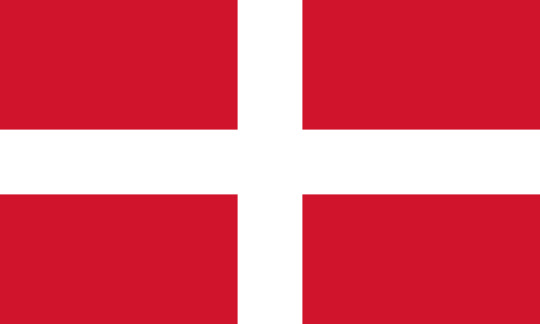
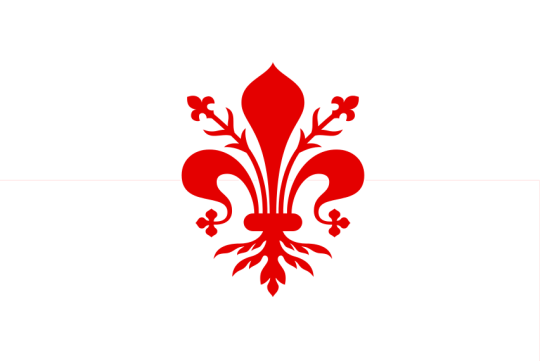




#history#latin#military history#firenze#tuscany#italy#middle ages#medieval#medieval history#florence italy#medicis#italian renaissance#byzantine empire#italian#dante alighieri#niccolo machiavelli#modern age#renaissance#humanism#artwork#da vinci#michelangelo buonarroti#leonardo da vinci#sandro botticelli#lorenzo de medici#cosimo de medici#papacy#republic#government#european history
5 notes
·
View notes
Text
Touring all 50 US States in order of their admission to the union: Delaware
While the Thirteen Colonies in British North America that declared their independence in July 1776 became states that made up the founding of the United States of America. These states went through various periods of admission to the union of states, first between 1777-1781 with each state's legislature ratifying the Articles of Confederation. This was in place from March 1781 until the 1787 US Constitution which remains in place today was adopted. The first state to adopt the US Constitution and therefore referred to as the first "constitutional" state is Delaware...
Delaware's Ratification of the US Constitution: December 7th, 1787.
Capital: Dover
Largest City: Wilmington
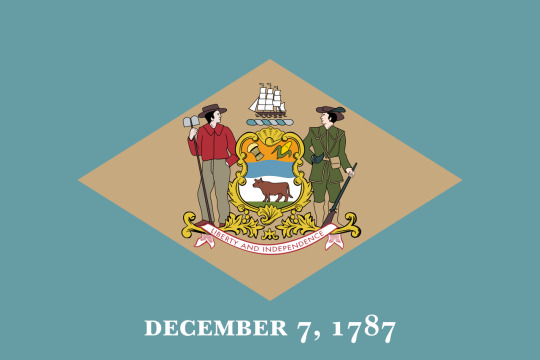
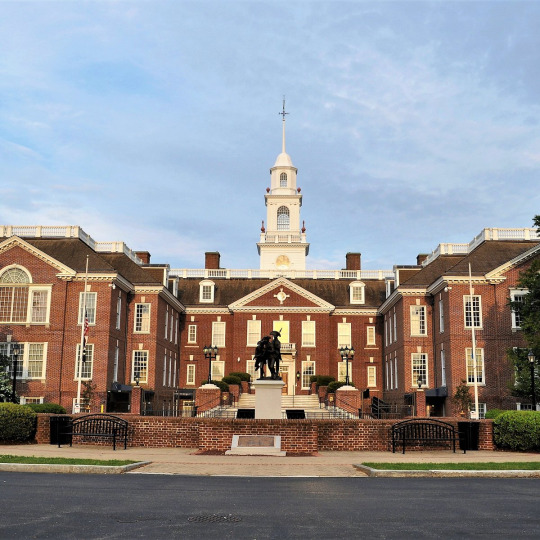





0 notes
Text
Countries that are no more: Ancient Carthage (814BC-146BC)
The state discussed in this post is one of the most famous and important in antiquity. Yet, it remains one of the most elusive and mysterious civilizations in world history because its own written records have been virtually erased with all contemporary written records coming from foreign sources that both praised and reviled its existence. However, it was influential for its model of government, its expansion of Mediterranean trade, its influence on models of economic production, naval exploration and for its military leaders whose tactical and strategic prowess influence warfare to the modern day and for its rivalry with the other emerging Mediterranean superpower of antiquity: Rome. A rivalry that is characterized as the quintessential clash of civilizations. This is Carthage.
Name: In its native language, the Phoenician dialect known in Latin as Punic, it was 𐤒𐤓𐤕𐤟𐤇𐤃𐤔𐤕, or annunciated as qrt-ḥdšt or Qart-Hardasht. This translates into English as "New City". In Latin it was known as Carthago or Karthago, the modern English pronunciation of Carthage comes by way of French.
Language: Carthage as a city-state and its empire more broadly held a cosmopolitan mixture of peoples and languages. However, the founders of Carthage and its ruling elite spoke Punic, a dialect of Phoenician associated with the city of Carthage which was founded by Phoenician colonists from the Levant. Punic was Phoenician in origin and became a distinct local dialect of Phoenician speakers in Carthage and other cities. These settlers founded colonies throughout North Africa and the Western Mediterranean. The Phoenician language and its dialects were from the Semitic language family native to the Middle East. It originated as a distinct dialect of the Canaanite peoples from who the Phoenicians and subsequently the Carthaginians descend from. The Canaanites also gave rise to the other Semitic speaking peoples such as the Israelites, Moabites and Ammonites among others. Modern Hebrew is said to be the extant language most similar to ancient Punic. In Carthage's empire there were also local varieties of Berber (Amazigh) languages spoken by the native Berbers who settled in North Africa. There were also local languages in Iberia (Spain and Portugal) from the Iberian and Celtic tribes settled there and the languages of native Sardinian and Balearic peoples as well. Additionally, ancient Greek was spoken by Greek colonists, mercenaries and traders who also settled within Carthage's empire and sphere of influence.
Territory: The city of Carthage is located in the environs of modern Tunis, capital of the modern state of Tunisia in North Africa. It was from this centrally located city founded by Phoenician colonists that their subsequent empire grew. The established contact and control with other Phoenician colonies in the area such as nearby Utica and eventually grew to control all of coastal North Africa from modern Morocco to western Libya. The modern states of Morocco, Algeria, Tunisia and Libya were its core territory, with Tunisia being its heartland. It also included Malta, the western half of Sicily, Sardinia and Corsica's coastal regions, the Balearic Islands of Spain and the southeastern portions of Iberia, particularly the coastal areas with influence into parts of the interior and south of the Ebro River.
Symbols & Mottos: The symbols associated with the state of Carthage are often in reference to their pantheon of gods which were quite extensive but centered mostly around the Phoenician gods but also included Berber, Iberian and Greek influences within their pantheon as well. A military standard associated with Carthage includes a staff with a sun disc and topped with a crescent moon. Also, the sign of Tanit, a Phoenician goddess's whose symbol was found on Carthaginian ruins along with Phoenician ruins found back in the Phoenician colonists' homeland in the Levant (Lebanon, Israel and Syria). The sign of Tanit appears in many varieties but is usually found as a schematic like sketch of a person with a triangular base with a disc on top with horizontal lines then pointing upwards like raised arms.
Religion: With Phoenician settlers being the originators of Carthage its ruling elite, the primary state religion was their variety of the ancient Phoenician religion which was polytheistic and included many notable gods and goddesses from Tanit to Baal Hammon, Melqart and Astarte among others. Many of these gods found companions with the Greeks and indeed due to the interfacing with Greeks both through trade and war, some Greek gods would also be incorporated into the Carthaginian pantheon, though it remained distinctly Punic at its core. There also appears to be Berber (Libyan and Numidian) influences along with Sardinian and Iberian interfacing that both saw the spread of worship of the Punic/Phoenician deities with local influences likewise being adopted by the Carthaginians. Even some ancient Egyptian gods appear to be included in Carthaginian worship. This syncretism and tolerance reflect the cosmopolitan outlook and composition the Carthaginians had within their realm.
There were priests who maintained the temples and sanctuaries devoted to particular deities. Likewise, Carthaginians practiced everything from ritual banquets to funerary rites such as those in the Levant like disposing of the remains of the dead, feasts for the dead, ancestor worship and goods in the tombs of the dead, indicating belief in life after death. Cemeteries were often built outside the walls of Punic settlements and included stelae with inscriptions serving as grave markers. Carthaginians practiced both burial and cremation.
There does appear to be cases of animal sacrifice to appease the gods in Carthaginian society as well. This tended to follow very specific regulations and rules.
The most controversial topic of the Punic religion however appears to be the practice of child sacrifice. The sources for this we must bear in mind come from Greco-Roman writers that weren't known to actually witness the practice and from civilizations that had biases toward Carthage more broadly. Yet both Greek and Roman sources cite the Carthaginians as practicing child sacrifice in their religion. These sources sometimes do contradict one another in their specifics. Modern historians debate the extent of this practice and what are the contents found at the sites known as Tophet in urns with ashes that may come from human infants. The Greco-Roman sources state children were specifically killed for ritual purposes and killed in various manners and burned as offerings. Based on archaeological findings some historians take the position that the practice may have occurred but may have been relegated to the ritual cremation of infants who died of natural causes. Others uphold the Greco-Roman sources and other deny the practice at all, chalking it up as pure invention of biased sources from Greece and Rome. Because Carthage was destroyed by Rome in 146 BC and virtually all extant written sources on Carthage come from Roman and Greek sources, there doesn't appear to be any definitive answer to this practice's purported extent or even its existence. Modern archaeology can lend more nuance to the topic but a clear answer like much of what we know about Carthage and its society remains a mystery.
Currency: The basic coinage of Carthage was called the shekel which derived from its Phoenician antecedents. There were gold, silver and bronze coins found throughout Carthage's empire. Mints were found not only in North Africa but Sicily and Iberia. Coins depicted everything from date palm trees to famous soldiers and politicians both Carthaginian in origin like the Barcid family of Hannibal Barca and even Greek rulers such as Alexander the Great.
Population: At its peak the empire had probably 3.7-4.3 million people. The city of Carthage proper at its peak was anywhere 250,000-500,000 people.
Government: The basis of our understanding of Carthage's governance is limited and largely based on ancient Greek and Roman sources. Some of which write of it in disparaging terms and others praise it for its complexity and nuance.
The basic understand is that during the first few centuries of Carthage's existence it was probably a monarchy. However, the extent to which the kings ruled over Carthage is debated. The Phoenician city states from which Carthage descended, namely Tyre had nominal monarchs but who deferred to a council of advisors who helped craft policy and administer the law. It seems reasonable that Carthage followed this political model in its earliest stages with nominal monarchs who likewise consulted a council of advisors made up Carthaginian nobility to craft and administer policy. The degree to which kings of Carthage held power probably fluctuated.
Following the First Sicilian War against the Greek colonists on Sicily in 480 BC, the nature of Carthage's government changed gradually with a weakening of the monarchy. By the 300s BC Carthage was at its peak and best characterized as an oligarchic republic. It was noted to have numerous checks and balances on the branches of government, a vast and complex administrative state, high levels of public accountability and participation in civic duty. Aristotle the famed Greek philosopher wrote on Carthage in his treatise "Politics" as the only non-Greek polity to be represented in the work.
Carthage as a republic became ruled nominally by two simultaneously elected non-hereditary magistrates called sufetes or shophets. This position's title translates as "judges" and they are said to handle a mix of judicial and executive powers. How they were elected and who was eligible for this head of state position is not known. What is known is they were always from the oligarchic ruling class of Carthage and that they held annual terms. The Roman writer Livy states this was comparable to the Roman republican practice of electing two consuls for annual terms. They are said to have ruled jointly and likewise handled matters of state through the convening and presiding over the supreme consultative council known as Adirim (similar to the Roman Senate), submitting legislation to the popular assembly and adjudicating trials. The sufetes interestingly did not hold any military power as this was separated and reserved for military commanders with the generals reporting to the Carthaginian assembly in the Adirim.
The Adirim held about 30 members on the council and like senators in Rome were elected from the wealthy elite merchant families of Carthage. They administered the treasury, conducted foreign affairs and providing some control over military affairs. It is said matters of state required unanimous decision making to go into effect.
Carthage also had judicial assembly called the One-Hundred and Four. These judges provided oversight of the military and other politicians and bureaucrats within Carthage. As an example of Carthage's political checks and balances, the One-Hundred and Four had the power administer monetary fines or even the death penalty, sometimes by crucifixion on military or government officials found to have engaged in unbecoming behavior that went against the interest of the public. It also formed small committees to provide oversight on political matters.
Separate from these bodies also came numerous junior bureaucratic positions to held administer everything from tax collection, public works and the state treasury.
Carthage also contained at local levels trade unions, a popular assembly and town meetings. In matters where the sufetes and Adirim could not decide law in a unanimous manner a popular assembly was consulted to make a final determination. Whether this was a formal institution or ad hoc solution has never been determined.
Aristotle singled out the Carthaginian government as more meritocratic than its contemporary Greek counterparts. He also praised its complex balance of monarchical, aristocratic and democratic elements. Some other Greek writers went so far as to say it was the best form of government in existence at that time only equaled in the Greek world by Sparta. Meanwhile, Aristotle himself stated that Carthage had some form of constitution and found it superior to Sparta's.
The Greek historian Polybius writing for a Greco-Roman audience in his commentary on the Punic Wars between Rome and Carthage stated that Carthage had more democratic elements than Rome did and that the common people were on average given more say than Romans at the time. However, Polybius saw this as a detriment to Carthage during the Punic Wars, in his estimate too much bickering and infighting to gain a unanimous decision led to paralysis and indecision. Whereas he favored the Roman Senate's rules which were less democratic overall and therefore more decisive in determining important decisions at crucial moments such as in war.
Carthage's republican government appears to have been replicated in the colonies and territories throughout its empire with sufetes found at local colonial levels. There appears to be cooperation between Punic colonial officials and the local population under Carthaginian rule.
Carthage was primarily mercantile in its outlook. The control of trade commodities and goods throughout the Mediterranean was the basis for its economic development and always of primary concern. Hence the merchant class-oligarchy's vested interest in maintaining power.
Military: Carthage was a classic example of a maritime power. Its navy was its most important military branch in many ways. The navy was used to ensure control over the network of trade routes between the various parts of the Western and Central Mediterranean. It would win naval victories over its Greek and Roman rivals though it would ultimately face defeat by the Romans.
The navy was large in size for antiquity and benefitted from the Phoenician advent of serial production, the ancient equivalent of assembly line production which produced ships of good quality but in an efficient manner. They could maintain hundreds of ships at one time, even after their power dimmed with the rise of Rome.
The ethnic composition of the navy's sailors, oarsman, navigators and marine force was almost exclusively Phoenician. Given the Phoenicians long association with seafaring trade and navigation, the Carthaginians merely upheld this tradition including in warfare.
The army of Carthage, its land based military branch was also crucial in achieving its geopolitical goals. From the subjugation of rebellious tribes in North Africa and Iberia to battling the Greeks and Romans in foreign wars. In conjunction with the navy the ultimate goal was maintaining Carthage's control of trade routes and upholding its sphere of influence to maintain favorable conditions for said trade.
Due to the limited population of Phoenician colonists spread throughout the Carthaginian empire and given their traditional naval prowess, much of the army was not of ethnic Phoenician/Punic background. Instead, they relied on a multinational mix of auxiliaries and mercenaries to fill the armies ranks. There might be Phoenician officers and generals such as the famed Hannibal Barca and his relatives including his father Hamilcar and brothers Mago and Hasdrubal, but many other officers could be Greeks among others. The rank and file including Greek mercenaries fighting in the hoplite style, many Greek colonists from Sicily and Southern Italy, Berber infantry and cavalry, particular the light cavalry of Numidia famed for its fast-moving skirmishers armed with javelins and the Libyan infantry. Iberian infantry and cavalry of mixed Celtic and Iberian backgrounds. The famed light skirmisher infantry from the Balearic Islands who slung stones at their enemies were likewise part of the army. Also included in the army were Gallic (Celtic) infantry and cavalry from France and Italy, Sardinians (Nuragic) and Italic peoples such as Samnites, Lucanians, Etruscans and even some Latin peoples including Roman defectors could be found among Carthage's land army. The Phoenician rank and file in the army were usually colonists from other Punic settlements and not Carthage proper. The exception being the famed 3,000 strong Sacred Band of Carthage which were derived from the strongest and healthiest of Carthage's wealthiest families to fight as an elite special unit of the army. Armed and trained int the Greek hoplite style and phalanx formation.
The army also utilized African Forest elephants as a mobile force similar to a wrecking ball. These elephants provided a fearsome complement to the army and was famously used by Hannibal Barca in his crossing of the Alps to invade Roman Italy during the Second Punic War.
The major conflicts Carthage fought in its history were its colonial wars in North Africa against Berber tribes and kingdoms, Iberia and in Sicily first against the Greeks and later against its archrival Rome. The three Punic Wars fought between Carthage and Rome have been characterized by some historians as the ultimate and perhaps most important clash of civilizations in the ancient world and perhaps of all time. Ultimately, they would all end in Rome's favor and eventual destruction and razing of Carthage by Rome, ending Rome's biggest rival and leading to Roman supremacy over the Mediterranean basin for the next several centuries.
Economy: Economic concerns were of chief importance to the Carthaginians. Their empire was essentially a commercial one or rather an expansive and complex trade network with the state trying to aggressively uphold and expand its scope. Its origins lie with the Carthage's Phoenician roots. The Phoenicians based in the Levantine coast (mainly modern Lebanon, Israel and Syria) weren't one united people but rather a series of city states, with the most powerful being based on the coast. These included the cities of Byblos, Sidon and Tyre among the leading polities and all with an outward maritime trade orientation. The Phoenicians produced many goods and economic models that would be both enriching and influential on trade throughout the ancient world. This included purple dye for fabric, uncolored glass, wine production and Lebanese cedar for timber production and the serial production economic model.
Carthage was founded in modern Tunisia by Phoenician colonists from the city of Tyre (Lebanon) in the 9th century BC. They were not the first Phoenician colony in North Africa but they eventually rose to become the most aggressive and successful. In part this was due to its secure and strategic location. It soon became the leading trade center on the Western and Central Mediterranean. They controlled trade routes at sea and rose to prominence and domination among all the other Phoenician colonies setup in North Africa, Sicily, Malta, Sardinia and Iberia.
Mining for metals silver, lead, copper and tin were of crucial importance for the wealth of Carthage, in particular this motivated their expansion into Iberia. Additionally, the temperate and fertile climate of the Western Mediterranean lead to much wine production. They also traded in amber, timber, grains an food preservatives.
While mostly a maritime trade power, Carthage also had overland caravans to secure goods from the African interior and even the Middle East. Continual exploration for new and expanding trade routes and goods was also important for Carthage. Famed Carthaginian explorers of Punic origin included Himilco the Explorer who lived in the 6th and 5th centuries BC. He is said to have been the first Mediterranean sailor to have explored the Atlantic routes to Northwest Europe, visiting Portugal, France and the British Isles. Britain in particular was important to the ancient tin trade which was necessary in bronze production. Britain was known in the ancient world to the Carthaginians and Greeks as the Tin Isles.
Hanno the Navigator was said to have explore trade routes to western Africa. Reaching as far as modern Senegal and Cameroon,
Lifespan: Carthage was said to have been founded by Phoenician colonists from the city of Tyre circa the 9th century BC. A foundation legend raised from its founding. Namely the legend of Princess Dido from Tyre leading her fellow Phoenicians not as colonists looking for commercial benefits but political refuge from her dictator brother. According to legend Dido and her retinue arrived at Tunisia and tricked the local Berber king into grating them a sizable tract of land from which the core of what became the city of Carthage was founded.
The city was given the name by its settlers of Qart-Hadasht, which in the Phoenician language meant "New City". The year 814 BC is often cited as the approximate date of its founding.
Quickly Carthage made an association with and eventual domination of fellow Phoenician colonies in the area including Utica. Its favorable climate, arable land and strategic location were all crucial to Carthage's rapid growth and dominance of over other Phoenician colonies. It would expand to conquer lands ranging from the whole of North Africa from Morocco to Libya, the islands of Malta, Sicily, Sardinia, Corsica and the Balearics and parts of the Iberian Peninsula over the coming centuries found themselves either under direct Carthaginian rule or favorable treaties incorporating the lands into its sphere of influence hence creating a trade network and empire, a classic example of a thalassocracy.
Initially, the Carthaginians paid a tribute and maintained contact to its mother city of Tyre back in Lebanon. However, this became an irregular occurrence due to Carthage's increasing independence due to its great distance from the Levant and the assertive character to its own local citizenry. Carthage began to see a mix of Phoenicians and local Berbers creating a unique Punic culture that synthesized the two cultures and ethnicities over time with the Phoenician dialect and culture remaining dominant but adaptable for its ability to incorporate other cultures. This was true as its sphere of influences expanded in the Mediterranean.
Carthage's independence was not only due to its relative distance from Tyre but due to the events back in Phoenicia. Various sieges from Babylonia and eventually later the Persian Achaemenid Empire conquered Phoenicia including Tyre circa 530-522BC. The subjugation of these lands reduced contact between the Carthaginian settlers and their Tyrian origins which had until that date sent a steady flow of colonists. While some flow of other Phoenicians would continue, the population would be buttressed by local native populaces and other Phoenician colonies rather than direct Tyrian migration.
The city of Carthage itself expanded over the centuries and created several distinct districts and architecture. At its peak in the 4th century BC, it contained a population between a quarter and half a million people. making it one of the world's largest and most prosperous cities at the time. The city had a mix of wealthy villas, apartment blocks six stories high, had warehouse and commercial districts, goods markets, a Greek style agora or public space, elaborate gardens. temples to various gods, various government buildings and a unique double harbor known as the cothon, which became the physical feature along with the Byrsa hill most associated with Carthage. The cothon featured an outer commercial harbor and military inner harbor with ship warehouses on a man-made island from which ship repairs, construction and maintenance could be addressed through its serial production. The Byrsa hill was the central district of Carthage which contained important temples, it had stair way avenues which were relatively wide for traffic, whereas most of the city's routes had narrow winding paths to navigate. The city was said to have triple walls for defenses, a shorter outer wall made of either stone or wood, followed by a ditch, a second taller stone wall 5 meters thick, a second ditch and a third stone wall 10 meters thick and with armed towers able to hold a force of over 20,000 troops.
In 509 BC it signed its first treaty with Rome, its eventual rival which at the time was the inferior power still clamoring for power on the Italian peninsula. The treaty was meant to demarcate their respective spheres of influence. From 580-265 BC, the Carthaginians found themselves in a series of wars with the Greek colonies of Sicily and Southern Italy. Namely, the city state of Syracuse which was the principal Greek settlement on Sicily.
These wars were back and forth in nature, marked by victory and defeat on land and sea for both sides. Eventually Carthage would retain control over the western half of Sicily until its loss of control in the Punic Wars with Rome. The Sicilian Wars also saw the gradual weakening of the kings of Carthage and its transition to an oligarchic republic (see government section).
The Punic Wars (264-146 BC) began almost by accident with neither Rome nor Carthage initially planning a direct confrontation with the other. The city of Messana (Messina) in Sicily found itself in the 260s BC under the control of a group of Italian mercenaries who had previously served the tyrant (king) of Syracuse who had died in 280 BC. These independent mercenaries were a threat to both Carthage and Syracuse's interests on Sicily. These mercenaries named the Mamertimes (Sons of Mars) divided into two factions, over the issue of the new Syracuse tyrant Hiero II's planned retaking of Messana. One faction advocating a Carthaginian intervention to take charge of the city's security and the other advocating for Roman intervention from the Italian peninsula. Carthage arrived first with a land garrison and naval fleet in the harbor. The Roman Senate was reluctant to assist the mercenaries but recognized the potential threat a permanent presence of Carthaginians in Messana and its location on the narrow Straits of Messina between Sicily and Italian mainland could pose on Roman trade and security. It advocated sending an expeditionary force to retake Messana to eject the Carthaginians. The attack triggered the first Punic War between the two powers. It turned into a quarter century struggle that was marked by intense fighting mostly on Sicily.
The First Punic War was ultimately a Roman victory that ended Carthage's presence on Sicily. It also saw Roman advances in naval technology such as the corvus to help board Carthaginian ships. Hitherto the Romans had little naval strength relative to Carthage but its innovations in naval warfare proved crucial in undermining Carthage's longstanding naval superiority. Meanwhile on land, despite the back-and-forth nature of the battles, the Roman army's tactical flexibility often proved superior to Carthage which after 23 exhausting years agreed to peace. It gave up control of Sicily to Rome (aside from Syracuse) and paid a tribute over the course of 10 years.
Rome also after the war used Carthage's distraction against a Libyan rebellion in the Truceless War to take control of Sardinia and Corsica in 238 BC.
To compensate for the loss of territory on Sicily, Sardinia and Corsica, the Carthaginians under Hamilcar Barca tried to expand its territory in Iberia against Celtic and Iberian tribes especially to profit from increased mining production. They also gained new manpower and agricultural production to boost their economy and military again. They also had a standing agreement with Rome to not intrude north or south of the Ebro River respectively. However, an Iberian city of Saguntum south of the Ebro had an agreement with the Romans. This upset the balance of power established with Carthage in Iberia. Hamilcar Barca's son Hannibal now in charge of the Carthaginian army in Iberia an avowed enemy of Rome, besieged Saguntum which he took in 8 months. This is turn led to Rome's declaration of war, starting the Second Punic War which lasted for the next 17 years.
In one of the most famous military campaigns of all time, Hannibal and his army complemented by Carthaginians, Numidians, Celts, Iberians crossed the Alps and invaded Italy, taking the war to Rome's home territory. Hannibal showing his tactical prowess would defeat Roman armies repeatedly on their own territory most notably at the Battle of Cannae in 216 BC. Many Italian cities that had been incorporated into Roman rule over the previous centuries rose up to join Hannibal against Rome. However, Hannibal never had sufficient strength to directly besiege Rome. Rome was constantly tested by Hannibal's victories over the next 13 years in Italy, but they refused to surrender and adopted an attritional strategy, and this wore down Hannibal by gradually retaking Italian cities allied to him if not able to defeat him directly. Likewise, they repelled Carthage's attempts to reinforce him in Italy. They also faced mixed success gradually conquering Iberia from the Carthaginians. Finally, an invasion of Tunisia forced Carthage to recall Hannibal back to North Africa to defend the capital from a Roman assault. He met the Romans in the Battle of Zama in 202 BC which resulted in a Roman victory over Hannibal himself at once.
Hannibal advocated for the government of Carthage to negotiate a treaty with Rome which it did. Its terms were harsh. A stripping of all overseas possessions of Carthage in Iberia and elsewhere including some African territories. A large punitive indemnity to paid to Rome over 50 years. A reduction of Carthage's navy ten warships, a ban on Carthage's use of war elephants. A prohibition on Carthage being able to fight war outside of Africa and any war it wages in Africa must require Rome's express permission.
Hannibal eventually became a sufete in Carthage and worked to reform the government of Carthage and stamp out corruption so as to ensure its ability to pay Rome its due from the treaty and rebuild its economy. Indeed, Hannibal was somewhat successful in his regards and Carthage's economy was somewhat rebounding but facing pressure from Rome and enemies in the local government, he went into voluntary exile in service to Greek states opposed to Roman expansion in the east. He died in exile under murky circumstances variously described as a suicide or murder.
The Third Punic War 149-146BC began will Carthage went to war in Africa with Berbers who were raiding its territory and without Rome's permission, this was used a pretext to attack Carthage itself by Rome for violating its treaty from the previous war. The third and final Punic War was characterized by a three-year siege of Carthage. Ultimately, the Romans after much pressure on both sides broke through its triple walls and assaulted Carthage in street-by-street fighting. The city was razed to the ground, much of its population killed by angered Roman troops. 50,000 Carthaginians were enslaved and sent elsewhere through the Roman Republic's empire. Carthage was no more as an independent political entity after 146 BC. A century later, Rome rebuilt the city on its ruins as part of its empire and it remained an important city within the Roman Empire until the fall of the Western half of the empire where it fell to the Germanic barbarians the Vandals who had their capital in Carthage, it was reclaimed by the Easter Roman Empire (Byzantine Empire) by the forces of Belisarius in service to Justinian I. Carthage would face a final destruction as a Roman city when the Arabs of the Umayyad Caliphate destroyed the city in the year 698 AD. It never rose as a city again, instead its ruins remain part of the suburbs or the modern city of Tunis, capital of Tunisia.
Carthage despite its being steeped in legend and mystery remains worthy of study as one of the undeniably great civilizations of antiquity. A fact recognized by its contemporaries whether they wrote of it a complimentary fashion or with contempt, its power, wealth and influence was immense enough to engender scholarly study and reflection at the time. It is for these contemporary recognitions whether positive or negative and absence of surviving self-records that many continue its study into the modern age. Particularly its opposition to Rome and the perception by Rome that it was a worthy rival that needed complete annihilation, especially given Carthage's ability to stand up to Rome in a way no other power really could at its peak.
The more Carthage is analyzed both by its contemporary foreign commentators with the surviving archaeological and fragmentary historical record, the more nuance can be shed on the complexity of the civilization and influence it had on world history. Its opposition to Rome might be its most noted aspect but it shouldn't overshadow how else Carthage influenced the world. From its complex style of government and network of commercial imperialism that presaged future thalassocracies such as the Italian republics of the Middle Ages like Venice and Genoa and how it produced economic production models which influenced Rome and Greece and subsequently other areas of the world, they carried that influence on to. Likewise, another legacy of Carthage was how it helped build an ancient iteration of a globalized economy, shrinking the gap between the long distances of the ancient Mediterranean world by linking disparate geographies and peoples under a common commercial interest. In this commercial pursuit it also revealed itself to have both a distinct dominant culture but one that was not intolerant or unable to accommodate and absorb other cultural influences. In many ways ancient Carthage by way of its influence on Greece and Rome and their own influences give us glimpses into how its existence served as a precursor to the modern world we inhabit.


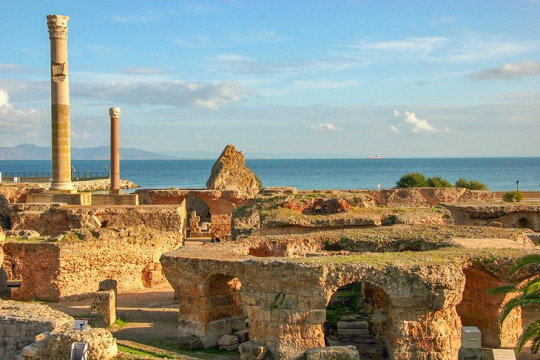
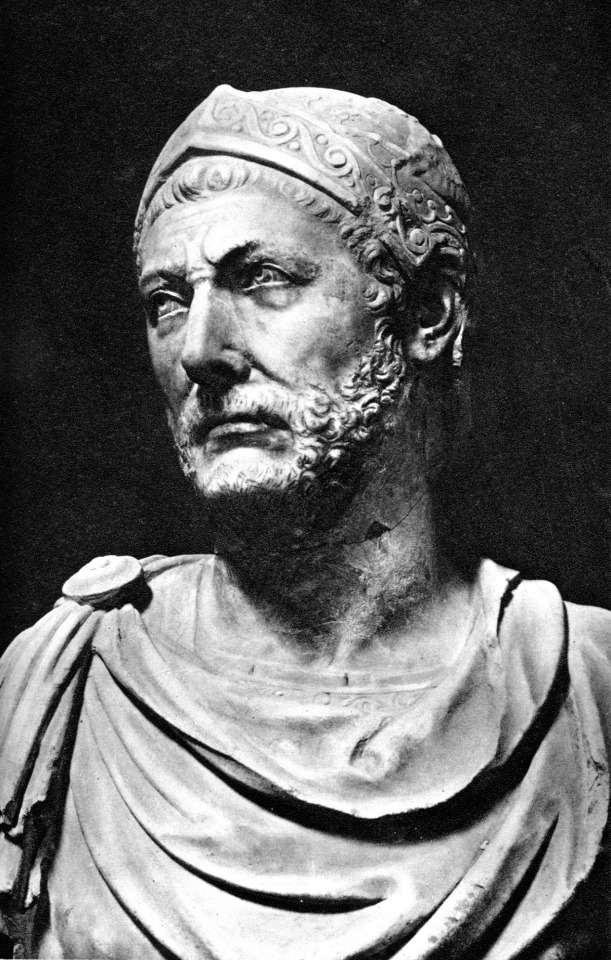
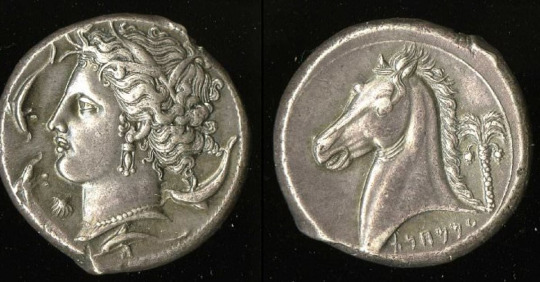

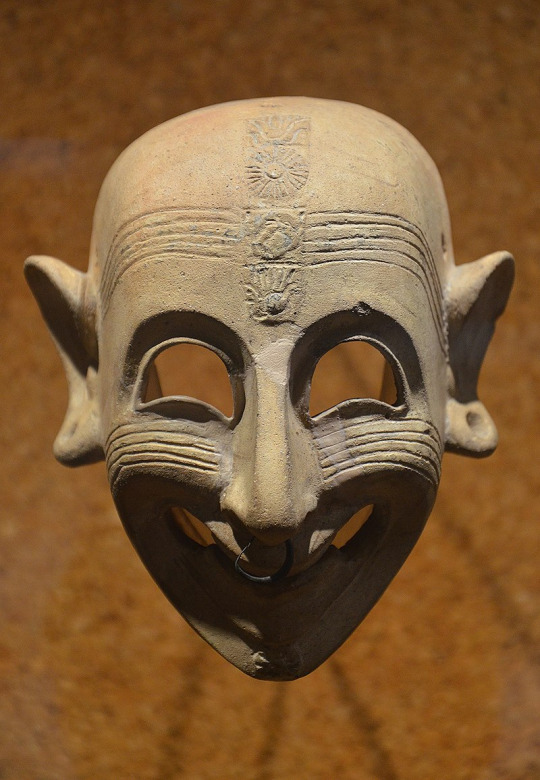

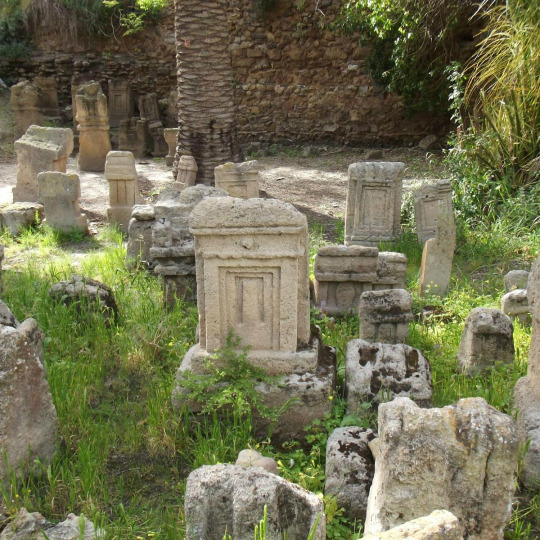

#history#military history#ancient history#ancient world#ancient ruins#ancient carthage#carthage#ancient rome#ancient greece#tunisia#iberia#hannibal#scipio africanus#ancient phoenicia#phoenician#punic wars#sardinia#sicily#corsica#malta#balearic
17 notes
·
View notes
Text
Countries that are no more: Sikh Empire (1799-1849)
Though short lived, this empire was notable for a few reasons. First, it was the last major bastion of native rule on the Indian Subcontinent before a century of unchecked British rule which had already been gradually expanding over the preceding century. Secondly, it was diverse & tolerant in its ethnic and religious composition, not just in the general populace but more uniquely in its administration. Finally, it was notable for the religion of its leaders, perhaps the only time in history where Sikhs reigned atop an empire. This is the Sikh Empire.
Name: In English, the empire is known as the Sikh Empire. In Persian this was translated as Sarkār-i-Khālsa or the Khālasā Rāj in Punjabi. These languages were important administratively within the empire. Essentially to mean empire or kingdom of the Sikhs. Khalsa is a Punjabi term for the Sikh community more broadly and specifically means "pure" as in one professes to follow the Sikh faith and has undergone the Amrit ritual ceremony of initiation, specifically baptism.
Language: The Sikh Empire was notable for its many languages. Persian was its administrative language at court. Persian had been the language of diplomacy, administrative and the high arts from the Middle East to the Indian Subcontinent for centuries in part due to the spread of Islam to India. It was the court language of the greatest Islamic polity in the history of India, the Mughal Empire (1526-1857). Other languages which in the empire included Indo-Aryan languages such as Punjabi which was the dynastic native tongue of the ruling family and various Punjabi dialects which made up the lingua franca of the core territory of the empire. Kashmiri and Dogri were spoken in some parts as well, also Pashto (Pashtun) also known as Afghani. There were numerous others which also took place in its territory in modern India, Pakistan and Afghanistan.
Territory: At its peak, the empire held roughly 200,000 sq miles of territory. The territory was centered in the Punjab region of modern Northwestern India and Eastern Pakistan. It covered territory in the modern states of India, Pakistan, the Afghanistan & Pakistan border and even small parts of Western Tibet in modern China.
Symbols & Mottos: The motto of the empire was ਅਕਾਲ ਸਹਾਇ Akāl Sahāi which is Punjabi for "With God's Grace" and its anthem was ਦੇਗ ਤੇਗ ਫ਼ਤਿਹ Dēġ Tēġ Fatih Punjabi for "Victory to Charity and Arms." The also used a triangled flag called the Nishan Sahib. This flag was used by Sikhs prior to the 1799 establishment of the empire and continued to have use after its 1849 disestablishment. It is usually depicted as an orange inner field with a green outer field with golden trim and patterns both on the green outer field and orange inner field. There were also individual flags for various Sikh, Hindu and Muslim regiments within the army as well. The Muslim ones often sharing similarity with the modern Pakistan flag.
Religion: Sikhism was the dynastic religion and religion of roughly 6-12 percent of the overall population. 50-80 percent of the populace was Muslim and 10-40 percent Hindu. There were also smaller populations of Christians and Jews as well. Religious tolerance was practiced as a matter of policy throughout the empire. Sikhs certainly benefitted from a ruling dynasty that was of their community however with larger populations of Muslims and Hindus among their territory, policies of accommodation and tolerance were practiced to other faiths as well. Likewise Indian and European Christians could practice their faith and rise to important military and government positions and even some Jews featured in the military as well. Promotion within the military and government more broadly had less to do with religion, ethnicity or geographic origin than with merit and personal loyalty.
Currency: The currency of the empire was called Nanak Shahi Sikee, these were metal coins usually of silver composition.
Population: The population was estimated to be roughly 12 million people at its peak in in the late 1830s and early 1840s.
Government: The government could be characterized as a federal monarchy with a later adoption of elements of absolute monarchy. Its origins lie in the Sikh community which started in the Punjab region of the Indian Subcontinent. This region consists of modern Pakistan (mostly) and some of India (remaining portion). It spans the five major rivers west to east (Indus, Jhelum, Chenab, Ravi & Sutlej). Sikhism had its origins and greatest core in the Punjab region among Punjabis. Though it is a relatively young religion by comparison to Hinduism and Islam, elements of overlap and interaction with both of these older faiths have influenced it. Nonetheless, Sikhs faced alternating periods of tolerance and persecution throughout the Mughal Empire and many Sikhs hid in jungles near the Himalayan foothills as refuge from the Muslim Mughals and various local Hindu hill tribal chiefs who persecuted them.
In response to this persecution from their neighbors, Sikhs formed militias to protect their religion community, these militias were called jathas and in turn these formed into a larger Dal Khalsa (Sikh army) circa 1735-1738. in 1748 at Amritsar, India, the most holy city for Sikhs in 1748 these militias were reorganized into a misl which is an Arabic term for equal. These misls became known as the Sikh Confederacy or Misl period (1748-1799). There were twelve sovereign Sikh misls formed and later a Muslim ruled misl which created a federation or confederacy united by Sikhism to preserve and protect their religious faith. There was uneven strength between the misls and some tried to expand at the expense of others, but they still formed a common defense of their community and even held biannual legislative meetings in Amritsar to address matters of the community.
The Mughal Empire suffered major decline in the 18th century following the death of its emperor Aurangzeb in 1707. The combination of a ruined economy from expensive wars, decentralization of power and the expanse of the Hindu oriented Maratha Empire (1674-1818) from the Western Deccan Plateau all contributed to its decline and creation of a power vacuum in parts of India, including the Punjab. To make matters worse, Nader Shah, the Shah of Persia invaded the Mughal Empire in 1739 and sacked the Mughal capital at Delhi. The plundering of riches from the Mughal capital was so great that Persia experienced three years exempt from all internal taxes. In this context the already persecuted Sikhs sought greater mutual defense, though their political autonomy remained relative to their respective misl. Despite the occasion inter-fighting with each other. Other problems came from the Afghan Durrani Empire which grew in the wake of Nader Shah's passing in Iran. The Durrani Empire would expand into Northern India including the Punjab and make the Mughals their vassals especially after defeating the Maratha Empire in 1761 at the Third Battle of Panipat. The Afghans would battle the Sikh Misls many times which aimed to defend themselves in the power vacuum from the Mughal decline.
The founder of the Sikh Empire proper, who united all the thirteen misls was a man named Ranjit Singh (1780-1839) who was of Jat-Punjabi ethnic origin and specifically Jat Sikh ethnoreligious families. His father Maja Singh and grandfather Charat Singh were the founders and chiefs of the Sukerchakia Misl. Ranjit was afflicted with smallpox as a child and left him blind in his left eye and scarred on his body, features which were noted by observers from Europe later in life.
Ranjit's father died when he was 12 and he took over chiefdom of the Sukerchakia Misl which was among the five most power Sikh misls. Through marriage Ranjit had alliances with two of the other top five misls. The Kasur misl near the major city and traditional capital of the Punjab of Lahore was controlled by a Muslim who assisted the Afghans in their invasions of India. Ranjit Singh defeated an Afghan invasion in 1797 in battle. In 1798 another Afghan army was checked by Ranjit Singh through scorched earth tactics.
in 1799 Ranjit Singh took Lahore using a combined 50,000 strong army made from his misl and that of his mother-in-law. This was traditionally dated as the founding of the Sikh Empire as Lahore would serve as its capital but Ranjit Singh would be formally vested as the Maharaja (King) of the Punjab in 1801.
Ranjit Singh held many titles, but the principal ones were Maharaja of the Punjab and Sarkar Khalsaji (Head of the Khalsa) which showed his titular leader status over the Sikh army and other misls. His authority was both geographic in nature and communal-religious in nature (to a degree).
Ranjit Singh would rule and expand the Sikh Empire until his death in 1839. The empire would survive roughly a decade after his demise.
Ranjit Singh was tolerant towards background in his governance and believed in merit and loyalty above all else. He hired Sikhs, Muslims, Hindus and Christians into his military and civil administration. These could also be Indians and Europeans with some French, Italian, Spanish, Russian & German officers taking leadership within his military. Even a few American adventurers such as Josiah Harlan and Alexander Gardner found work within Ranjit Singh's empire. The former Harlan (born to Quakers in Pennsylvania) taking on a governorship and the latter Gardner who was said to be born to a Scottish or Irish (possibly Scots-Irish) fur trader in modern day Wisconsin and had travelled to Central Asia dressed in a turban decked in Scottish tartan pattern joined the Sikh Empire's military where he served as a colonel and commanded the artillery. Ranjit refrained from hiring British officers joining his ranks but still communicated with the British East India Company which was Britain's state sponsored corporation bent on controlling India for its geostrategic and economic benefits. He relented slightly after 1835 and hired some British into his ranks.
Ranjit was secular and tolerant in his rule overall but personally followed Sikhism, he restored Sikh Gurdwaras (temples) and also prayed with Hindus in their own temples and upheld the Hindu sacred protection of cows and prevented their slaughter under punishment by death. Likewise, he had standing orders that his army was never to loot or molest civilians especially when conquering new territory and to not destroy houses of worship. All discipline was to be strictly enforced under his order. Observers noted that Ranjit would increase the salary of those who didn't engage in corruption and slice the nose off of those who were said to misbehave or act corruptly in his administration of state affairs. The mutilation was not only physical discipline but a psychological scar to deter bad behavior and forever mark one as untrustworthy.
The above is the consensus of most accounts, there are some Muslim accounts from the mid-19th century which portray Ranjit's reign as despotic and biased towards Kashmiri Muslims. The overall picture is one of a complex individual but generally agreed upon to be tough and strict at times but also overall pragmatic and not willing to let religious or national background create a personal bias towards their utilization in his administration.
After Ranjit's death the rules of succession weren't clearly established and in quick succession his son, grandson and subsequently two other sons ruled in his wake with his son Duleep Singh reigning the longest from 1843-1849. Duleep would later live in exile in Europe following defeat his by the British.
Military: The Sikh Khalsa Army at its peak in 1839 was roughly 125,000 men strong and it had infantry, cavalry and artillery components. Its origins lied in the Sikh jathas of the late 17th and early 18th centuries which passed onto the Sikh Misl (Confederacy) period of the later 18th century. These were typically cavalry based and engaged in hit and run tactics against the Mughals, Maratha and Afghans. Later Ranjit would modernize the Sikh army along European principles utilizing European and American recruited officers and by purchasing and developing modern weapons.
The military were given performance standards for logistics of troop deployment, maneuver and marksmanship. Likewise, the army was divided into three segments of elite troops, regulars and irregulars. Each with its own infantry, cavalry and artillery component. Even European style medals and awards for merit could be issued, including the Order of Merit with Ranjit's portrait featured on the medal.
Ultimately, the empire's military was a synthesis of modern (19th century) Western organization, discipline and technology with the original Indian cavalry hit and tactics and methods of its Sikh jatha forebearers.
Its infantry composition was not just Western officers and Sikhs of the Punjab for originally Sikhs looked down upon the infantry and so Afghans, Dogras and Nepali Gurkhas among others filled the infantry ranks. In time Punjabi Sikhs joined its ranks too. It reached over 50,000 in strength.
The cavalry reached a strength of 10,000 strong and consisted of Sikhs mainly, given their traditional use of cavalry dating back to jatha and misl eras preceding the 19th century.
The artillery was made up of 5,000 gunners at its peak with heavy cannons pulled by elephants, medium cannon pulled by oxen, light cannon pulled by horses and some mixed guns pulled by camels.
The traditional enemies of the empire in war consisted of the Afghans who presented its greatest threat from the West, the Sikhs pushed the Afghans from the Punjab and pressed into Afghanistan itself before being checked at the border, this demarcated the empire's western limit.
Other enemies included the Kingdom of Nepal which the Sikhs defeated. The Sikh Empire and its vassal the Dogra Rajput also fought against the Chinese Qing Empire and its vassal Tibet which resulted into a military stalemate but saw brief occupation of parts of Western Tibet in the early 1840s.
Its terminal enemy was the British East India Company which would face and defeat the Sikh Empire in two wars (1845-1846 and 1848-1849). The second war would lead to the British annexation of the Punjab and formal cessation of the Sikh Empire.
Lifespan: The empire's origins date back to the 18th century formation of the Sikh Misls within the Punjab and its gradual union under Ranjit Singh. Formally dated to start his 1799 capture of Lahore. In 1801 Ranjit was formally coronated as Maharaja of the Punjab.
Over the next several decades the empire would expand in several directions with the gradual defeat of the Afghans and Marathas who warred in the vicinity of the Punjab.
1809 saw Ranjit Singh sign a treaty of friendship with the British East India Company (EIC). This treaty requested Sikh help against the French should they attack EIC possessions elsewhere in India. Also, the Sikhs were not to pursue conquest south of the Sutlej River which acted as a border between Sikh and British spheres of influence. In reality this bought Ranjit time to focus on expanding against the Afghans in Punjab and Kashmir.
The empire expanded well into the fall reaches beyond Kashmir and Jammu and gained vassals in the Ladakh region. Likewise, the Sikhs would go onto fight the Nepalese (Gurkhas) and check their advance towards Kashmir.
The empire's lifespan very much mirrored with its founder Ranjit Singh's. Ranjit Singh had unified the Sikh Misls of the Punjab through alliance and conquest, and he driven out the Afghan invaders and expanded the Sikh polity he created to vast territories with tributary states of its own. He also gained riches from conquest, meritorious tax collections and trade agreements. Financed religious temple constructions of various faiths and modernized the military. Yet while his empire was on the surface strong, it was to peak with his demise in 1839. His health had declined in the 1830s due to a stroke and alcoholism as noted by many observers. He was said to treat his chronic pain with alcohol and opium though conversely, he refused to eat beef or smoke and was somewhat health conscious. Ultimately it was said he died of a combination of stroke and his failing liver due to his excessive alcohol consumption. He was cremated and four of his Hindu wives are said to have committed sati (ritualistic devotional suicide of widows by casting oneself onto the husband's burning funeral pyre) in a final act of martial devotion to their departed spouse.
In Ranjit Singh's wake, his sons and grandsons found themselves competing for succession, their were deep internal divisions and who to support and in quick order a son, grandson and two more sons of Ranjit took control with the youngest son Duleep Singh taking "control" at age five in 1843 and he would nominally reign for six years. He had a regency under his mother Jind Kaur for the years of his rule.
Following Ranjit's death, the internal division over support of his successors along with the ruling elite of the army which saw itself as the true extension of state and religion was convinced to go to war with the British in 1845-46. The Sikh administrators were said by the British to undermine the plurality and tolerance under Ranjit Singh towards other religions pushing for a Sikh supremacy in all matters. In response, the British began building a military presence along the Sutlej River, viewed as a provocation by the Sikhs. The British stated it was defensive in nature given what they saw as increasing chaos in the Sikh Empire. However, the Sikhs contend it was intended as offensive in nature to goad the empire into war. Whatever the varied causes war began in late 1845 and concluded with British victory in 1846. The result was the partial subjugation of the Sikh Empire with some territory and monies being ceded to the British. Also, separately Kashmir would be sold the to the princely state of Jammu (under British sponsorship).
Tensions between both the Sikhs and British remained which culminated in a second war in 1848-49 and saw the Sikhs fight valiantly but once more defeated. In April 1849 at Lahore, the British annexed the Punjab up to the fortress of Peshawar, gateway to the Khyber Pass towards Afghanistan. The British East India Company turned the Sikh Empire into the Punjab and North-West Frontier Province regions in modern Pakistan and India.
The British were impressed with the military prowess of the Sikhs, in part due to the religious devotion of its troops and in part due to the modernization efforts of Ranjit Singh and his able commanders. The conquest of the Sikh Empire served as the removal of last major obstacle to British rule over the whole of India. Recognizing the prowess of Sikh troops, the British were quick to incorporate them into the British Indian Army. A role they would play from the 1850s including during the Indian Rebellion of 1857 until World War II and the eventual granting of independence to India and Pakistan.
Duleep Singh was brought up in exile in Europe following the British annexation of the Sikh Empire, his teenage years spent in Scotland. He would go onto have family there and the Crown Jewels of the UK now in possession of the British Royal Family would incorporate some of its jewels taken from the Sikh Empire's Duleep Singh. Queen Victoria received the Koh-i-noor diamond which is set in the Queen Mother's crown to this day. The diamond dates back to the Mughal Empire and changed hands with the Persian looting of Delhi to Nader Shah before ending up in the Durrani Empire of Afghanistan and then the Sikh Empire under Ranjit Singh and finally with the British as a gift to Queen Victoria as it was formally surrendered to the EIC and then gifted to the queen. The modern governments of India, Pakistan Afghanistan (including the Taliban) and Iran have all demanded its return to them respectively, a demand which Britain's government has rejected. In 2018, India's Supreme Court & the Archeological Survey of India supported Britain's legal claim, stating the Treaty of Lahore in 1849 secured it through voluntary surrender, stating it was neither stolen nor taken by force, so it remains with the British Crown despite ongoing controversy.
Though the Sikh Empire lasted only half a century for the reasons outlined above, it is a polity worthy of study. First and foremost, its historical place in India as the last major bastion of independent native resistance before total British rule has endeared it to some Indian and Pakistani nationalists and international anticolonial narratives. The British recognized through its occasional defeats in battle at the hands of the Sikhs that they were a force to be reckoned with. Both sides earned a begrudging martial respect for the other following the two wars they fought. The British were keen to utilize the Sikhs for their own military, for which they served over the next century in many campaigns worldwide. Outside from its place in narratives of native resistance to colonial rule and its well-founded military prowess. The empire is relatively unique for its synthesis of administrative help from both within India and the West. Much of this can be chalked up to Ranjit Singh's personally pragmatic and disciplined approach to governance. Quite simply put Ranjit Singh wanted what he thought were the most qualified leaders regardless of ethnic or cultural background. Their merit as modernizers and reformers coupled with personal loyalty were prized above religious or ethnic affinity. Finally, the Sikh Empire is noteworthy simply for being to date the only Sikh run imperial polity in world history. Though it was the successor of the Sikh Misls which had a unified common defense, these misls were essentially politically independent in their own right rather than a singular polity. The Sikh Empire is the only time in history that a ruling dynasty over a vast territorial expanse came from practitioners of that religion and it was supported by an army and administration centered around that faith as well.
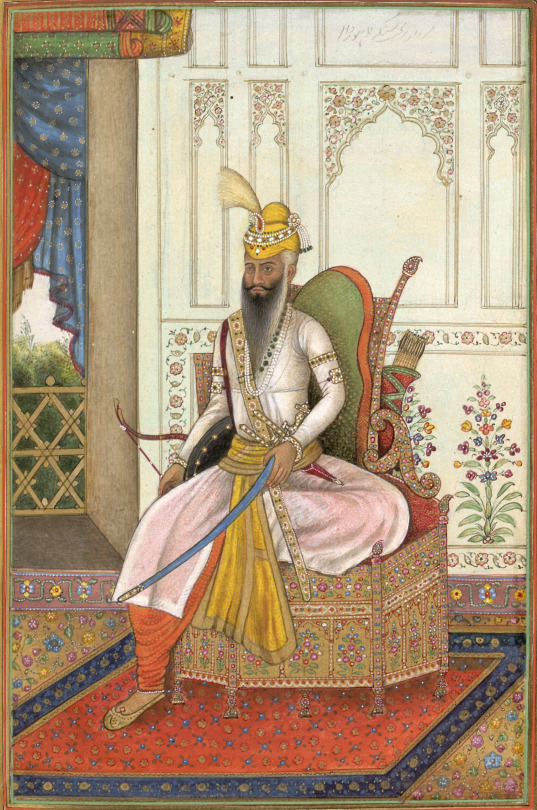


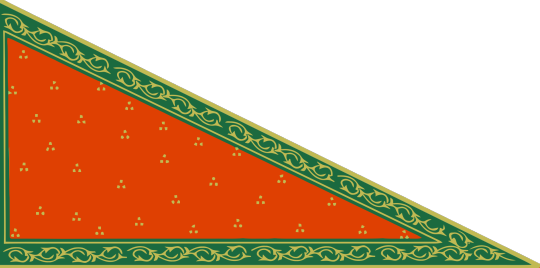
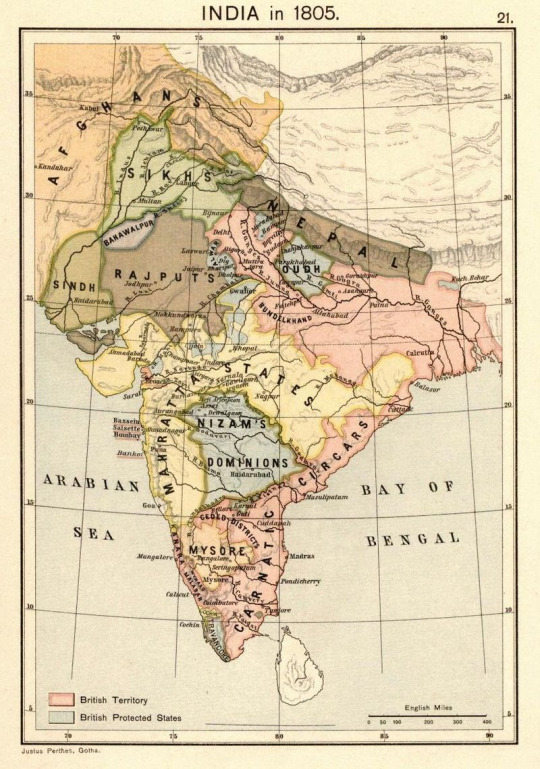
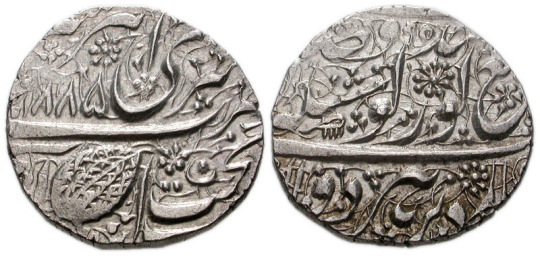
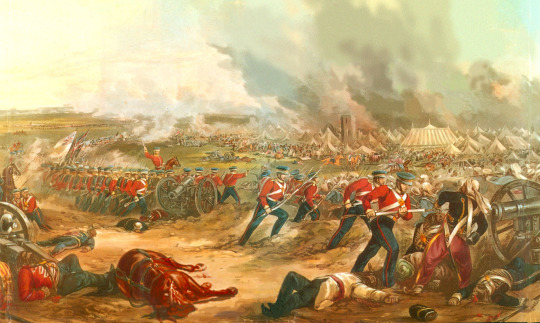
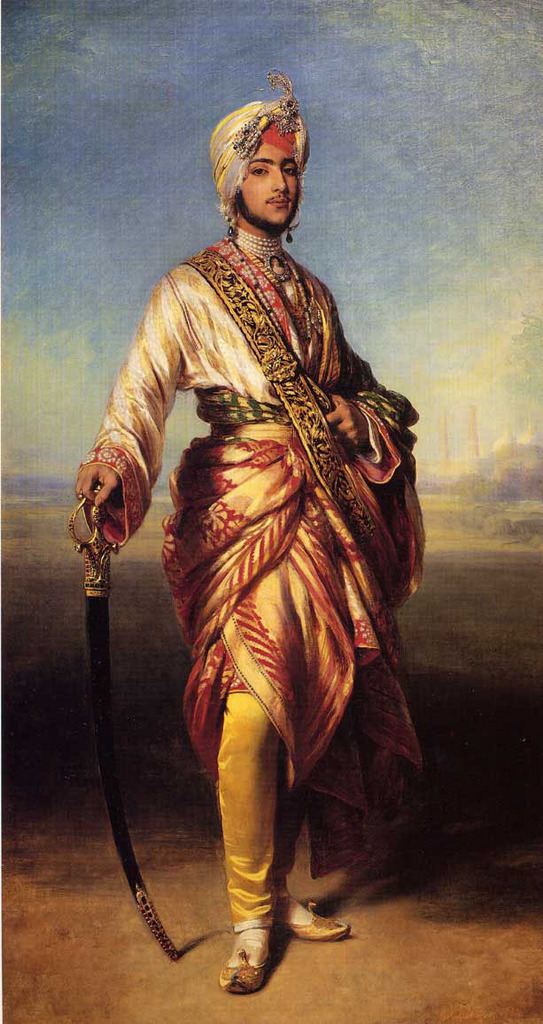
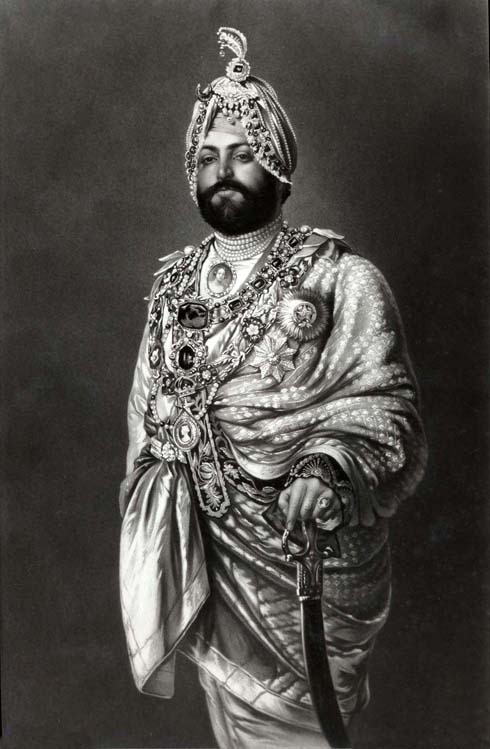
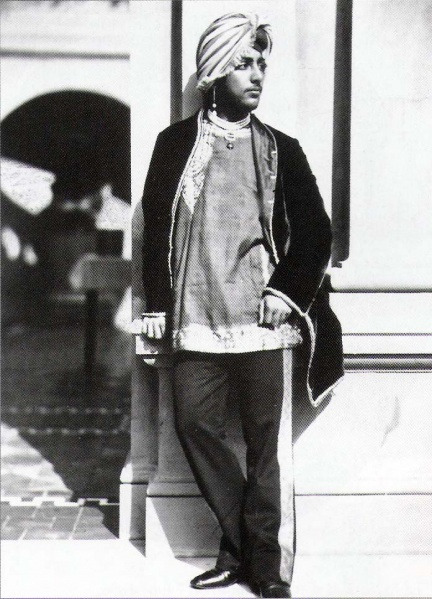

#military history#history#sikh#sikhism#india#british east india company#british imperialism#british empire#19th century#victorian era#ranjit singh#punjab#pakistan#18th century#mughal empire#maratha empire#queen victoria#british india
8 notes
·
View notes
Text
Countries that are no more: Achaemenid Empire (550BC-330BC)
It was not the first empire of Iranian peoples, but it arose as probably the greatest in terms of influence and became the measure by which all subsequent Iranian empires tended to compare themselves and its influence on culture, government & civil infrastructure would influence others beyond the span of its territory and the span of time. This is the Achaemenid Empire.
Name: In Old Persian it was known as Xšāça or the "The Kingdom or the Empire", it was named the Achaemenid Empire by later historians. Named after the ruling dynasty established by its founder Cyrus the Great who cited the name of his ancestor Haxāmaniš or Achaemenes in Greek as progenitor of the dynasty. It is sometimes also referred to as the First Persian Empire. The Greeks simply referred to it as Persia, the name which stuck for the geographic area of the Iranian plateau well into the modern era.
Language: Old Persian & Aramaic were the official languages. With Old Persian being an Iranian language that was the dynastic language of the Achaemenid ruling dynasty and the language of the Persians, an Iranian people who settled in what is now the southwestern Iranian plateau or southwest Iran circa 1,000 BC. Aramaic was a Semitic language that was the common and administrative language of the prior Neo-Assyrian & Neo-Babylonian Empires which centered in Mesopotamia or modern Iraq, Syria & Anatolian Turkey. After the Persian conquest of Babylon, the use of Aramaic remained the common tongue within the Mesopotamian regions of the empire, eventually becoming a lingua franca across the land. As the empire spread over a vast area and became increasingly multiethnic & multicultural, it absorbed many other languages among its subject peoples. These included the Semitic languages Akkadian, Phoenician & Hebrew. The Iranian language of Median among other regional Iranian languages (Sogdian, Bactrian etc). Various Anatolian languages, Elamite, Thracian & Greek among others.
Territory: 5.5 million kilometers squared or 2.1 million square miles at its peak circa 500BC. The Achaemenid Empire spanned from southern Europe in the Balkans (Greece, Bulgaria, European Turkey) & northwest Africa (Egypt, Libya & Sudan) in the west to its eastern stretches in the Indus Valley (Pakistan) to parts of Central Asia in the northeast. It was centered firstly in the Iranian Plateau (Iran) but also held capitals in Mesopotamia (Iraq). Territory was also found in parts of the Arabian Peninsula & the Caucausus Mountains.
Symbols & Mottos: The Shahbaz or Derafsh Shahbaz was used as the standard of Cyrus the Great, founder of the empire. It depicts a bird of prey, typically believed to be a falcon or hawk (occasionally an eagle) sometimes rendered gold against a red backdrop and depicts the bird holding two orbs in its talons and adorned with an orb likewise above its head. The symbolism was meant to depict the bird guiding the Iranian peoples to conquest and to showcase aggression & strength coupled with dignity. The imperial family often kept falcons for the pastime of falconry.
Religion: The ancient Iranian religion of Zoroastrianism served as the official religion of the empire. It was adopted among the Persian elite & and had its unique beliefs but also helped introduce the concept of free-will among its believers, an idea to influence Judaism, Christianity & Islam in later centuries. Despite this official religion, there was a tolerance for local practices within the subject regions of the empire. The ancient Mesopotamian religion in Babylon & Assyria, Judaism, the Ancient Greek & Egyptian religions & Vedic Hinduism in India was likewise tolerated as well. The tolerance of the Achaemenids was considered a relative hallmark of their dynasty from the start. Famously, in the Old Testament of the Bible it was said that it was Cyrus the Great who freed the Jews from their Babylonian captivity and allowed them to return to their homeland of Judea in modern Israel.
Currency: Gold & silver or bimetallic use of coins became standard within the empire. The gold coins were later referred to as daric and silver as siglos. The main monetary production changes came during the rule of Darius I (522BC-486BC). Originally, they had followed the Lydian practice out of Anatolia of producing coins with gold, but the practice was simplified & refined under the Achaemenids.
Population: The estimates vary ranging from a low end of 17 million to 35 million people on the upper end circa 500BC. The official numbers are hard to determine with certainty but are generally accepted in the tens of millions with the aforementioned 17-35 million being the most reasonable range based on available sources.
Government: The government of the Achaemenid Empire was a hereditary monarchy ruled by a king or shah or later referred to as the ShahanShah or King of Kings, this is roughly equivalent to later use of the term Emperor. Achaemenid rulers due the unprecedented size of their empire held a host of titles which varied overtime but included: King of Kings, Great King, King of Persia, King of Babylon, Pharaoh of Egypt, King of the World, King of the Universe or King of Countries. Cyrus the Great founded the dynasty with his conquest first of the Median Empire and subsequently the Neo-Babylonians and Lydians. He established four different capitals from which to rule: Pasargadae as his first in Persia (southwest central Iran), Ecbatana taken from the Medians in western Iran's Zagros Mountains. The other two capitals being Susa in southwest Iran near and Babylon in modern Iraq which was taken from the Neo-Babylonians. Later Persepolis was made a ceremonial capital too. The ShahanShah or King of Kings was also coupled with the concept of divine rule or the divinity of kings, a concept that was to prove influential in other territories for centuries to come.
While ultimate authority resided with the King of Kings and their bureaucracy could be at times fairly centralized. There was an expansive regional bureaucracy that had a degree of autonomy under the satrapy system. The satraps were the regional governors in service to the King of Kings. The Median Empire had satraps before the Persians but used local kings they conquered as client kings. The Persians did not allow this because of the divine reverence for their ShahanShah. Cyrus the Great established governors as non-royal viceroys on his behalf, though in practice they could rule like kings in all but name for their respective regions. Their administration was over their respective region which varied overtime from 26 to 36 under Darius I. Satraps collected taxes, acted as head over local leaders and bureaucracy, served as supreme judge in their region to settle disputes and criminal cases. They also had to protect the road & postal system established by the King of Kings from bandits and rebels. A council of Persians were sent to assist the satrap with administration, but locals (non-Persian) could likewise be admitted these councils. To ensure loyalty to the ShahanShah, royal secretaries & emissaries were sent as well to support & report back the condition of each satrapy. The so called "eye of the king" made annual inspections of the satrapy to ensure its good condition met the King of Kings' expectations.
Generals in chief were originally made separate to the satrap to divide the civil and military spheres of government & were responsible for military recruitment but in time if central authority from the ShahanShah waned, these could be fused into one with the satrap and general in chiefs becoming hereditary positions.
To convey messages across the widespread road system built within the empire, including the impressive 2,700 km Royal Road which spanned from Susa in Iran to Sardis in Western Anatolia, the angarium (Greek word) were an institution of royal messengers mounted on horseback to ride to the reaches of the empire conveying postage. They were exclusively loyal to the King of Kings. It is said a message could be reached to anywhere within the empire within 15 days to the empire's vast system of relay stations, passing message from rider to rider along its main roads.
Military: The military of the Achaemenids consisted of mostly land based forces: infantry & cavalry but did also eventually include a navy.
Its most famous unit was the 10,000-man strong Immortals. The Immortals were used as elite heavy infantry were ornately dressed. They were said to be constantly as 10,000 men because for any man killed, he was immediately replaced. Armed with shields, scale armor and with a variety of weapons from short spears to swords, daggers, slings, bows & arrows.
The sparabara were the first line of infantry armed with shields and spears. These served as the backbone of the army. Forming shield walls to defend the Persian archers. They were said to ably handle most opponents and could stop enemy arrows though their shields were vulnerable to enemy spears.
There was also the takabara light infantry and though is little known of them it seems they served as garrison troops and skirmishers akin to the Greek peltast of the age.
The cavalry consisted of four distinct groups: chariot driven archers used to shoot down and break up enemy formations, ideally on flat grounds. There was also the traditional horse mounted cavalry and also camel mounted cavalry, both served the traditional cavalry functions and fielded a mix of armor and weapons. Finally, there was the use of war elephants which were brought in from India on the empire's eastern reaches. These provided archers and a massive way to physically & psychologically break opposing forces.
The navy was utilized upon the empire's reaching the Mediterranean and engaged in both battles at sea and for troop transport to areas where troops needing deploying overseas, namely in Greece.
The ethnic composition of Achaemenid military was quite varied ranging from a Persian core with other Iranian peoples such as the Medians, Sogdian, Bactrians and Scythians joining at various times. Others including Anatolians, Assyrians, Babylonians, Anatolians, Indians, Arabs, Jews, Phoenicians, Thracians, Egyptians, Ethiopians, Libyans & Greeks among others.
Their opponents ranged from the various peoples they conquered starting with the Persian conquest of the Medians to the Neo-Babylonians, Lydians, Thracians, Greeks, Egyptians, Arabs & Indians and various others. A hallmark of the empire was to allow the local traditions of subjugated areas to persist so long as garrisons were maintained, taxes were collected, local forces provided levies to the military in times of war, and they did not rebel against the central authority.
Economy: Because of the efficient and extensive road system within the vast empire, trade flourished in a way not yet seen in the varied regions it encompassed. Tax districts were established with the satrapies and could be collected with relative efficiency. Commodities such as gold & jewels from India to the grains of the Nile River valley in Egypt & the dyes of the Phoenicians passed throughout the realm's reaches. Tariffs on trade & agricultural produce provided revenue for the state.
Lifespan: The empire was founded by Cyrus the Great circa 550BC with his eventual conquest of the Median & Lydian Empires. He started out as Cyrus II, King of Persia a client kingdom of the Median Empire. His reign starting in 559BC. Having overthrown and overtaken the Medians, he turned his attention Lydia and the rest of Anatolia (Asia Minor). He later attacked the Eastern Iranian peoples in Bactria, Sogdia and others. He also crossed the Hindu Kush mountains and attacked the Indus Valley getting tribute from various cities.
Cyrus then turned his attention to the west by dealing with the Neo-Babylonian Empire. Following his victory in 539BC at the Battle of Opis, the Persians conquered the Babylonia with relative quickness.
By the time of Cyrus's death his empire had the largest recorded in world history up to that point spanning from Anatolia to the Indus.
Cyrus was succeeded by his sons Cambyses II and Bardiya. Bardiya was replaced by his distant cousin Darius I also known as Darius the Great, whose lineage would constitute a number of the subsequent King of Kings.
Darius faced many rebellions which he put down in succession. His reign is marked by changes to the currency and the largest territorial expansion of the empire. An empire at its absolute zenith. He conquered large swaths of Egypt, the Indus Valley, European Scythia, Thrace & Greece. He also had exploration of the Indian Ocean from the Indus River to Suez Egypt undertaken.
The Greek kingdom of Macedon in the north reaches of the Hellenic world voluntarily became a vassal of Persia in order to avoid destruction. This would prove to be a fateful first contact with this polity that would in time unite the Greek-speaking world in the conquest of the Achaemenid Empire. However, at the time of Darius I's the reign, there were no early indications of this course of events as Macedon was considered even by other Greek states a relative backwater.
Nevertheless, the Battle of Marathon in 490BC halted the conquest of mainland Greece for a decade and showed a check on Persia's power in ways not yet seen. It is also regarded as preserving Classical Greek civilization and is celebrated to this day as an important in the annals of Western civilization more broadly given Classical Greece & in particular Athens's influence on western culture and values.
Xerxes I, son of Darius I vowed to conquer Greece and lead a subsequent invasion in 480BC-479BC. Xerxes originally saw the submission of northern Greece including Macedon but was delayed by the Greeks at the Battle of Thermopylae, most famously by Spartan King Leonidas and his small troop (the famed 300). Though the Persians won the battle it was regarded as a costly victory and one that inspired the Greeks to further resistance. Though Athens was sacked & burnt by the Persians, the subsequent victories on sea & land at Salamis & Plataea drove the Persians back from control over Greece. Though war would rage on until 449BC with the expulsion of the Persians from Europe by the Greeks.
However, the Greeks found themselves in a civil war between Athens & Sparta and Persia having resented the Athenian led coalition against their rule which had expelled them from Europe sought to indirectly weaken the Greeks by supporting Greek factions opposed to Athens through political & financial support.
Following this reversal of fortune abroad, the Achaemenid Empire not able to regain its foothold in Europe, turned inward and focused more on its cultural development. Zoroastrianism became the de-facto official religion of the empire. Additionally, architectural achievements and improvements in its many capitals were undertaken which displayed the empire's wealth. Artaxerxes II who reigned from 405BC-358BC had the longest reign of any Achaemenid ruler and it was characterized by relative peace and stability, though he contended with a number of rebellions including the Great Satraps Revolt of 366BC-360BC which took place in Anatolia and Armenia. Though he was successful in putting down the revolt. He also found himself at war with the Spartans and began to sponsor the Athenians and others against them, showcasing the ever dynamic and changing Greco-Persian relations of the time.
Partially for safety reasons, Persepolis was once again made the capital under Artaxerxes II. He helped expand the city and create many of its monuments.
Artaxerxes III feared the satraps could no longer be trusted in western Asia and ordered their armies disbanded. He faced a campaign against them which suffered some initial defeats before overcoming these rebellions, some leaders of which sought asylum in the Kingom of Macedon under its ruler Philip II (father of Alexander the Great).
Meanwhile, Egypt had effectively become independent from central Achaemenid rule and Artaxerxes III reinvaded in around 340BC-339BC. He faced stiff resistance at times but overcame the Egyptians and the last native Egyptian Pharaoh Nectanebo II was driven from power. From that time on ancient Egypt would be ruled by foreigners who held the title Pharaoh.
Artaxerxes III also faced rebellion from the Phoenicians and originally was ejected from the area of modern coastal Lebanon, Syria & Israel but came back with a large army subsequently reconquered the area including burning the Phoenician city of Sidon down which killed thousands.
Following Artaxerxes III's death his son succeeded him but a case of political intrigue & dynastic murder followed. Eventually Darius III a distant relation within the dynasty took the throne in 336BC hoping to give his reign an element of stability.
Meanwhile in Greece, due to the military reforms and innovations of Philip II, King of Macedon, the Greek speaking world was now unified under Macedon's hegemony. With Philip II holding the title of Hegemon of the Hellenic League, a relatively unified coalition of Greek kingdoms and city-states under Macedon premiership that formed to eventually invade Persia. However, Philip was murdered before his planned invasion of Asia Minor (the Achaemenid's westernmost territory) could commence. His son Alexander III (Alexander the Great) took his father's reforms and consolidated his hold over Greece before crossing over to Anatolia himself.
Darius III had just finished reconquering some rebelling vestiges of Egypt when Alexander army crossed over into Asia Minor circa 334BC. Over the course of 10 years Alexander's major project unfolded, the Macedonian conquest of the Persian Empire. He famously defeated Persians at Granicus, Issus and Gaugamela. The latter two battles against Darius III in person. He took the King of Kings family hostage but treated them well while Darius evacuated to the far eastern reaches of his empire to evade capture. He was subsequently killed by one of his relatives & satraps Bessus, whom Alexander eventually had killed. Bessus had declared himself King of Kings though this wasn't widely recognized and most historians regard Darius III, the last legitimate ShahanShah of Achaemenids.
Alexander had taken Babylon, Susa & Persepolis by 330BC and effectively himself was now ruler of the Persian Empire or at least its western half. In addition to being King of Macedon & Hegemon of the Hellenic League, he gained the titles King of Persia, Pharaoh of Egypt & Lord of Asia. Alexander would in time eventually subdue the eastern portions of the Achaemenid realm including parts of the Indus Valley before turning back to Persia and Babylon where he subsequently became ill and died in June 323BC at age 32. Alexander's intentions it appears were never to replace the Achaemenid government & cultural structure, in fact he planned to maintain and hybridize it with his native Greek culture. He was in fact an admirer of Cyrus the Great (even restoring his tomb after looting) & adopted many Persian customs and dress. He even allowed the Persians to practice their religion and had Persian and Greeks start to serve together in his army. Following his death and with no established successor meant the empire he established which essentially was the whole Achaemenid Empire's territory in addition to the Hellenic world fragmented into different areas run by his most trusted generals who established their own dynasties. The Asian territories from Anatolia to the Indus (including Iran and Mesopotamia) gave way to the Hellenic ruled Seleucid Empire while Egypt became the Hellenic ruled Ptolemaic Kingdom. The synthesis of Persian and Greek cultures continued in the Seleucid and Greco-Bactrian kingdoms of antiquity.
The Achaemenid Empire lasted for a little over two centuries (550BC-330BC) but it casted a long shadow over history. Its influence on Iran alone has persisted into the modern age with every subsequent Persian Empire claiming to be its rightful successor from the Parthian & Sasanian Empires of pre-Islamic Iran to the Safavids of the 16th-18th century and the usage of the title Shah until the last Shah's ejection from power in the 1979 Islamic Revolution. Even the modern Islamic Republic of Iran uses Achaemenid imagery in some military regiments and plays up its importance in tourism and museums as a source of pride to Persian (Farsi) & indeed Iranian heritage. Likewise, its form of governance and the pushing of the concept of divine rights of kings would transplant from its Greek conquerors into the rest of Europe along with various other institutions such as its road & mail system, tax collection & flourishing trade. Its mix of centralized & decentralized governance. Its religious & cultural tolerance of local regions even after their conquest would likewise serve as a template for other empires throughout history too. The Achaemenid Empire served as a template for vast international & transcontinental empires that would follow in its wake & surpass its size & scope of influence. However, it is worth studying for in its time, it was unprecedented, and its innovations so admired by the likes of Alexander the Great and others echo into the modern era.
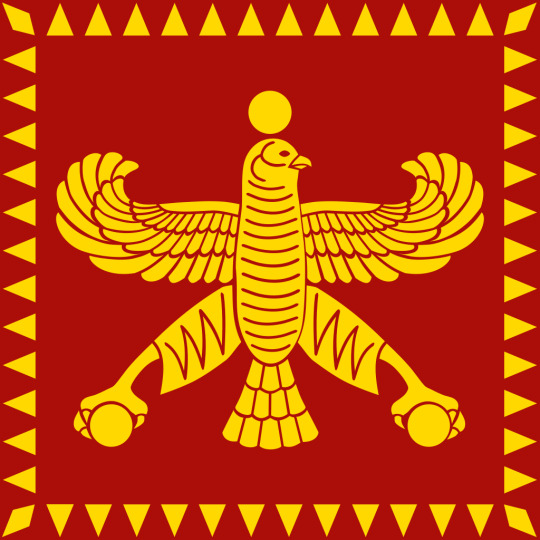
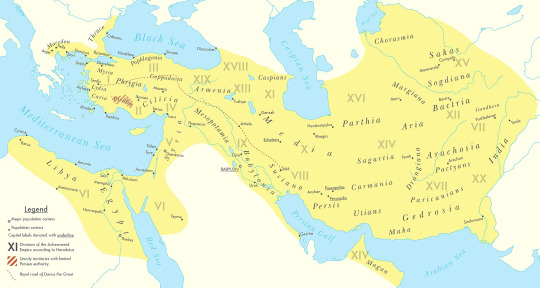

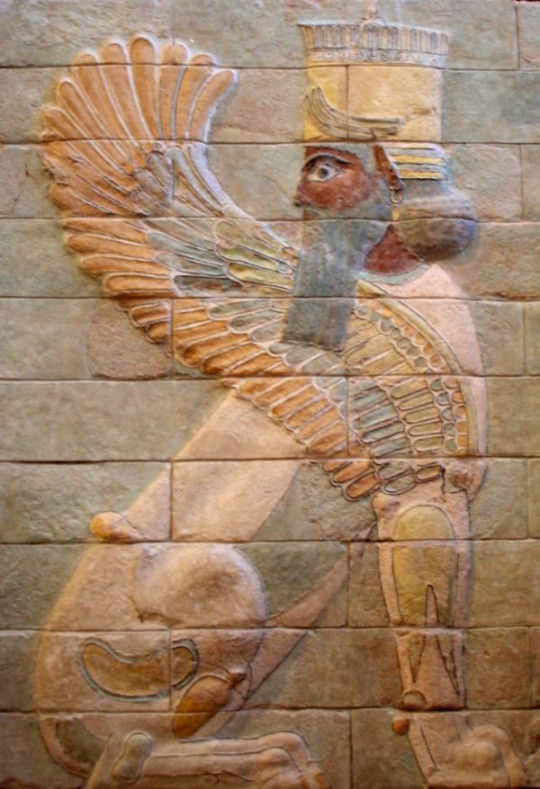


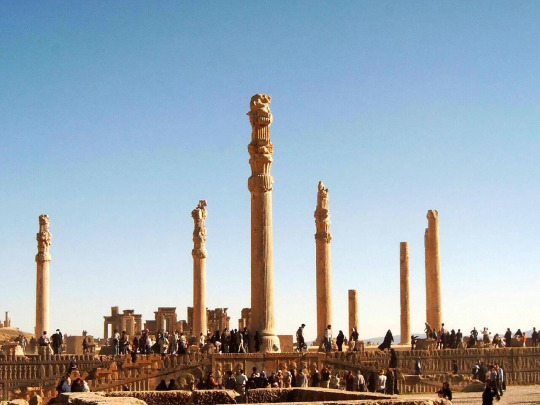
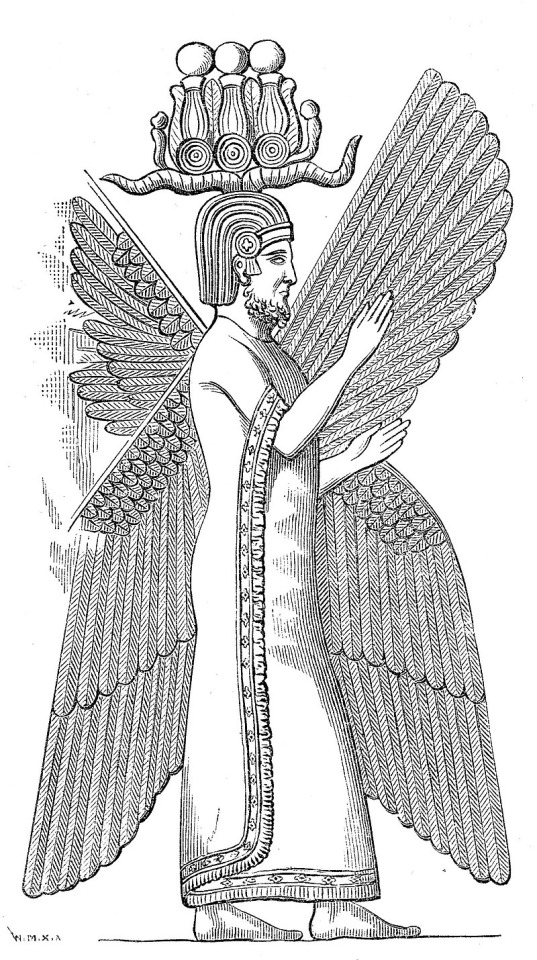
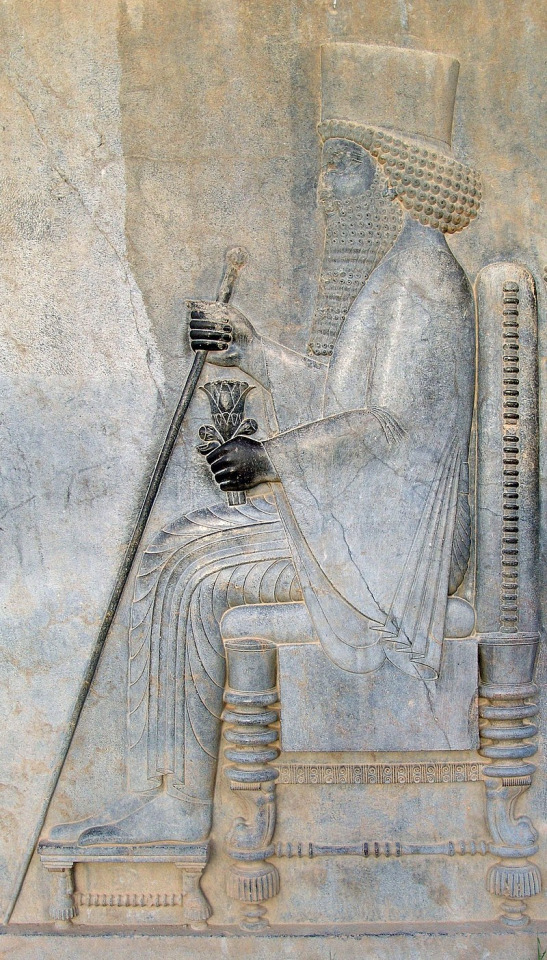


#military history#antiquity#iran#greece#ancient greece#classical greece#ancient ruins#ancient iran#ancient persia#achaemenid#persia#zoroastrianism#alexander the great#cyrus the great#xerxes#artwork#government#history#persian empire#ancient egypt
115 notes
·
View notes
Text
Countries that are no more: Republic of Venice (697AD-1797AD)
The first in a series I hope to feature on providing high level overviews of countries that existed and were influential to history or obscure and lost to most memory in time. The first up is the Republic of Venice.
Name: Serenisma Republega de Venesia (Venetian). In English this translates to the state's official name The Most Serene Republic of Venice. Also referred to as the Venetian Republic, Republic of Venice or just Venice.
Language: The official languages were the Romance languages of Latin, Venetian & later Italian. The regional dialect of Vulgar Latin in Northeastern Italy known as Veneto was the original language of Venice. This evolved in Venetian which was attested to as a distinct language as early as the 13th century AD. Venetian became the official language and lingua franca of the everyday Venetians and across parts of the Mediterranean although Latin would still be used in official documents and religious functions. Overtime, modern Italian was spoken in Venice though the Venetian language remains technically a separate language in Italy's Veneto region and the surrounding areas to this day.
Minority languages across the republic's territory included various Romance languages such as Lombard, Friulian, Ladin, Dalmatian and non-romance languages such as Albanian, Greek & Serbo-Croatian.
Territory: The republic was centered on the city of Venice founded in the Venetian lagoon on the north end of the Adriatic Sea to the northeast coast of the Italian peninsula. It also included the surrounding regions of mainland northeast Italy in the regions of Veneto and Friuli and parts of Lombardy. This became known as the terraferma or the mainland holdings of the republic. It also possessed overseas holdings in modern day Croatia, Slovenia, Montenegro, Albania, Greece & Cyprus.
Symbols & Mottos: The main symbol of Venice was its flag which had the famed Winged Lion of St. Mark. This represented the republic's patron saint, St. Mark. Mark the Evangelist after whom the Gospel of Mark in the New Testament in the Bible is named. Mark's body and holy relics were taken by Venice and said to be housed in the Basilica di San Marco (St. Mark's Basilica) in Venice itself. Variations of this flag differed during times of peace & war. During peace the winged lion is seen holding an open book and during war flags depicted the lion with its paw upon a bible and an upright sword held in another paw.
The republic's motto in Latin was "Pax tibi Marce, evangelista meus" or in English "Peace be to you Mark, my evangelist."
Religion: Roman Catholicism was the official religion of the state but Venice did have minorities of Eastern Orthodox & Protestant (usually foreign) Christian denominations at times in its territory and it also had small populations of Jews and Muslims to be found in Greek and Albanian territories during the wars with the Ottoman Empire.
Currency: Venetian ducat and later the Venetian lira.
Population: Though population varied overtime for the republic due to a variety of factors such as war & changing territory and disease & its subsequent effects. There was rough population recorded of 2.3 million people across all of its holdings in the mid sixteenth century (circa 1550-1560). The vast majority of its population was found in the terraferma of northern Italy and the city of Venice itself with its concentrated population on the islands within the Venetian Lagoon. The Greek island of Crete and the island of (Greek speaking) Cyprus were the most populous overseas possessions of the republic's territory. The rest of the population was found its various holdings in the Balkans mostly along the Adriatic coastline.
Government: The republic followed a complex mixed model of government. Essentially it could be characterized as a mixed parliamentary constitutional republic with a mercantile oligarchy ruling over it in practice. It had no formal written constitution, and this led to a degree of evolution without exactly defined roles often in reaction to happenings in its history. The resulting government became more complex overtime as institutions became increasingly fragmented in their size, scope and duties, some almost obsolete but still retained and others not fully defined. Yet, the republic managed to function quite well for most of its history. It incorporated elements of oligarchy, monarchy & limited democracy.
It's head of state and government was known as the Doge which is akin to the term of Duke. Though this similarity of name ends there. The Doge was neither similar to a duke in the modern sense nor was it meant as a hereditary position. The doge was rather a lifetime appointment much like the Pope for the Roman Catholic Church. Furthermore, doges were elected by the ruling elite of Venice, namely its wealthy oligarchy merchant class. The doge didn't have well defined & precise powers throughout the republic's 1,100-year history. It varied from great autocracy in the early parts of the republic to increasing regulation and restriction by the late 13th century onward. Though the doge always maintained a symbolic and ceremonial role throughout the republic's history. Some doges were forcibly removed from power and post-1268 until a new doge could be elected, the republic's rule transferred to the most senior ducal counsellor with the style of "vicedoge". After a doge's death following a commission was formed to study the doge's life and review it for moral and ethical transgressions and placed judgment upon him posthumously. If the commission found the deceased doge to have transgressed, his estate could be found liable and subject to fines. The doge was given plenty of ceremonial roles such as heading the symbolic marriage of Venice to the sea by casting a marriage ring into the sea from the doge's barge (similar to a royal yacht). Additionally, the doge was treated in foreign relations akin to a prince. It's titles and styles include "My Lord the Doge", "Most Serene Prince" and "His Serenity". The doge resided in the ducal palace (Palazzo Ducale) or Doge's Palace on the lagoonfront in Venice next St. Mark's Basilica and St. Mark's Square.
While the doge remained the symbolic and nominal head of the government, the oligarchy remained supreme overall. The supreme political organ was the 480-member Great Council. This assembly elected many of the office holders within the republic (including the doge) and the various senior councils tasked with administration, passing laws and judicial oversight. The Great Council's membership post 1297 was restricted to an inheritance by members of the patrician elite of the city of Venice's most noble families recorded in the famed Golden Book. This was divided between the old houses of the republic's earliest days and newer mercantile families if their fortunes should attain them property ownership and wealth. These families usually ranged between 20-30 total. They were socially forbidden from marrying outside their class & usually intermarried for political and economic reasons. Their economic concerns were chief to the whole of the republic and most centered on Eurasian & African trade throughout the Mediterranean Sea's basin. Members of these families served in the military and eventually rose to prominent positions of administration throughout the republic.
The Great Council overtime circumscribed the doge's power by creating councils devoted to oversight of the doge or executive and administrative functions (similar to modern executive cabinets or departments) whereas the doge became more and more a ceremonial role. The also created a senate which handled daily legislation. They also created a Council of Ten set to have authority over all government action. Other bodies were formed from this Great Council and others overtime. This resulted in intricate and overlapping yet separate bodies which found themselves subject to limitations with various checks on virtually each other's power. Essentially running as committees or sub-committees with checks on another committee's powers. These bodies weren't always completely defined in their scope and overtime their complexity led to battles to limit other's power (with limited success) along with gradual obsolescence and sometimes slow grinding administration.
Military: The military of Venice consisted of a relatively small army and a powerful navy. The famed Venetian Arsenal in Venice proper was essentially a complex of armories and shipyards to build and arm Venice's navy. The arsenal in Venice has the capacity to mass produce ships and weapons in the Middle Ages, centuries before the Industrial Revolution allowed for modern mass production in economic and military applications. Venice's military was designed towards protecting it possessions both in Italy and its overseas territories. The primary concern was to secure Venice's trade routes to the rest of Europe as well as Asia & Africa. It faced opponents' overtime ranging from the Franks, the Byzantine Empire, Bulgarians to other Italian city-states, France, Austria, the Ottoman Empire and Barbary Corsairs along with European pirates in the Adriatic and Mediterranean. It played key roles as a naval transport in other powers including throughout the Crusades. It also played a key role in the infamous Fourth Crusade which culminated in the Sack of Constantinople in 1204 AD, an event which fractured the Byzantine Empire into a half-century of civil war between successor states before a weakened revival in the mid 13th century. The Byzantine Empire would linger until the 15th century when the Ottoman Empire finally conquered its last remaining portions. Many attribute this loss to in part to its weakness still resulting from that 1204 sack lead by Venice. The Venetian military would exist until the republic's end when The French Republic's Army of Italy under Napoleon Bonaparte conquered the republic, a conquest in which the Venetians surrendered without a proper fight.
Economy: Venice's economy was based largely in trade. Namely control over the salt trade. Venice was to control salt (preservative of food) production and trade throughout the Mediterranean. It also traded in commodities associated with the salt trade routes to Eurasia and Africa. These commodities could include other foodstuffs (grains, meats & cheeses), textiles & glassware among other items.
Lifespan: 697AD-1797AD. Though the exact founding of Venice itself hasn't been determined. It is traditionally said to have taken place in the year 421 AD. At a time when Roman citizens in northeast Italy were escaping waves of Germanic & Hunnic barbarian invasions that contributed to the collapse of the Western Roman Empire. The going theory is that these Romans evaded barbarian attacks by building their homes in the Venetian Lagoon by hammering wood stakes to form a foundation which sunk into the muddy shallows and petrified. Upon which they built their homes and created a cityscape marked by streets and canals interlaced. Venice remained a community of fishermen and merchants and was nominally under the control of the surviving Eastern Roman Empire (Byzantine Empire). It avoided barbarians overrunning the land but also was removed enough from Constantinople that it was relatively autonomous and became strategically important as a port. Other islands in the lagoon also banded together with Venice in a loose confederation of sorts by the 6th and 7th centuries which increased economic productivity and security for the city. The first doge was said to have been elected in 697 AD under the name Paolo Lucio Anafesto, though there is dispute about his historicity. Anafesto supposedly ruled until 717 AD. This is traditionally regarded as the foundation of the Republic of Venice.
Venice's third doge was Orso Ipato who reigned from 726-737 and he is the first undisputed historically recorded doge whose existence was confirmed. Orso also known as Ursus was known to strengthen the city's navy and army to protect it from the Lombard Germanic invaders who had overrun and ruled Italy by that time. Though nominally part of the Byzantine Empire, by 803, the Byzantine Emperors are said to have recognized Venice's de-facto independence. Though this view is disputed somewhat, it nevertheless remained virtually independent until its collapse in 1797.
Venice also partook in the slave trade of non-Christian European populations from Eastern Europe and transferred them to North Africa, selling them to the Arab and Berber (Moors) of the Islamic world.
As the 9th century progressed, the Venetian navy secured the Adriatic and various trade routes by defeating Slavic and Muslim pirates in the region. The Venetians also went onto battle the Normans who settled in southern Italy and Sicily in the 11th century.
Venice provided naval transports for Crusaders from Western Europe starting with the successful First Crusade.
The High Middle Ages (1000AD-1350AD) saw the wealth and expansion Venice increase dramatically. However, over this period Venice gradually came into mixed relations with its former ruler the Byzantine Empire. The Byzantine Empire endured corruption, civil war and foreign invasion which saw it alternate between periods of waning power and restored power. Venice provided the Byzantines with an increased naval force when needed and many trading commodities. In exchange for this, Venice was granted trading rights within Byzantine territory and a place within the "Latin Quarter" for Western Europeans in Constantinople. The Byzantine populace though calling themselves "Romans" having taken on the political & cultural institutions of the Roman Empire which lived on in the East long after the Western half's collapse, were in fact mostly Greek by ethnicity, language and culture. Their religion was the Eastern Orthodox or Greek Orthodox branch of Christianity which was often at odds with Roman Catholics of Western Europe. Resentment at the religious and cultural differences along with the economic displacement the Venetians and other Italian merchants from Genoa & Pisa had caused in Constantinople's maritime & financial sectors contributed to the 1182 "Massacre of the Latins" in which the Byzantine Greek majority of the city rioted and slaughtered much of the 60,000 mostly Italian Catholics living within the city. Thousands were also sold into slavery to the Anatolian Seljuk Turks.
This event lingered in Venice's memory as its trade in the city was reduced for awhile. Though trade resumed between the Byzantines and the West again shortly thereafter, the event soured the perception of the Greeks to Western Europeans. This along with a subsequent power struggle for the throne of the Eastern Roman Emperor fell into Venice & Western Crusader's hands in 1202. Looking to originally ferry Western Crusaders to the Levant against the Islamic Ayyubid Sultanate of Egypt & Syria. Events transpired that devolved into Venice conspiring under its doge Enrico Dandalo along with other Western leaders and a Byzantine claimant to the throne that resulted in the first successful sacking of Constantinople in 1204. The city was ransacked, some Greek citizens murdered by the Crusaders & classical works of art destroyed or looted (most famously the four bronze horses of St. Marks in Venice) and politically, the Byzantine Empire would be temporarily fractured between competing Greek dynasties while the Crusaders along with Venice created the short-lived Latin Empire, which controlled Constantinople and its environs while Venice also acquired Greek territories which it was to hold for centuries. Venice also came into conflict with the Second Bulgarian Empire at this time as its support of the Latin Empire of Constantinople encroached on the Bulgarian's land. Eventually by the mid 13th century the Latin Empire (never fully stable) collapsed, and the Byzantine Empire was restored until the mid-15th century but forever weakened as a result of the 1204 sacking of its capital.
Venice reached trade deals with the Mongol Empire in 1221. As the century wore on, it also engaged its rival in Western Italy Genoa in some warfare.
The 14th century is generally regarded as Venice at its peak as it faced down Genoa in a number of battles and came to be the most dominant trading power in the Mediterranean, though it was impacted by the Black Death plague. Nevertheless, into the 15th and even 16th centuries, it partook in a number of wars which saw it gain territory on the Italian mainland, establishing its terraferma domain.
By the 16th late 15th and into the 16th century new threats had emerged such as the Turkish Ottoman Empire. The Ottoman capture of Constantinople in 1453 is seen as the end of the Middle Ages as the last political vestiges of the Roman Empire vanished from the world stage. However, a number of Byzantine Greeks escaped on Italian ships during the conquest of the city and others escaped Greece in subsequent years. These refugees brought with them artistic and cultural heritages that reemphasized the classical forms of Ancient Greece and Rome and lead to the Italian Rennaisance in art & other forms of culture. Ideas which emphasized humanism and spread to elsewhere in Europe overtime.
While there was a cultural flourishing in Venice and elsewhere due to the Rennaisance. There was also the first signs of economic and political decline as well from the 16th century onwards. The Ottoman dominance in the Eastern Mediterranean meant the traditional trade routes to the East were cut off by an often-hostile Muslim power. Additionally, other maritime powers in the West namely Spain & Portugal had recently begun exploring the continents of South & North America and in time France, England & the Netherlands would join in them. This decline in Eastern trade and the newfound trade routes dominated by other European states in the Americas and Asia (by way of rounding Africa) would render trade with Venice gradually obsolete. Venice would still maintain what trade it could in the Mediterranean, but it also focused on production and placed increasing importance on its Italian mainland possessions rather than just its declining position overseas in Greek territories, including the loss of Cyprus to the Ottomans in 1571. Though the Venetian navy with other Christian powers won the notable naval victory against the Ottomans in 1570 at Lepanto.
It was also involved in the Italian Wars between various rival city states and the power struggle between the Papacy, France and the Hapsburg realms of the Holy Roman Empire and Spain.
Other factors that impacted the declining trade in the 17th century included an inability to keep up in the textile trade elsewhere in Europe, closure of the spice trade to all but the Spanish, Dutch, Portuguese, French and English and the Thirty Years War (1618-1648) which impacted Venice's trade partners.
Ongoing wars including a 21-year siege of Crete by the Ottomans saw further losses. Although Venice partook in the Holy League headed by the Holy Roman Empire (under Hapsburg Austria) which saw some minor temporary gains from the Ottomans in southern Greece before losing them again in the early 18th century.
War and loss of overseas territories along with a stagnant economy was slightly offset by a somewhat strong position in northern Italy. Nevertheless, its maritime fleet was reduced to a mere shadow of its former glory and it found itself sandwiched still between Austria and France. Over the rest of the 18th century, economic stagnation and social stratification remained prevalent while Venice remained in a quiet peace. However, the French Revolution reignited war in Italy and while Venice remained neutral, it would soon get caught up in events.
The Austrians and the Piedmontese (Italian) allies were beaten by the French Republic's Army of Italy headed by an up-and-coming general named Napoleon Bonaparte. Bonaparte and the French army crossed the borders of northern Italy into Venetian neutral territory to pursue the Austrians. Eventually half of Venice's territory was occupied by France and the remainder of the mainland was occupied by Austria. By secret treaty the French and Austrians were to divide the territory between themselves (Venice was consulted in the matter). Bonaparte gave orders to Venetian doge Ludovico Manin to surrender the city to French occupation to which he abdicated his power. The republic's Major Council met one last time to officially declare an end to republic on May 12th, 1797, after 1,100 years. Venice was placed under a provisional government and ironically the French looted Venice stripping it of artworks to grace the Louvre Museum in Paris along with the Arc d'Triomphe, taking the famed four bronze horses of St. Mark's to adorn the triumphal arch in Paris, the very same horses Venice had confiscated from Constantinople in 1204. It was a symbolic end to the republic, the irony of which did not escape commentators at the time. Following Napoleonic France's final defeat in 1815 the horses were returned to Venice and St. Mark's where they remain today. Venice itself was given over to the Austrian Empire.
The Republic of Venice has a historical legacy in terms of its economic accomplishments through control of trade and its innovative mass production of ships, armaments & trade commodities. It also holds a political legacy worthy of study given it was a unique and enduring polity for 1,100 years. One that maintained a complex and at times chaotic form of government that still managed to function and endure for centuries.
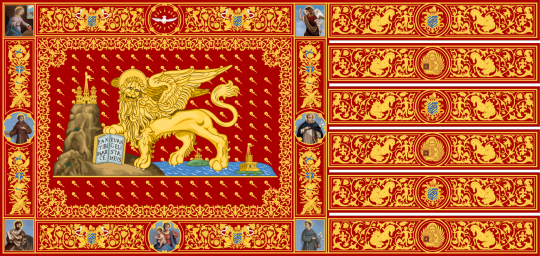
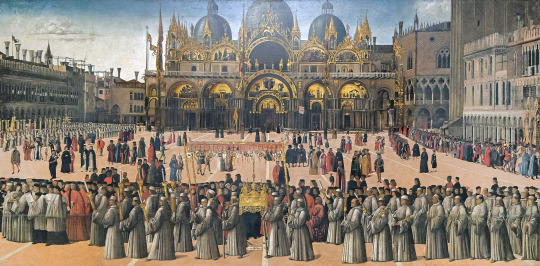
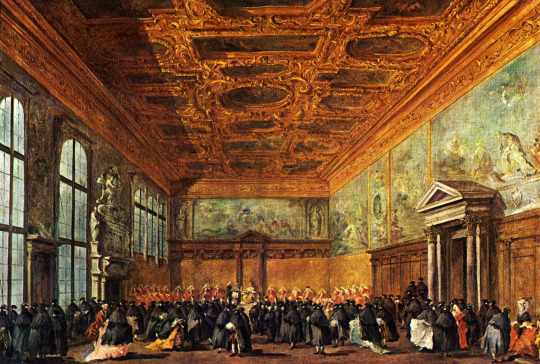

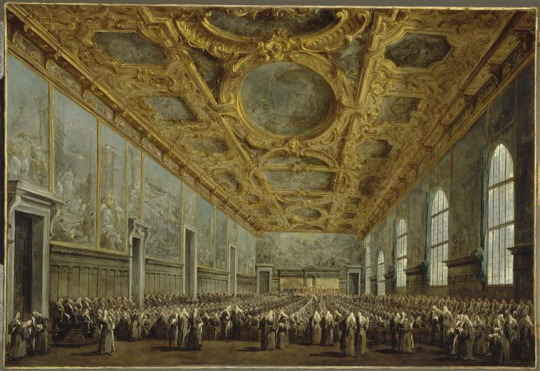

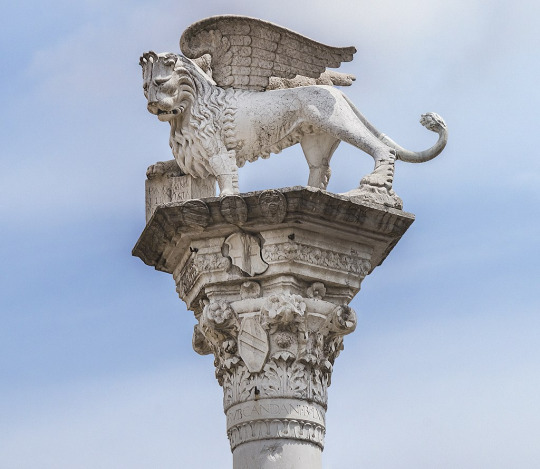

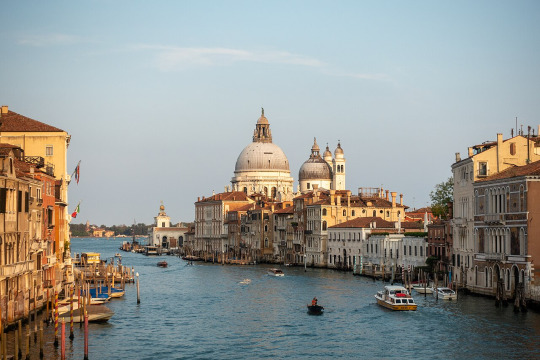
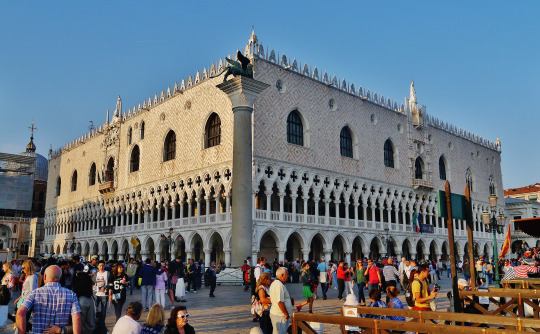
#military history#middle ages#venice#venetian republic#italy#politics#political history#trade#economics#governance#commerce#ottoman empire#spain#byzantine empire#napoleon#doge#republic
74 notes
·
View notes
Text
Photos from Ancient Carthage (814BC-146BC)
Ancient Carthage was a city state in the time of antiquity that exists in present day Tunis, Tunisia in North Africa. It was founded around the year 814BC by Phoenician (Punic) settlers who emanated from the Levant, in modern day Lebanon, Syria & Israel. The Phoenicians were a civilization that spoke a Semitic language & engaged in a society that primarily was interested in trade & commerce throughout the Mediterranean Sea.
The Phoenicians settled in trade colonies throughout the Mediterranean basin in not only their West Asian homeland but Europe & North Africa all the way to modern day Spain & Morocco. Their best-known trade colony was Carthage or “Qart-hadast” which meant “New City” in their language. This was strategically located where modern Tunis sits. It was located on a strip of land that allowed shelter from storms on the North African coast & was well placed near the center of the Mediterranean Sea & its trade routes crisscrossing between the east & west. The settlers who established Carthage were Phoenicians colonists from the city of Tyre in modern Lebanon, one of the three major city-states of Phoenicia alongside Sidon & Byblos.
These Phoenician colonists reached Tunisia around 814 BC & like their other settlements in Libya & elsewhere they had to deal with the native populations, in this case the Berber or Amazigh peoples who inhabited North Africa from Morocco to Libya. Originally a daughter city under the rule from Tyre, they gained autonomy when Tyre & the rest of Phoenicia fell under the control of the Neo-Assyrian Empire around 650 BC. From that point on Carthage became not only an independent city-state but established a mostly sea-trade based empire or thalassocracy. It became a flourishing metropolis & dominated the Western Mediterranean for centuries.
Carthage was a monarchy until about 480 BC before becoming a republic & their sea-based commercial empire presaged the later Italian sea-based republics of Venice & Genoa over a thousand years later. Their complex system of governance, language (Punic or Western Phoenician dialect), religion & other cultural aspects are still only partially understood in the modern era due to biased contemporary foreign sources & little surviving local record.
At their peak they controlled North Africa’s coast from Libya in the east to Morocco in the west. Much of Spain, the Balearic Islands, Malta, half of Sicily, all of Sardinia & Corsica. They fought wars with the Berbers who lived inland in North Africa along with the Greek city-states that settled in Sicily & southern Italy & likewise engaged in trade with these peoples. The Phoenician settlers (Carthaginians) were often not numerous enough to make up their whole military strength. Though the Phoenicians dominated their navy while their land-based military consisted of mercenaries from the Berbers of North Africa, Greek hoplites, Sardinians, Italo-Sicilians, Corsicans & the Celts & Iberians of Spain and the Balearic Islands to complement their own elite Phoenician infantry, the Sacred Band of Carthage.
Eventually over the course of the three Punic Wars with the emerging Roman Republic, Carthage lost its power & prestige. Though it produced several military leaders of tactical & strategic renowned, the most famous being Hannibal Barca (247BC-181BC) who crossed the Alps & invaded Italy from the north inflicting several defeats on the Roman army on their native Italian soil but he was never able to take Rome itself. Eventually attrition & the threat of a Roman counterattack against Carthage itself forced Hannibal to leave for his North African home. He was eventually defeated by the Romans & finally in the Third & final Punic War, Rome destroyed ancient Carthage in 146 BC, it is said they tilled the surrounding fields in salt so that no new crops could grow & the threat of Carthage would never rise again. The Romans eventually rebuilt Carthage & included the city as their own within the Africa province of their empire. It flourished again as a center of Roman trade but eventually fell to Germanic invaders such as the Vandals before being retaken by the Byzantine Empire in the 6th Century AD before falling again to the Arab Muslim invaders in the 7th century as Islam spread across North Africa. Medieval Carthage continued as a residential town but eventually the modern city of Tunis began encircling its original Punic & later Roman ruins...
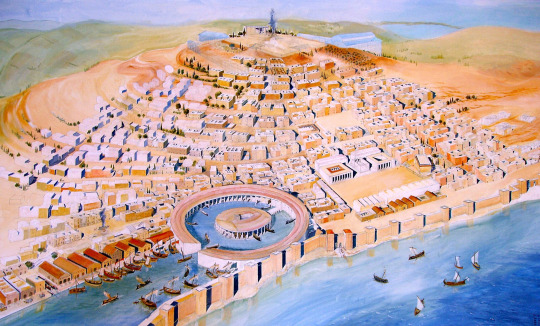
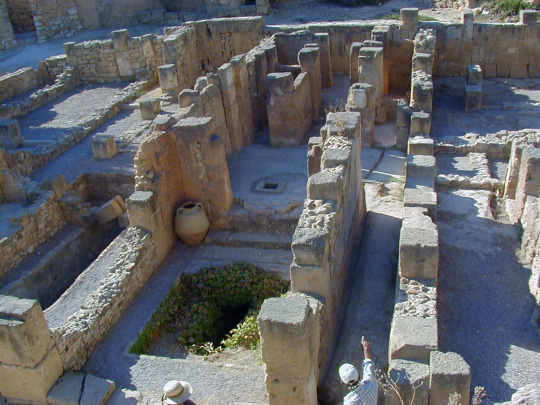
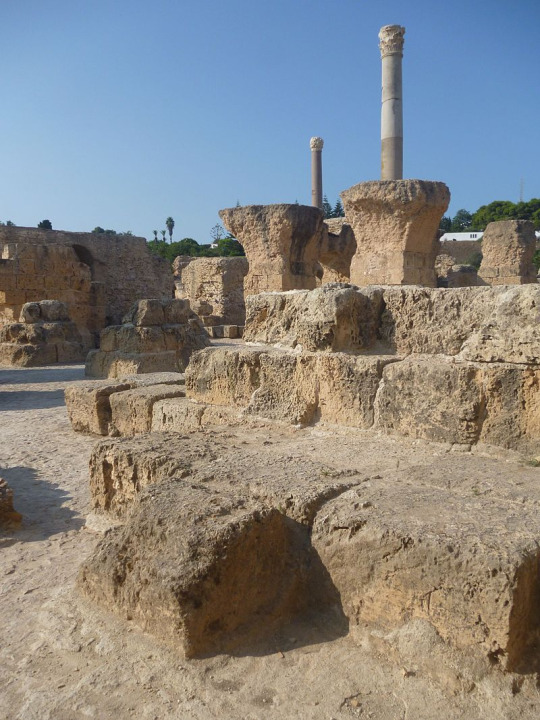
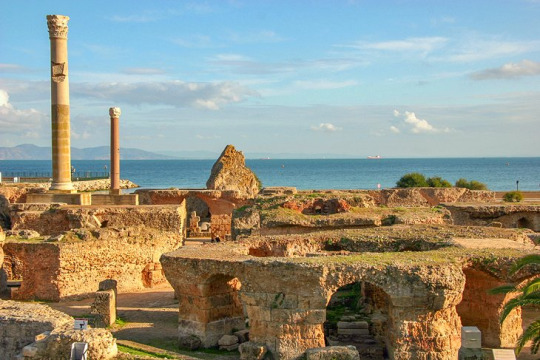
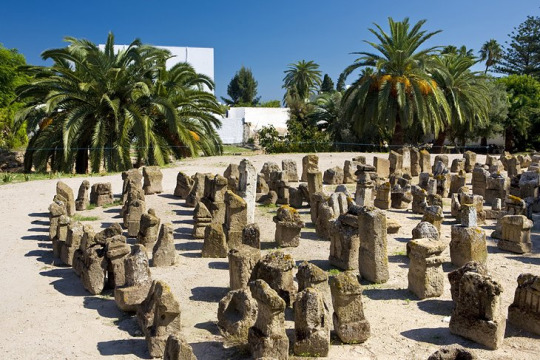
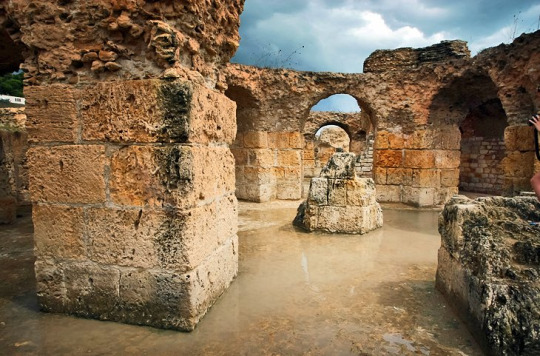
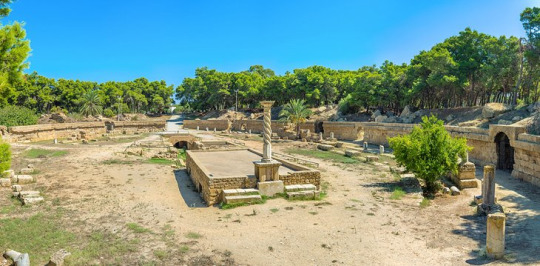

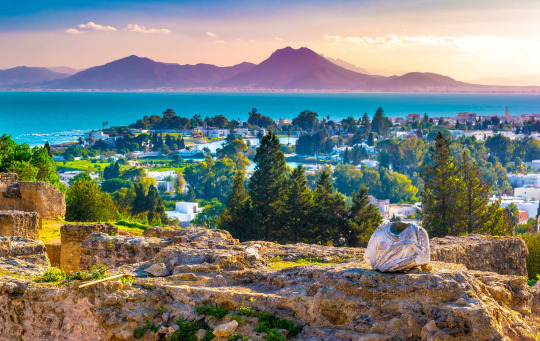
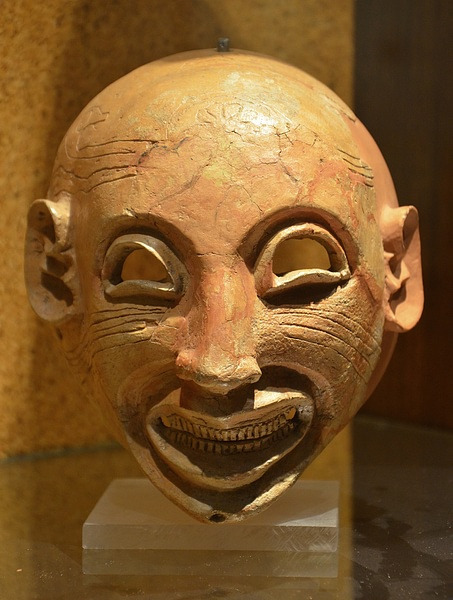
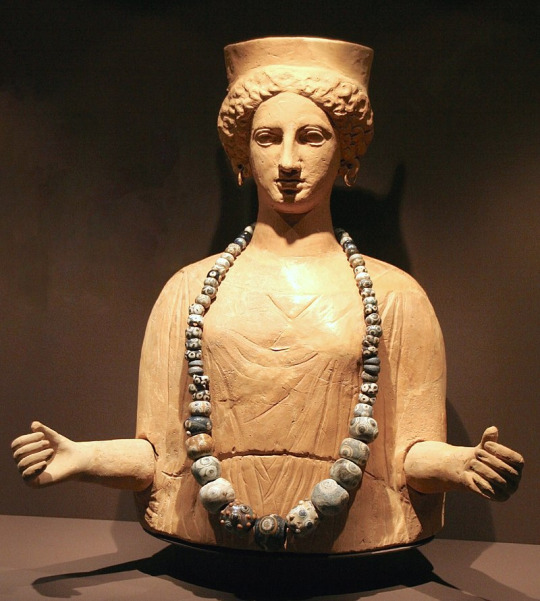
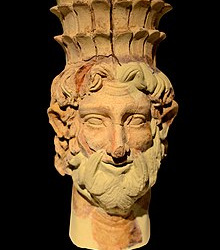
#antiquity#ancient carthage#punic wars#hannibal#ancient rome#tunisia#north africa#ancient world#ancient history#carthage#rome#mediterranean#phoenicia#ancient phoenicia#tyre#baal hamon#tanit#dido#ancient ruins
25 notes
·
View notes
Text
The Reconquista & Moorish Resistance in Spain: Rebellion of the Alpujarras (1499-1501)
1492 was one of the most consequential years for the nationhood of what is now Spain. Not only was it the year Christopher Columbus & his crew reached the Americas in the name of the Spanish monarchs. An event that ignited the subsequent centuries long European exploration & conquest of the North American & South American continents. 1492 was also the year that most historians deemed the official end of the so-called Reconquista.
The Reconquista (reconquest) was also commonly viewed as a centuries long project of entailing conflict between the Christian kingdoms of the Iberian Peninsula (modern Spain & Portugal) aimed at “retaking” the land from the Islamic invaders who hailed from North Africa & the Middle East and ruled over large swaths of land collectively known as Al-Andalus. The grouping of Muslims in Iberia came to collectively be referred to as the Moors. As we’ll elaborate in this post, the Reconquista fitting into a binary Christian European versus foreign Muslim narrative is probably too narrow to accurately the describe the period in question. Nor as we’ll discuss later does the year 1492 automatically signal an end to the Moorish community such as it was within Iberia. As with much of history there is much more nuance to these topics. To get a more accurate picture of history requires accepting that nuance however inconvenient to our preconceived notions did in fact & does in fact exist in virtually every historical event recorded across the spans of time & space.
Let’s then define the rough time period we mean, when we discuss the Reconquista. Historians commonly refer to the Reconquista to be roughly from the year 718/722 AD/CE starting with the Battle of Covadonga lasting until the Fall of Granada in 1492 AD/CE. These are generally the bookends of Reconquista which are more or less accepted by historians today. For further context, let’s remind ourselves of what brought about the Reconquista & then discuss whether that it was a simple case of Christian vs. Muslim.
The Islamic Conquest of the Iberian Peninsula is generally believed to have begun in the year 711 AD/CE when a force of Muslims made up of mostly Berber or Amazigh (native peoples from North Africa) with some Arabs crossed the Straits of Gibraltar from modern Morocco & invaded modern-day Spain. This force was led by one Tariq ibn Ziyad (670 CE-720 CE). Tariq was a Berber from North Africa whose people had only within the last few decades come to embrace Islam & not completely. The early Islamic conquests spread rapidly following the death of the Prophet Muhammad in 632 CE. Muhammad had largely succeeded in uniting the Arabian Peninsula under Islamic rule by his death. From there under the first Islamic empire of sorts, the Rashidun Caliphate (632 CE-631 CE) saw conquests of both some of the Middle East and some of North Africa, namely Egypt from the Eastern Roman Empire (Byzantine Empire) & Iranian Plateau from the Persian Sassanian Empire. Following the First Fitna (civil war), the Rashidun Caliphate was succeeded following the death of Muhammad’s cousin & son-in-law Ali ibn Abi Talib, the 4th and final caliph of the Rashidun (rightly guided). They were succeeded by the Umayyad Caliphate (661 CE-750 CE), the 2nd major Islamic caliphate. The Umayyads were an Arab dynasty & distant relatives of Muhammad taking power after the First Fitna from their power base in Syria. They changed the trajectory of Islamic history in a number of ways. In a leadership level, they became the first hereditary Islamic dynasty, making the caliph less of a religious & political leader & primarily a political leader akin to a king or emperor in practice though nominally had the religious leadership attached to the title but this would decrease in practice overtime. The succession of caliphs were now passed essentially from father to son whereas the Rashidun caliphs were elected by a council called a shura who tried to assess the merits of the candidates proposed. Leadership was intended to be based on those whose character & ability would exemplify Islamic teaching & virtue as they believed the Prophet Muhammad had exhibited in his leadership.
The Umayyads greatly expanded the Islamic conquest to the whole of North Africa by the late 7th century & all the way into parts of Central Asia & the Indus Valley in modern Pakistan & India. They also extended northward into Byzantine held Anatolia (modern Turkey) and the southern Caucasus (Armenia). They further extended their reach into Europe with raids in the Mediterranean including the Iberian Peninsula by the late 7th & early 8th centuries CE. While Islamic teachings held that all Muslims were equal in terms of value regardless of ethnic or geographic background & the Umayyads did indeed rule over a vast multiethnic & multireligious empire, in practice they maintained a preference for Arab Muslims among the bureaucracy & aristocracy to rule over the empire. A hierarchy formed with the Arabs at top, non-Arab Muslims such as Persians, Egyptians, Greeks, Armenians & Berbers who recently converted as generally beneath the Arabs & below them Christians & Jews who did not convert to Islam along with other non-Abrahamic religions at the bottom of the hierarchy. Christians & Jews however were allowed to practice their religion without interference so long as the jiyza poll tax was paid to fund the caliphate’s operations in part.
It was under the Umayyad Governor of Ifriqiya “Africa” (modern Tunisia, Algeria & Libya) Musa ibn Nusayr, an Arab from Syria that Tariq ibn Ziyad was ordered to cross the Straits of Gibraltar & invade Iberia. At the time Iberia was under the control of the Kingdom of the Visigoths. The Visigoths were a Germanic people from Northern & Eastern Europe that moved nomadically into the Roman Empire during the late classical period into the early medieval period. They were among the so-called barbarian hordes that overran the western Roman Empire & had famously sacked Rome itself in 410 AD/CE. This contributed to the eventual downfall of the Western half of the Roman Empire. The Visigoths in time however along with other Germanic peoples like the Ostrogoths, Vandals & Franks began to adopt elements of Roman culture from the areas over which they now ruled. Picking up Latin as an official language & even adopting Christianity. The Visigoths had helped the Romans at one point fend off Attila the Hun and his nomadic empire in the plains of France. The Visigoths had settled in southern France before crossing into Spain where they overtook the Hispano-Roman population. The Hispano-Romans were a mixture of native Iberians, Celts, Carthaginian & Greco-Roman settlers among others in Iberia who more or less coalesced into a common people that spoke Latin & practiced a precursor to Catholic Christianity. Iberia likewise contained the native Basque peoples who maintained their own unique language & culture to this day, largely protected by their residence in the mountainous northern reaches of Iberia & southern France. The Visigoths ruled over them as powerful warrior minority who overtime increasingly assimilated into Hispano-Roman majority but still maintained serious differences. The brand of Christianity practiced by the Visigoths was known as Arianism & differed from the Christianity of Hispano-Romans. They also dealt with somewhat unsettled monarchical rules. Civil war occurred among the Visigoths for kingship which was not necessarily hereditary.
It is said that the rule of a Visigoth King by the name of Roderic who reigned from 710-711 was the impetus for the Muslim invasion. There is much debate about whether Roderic’s reign itself was the cause for the invasion as there is a fabled tale that he seduced or raped the daughter of one of his nobles who turned to the Muslims of the Umayyad Caliphate to act as a mercenary force to avenge & depose Roderic in exchange for conquest of the peninsula. This tale was sometimes accepted as fact but may actually be a tale or contain some elements of truth, the historical record to this day is limited on this. However, what seems to be known is that Roderic’s reign was not fully accepted by other Visigoth nobles within the kingdom & was disputed at best & perhaps ignited civil war or at least created a division that may have led to conspiracy between Visigoth nobles & Umayyads. Whatever the reality, the opposition to Roderic did create an opportune moment for an army of Berber and Arab Muslims (Moors) to land at the Rock of Gibraltar & begin their in-land push to begin conquering the Iberian Peninsula also known as Hispania. Gibraltar in fact takes its name from Tariq ibn Ziyad’s first name. In Arabic the rock which is the symbol of the modern British possession Gibraltar was known as Jabel-al-Tariq (Rock of Tariq), in antiquity it was known as one of the Pillars of Hercules. Roderic raised an army to oppose the Muslims and was defeated it is said due to betrayal of his own forces at Battle of Guadalete. This is turn opened a rapid conquest of virtually all of the peninsula within a decade. The Muslims received more Berber & Arab reinforcements and were more or less accepted by some of the Visigoths & Hispano-Roman population. The Umayyads had added the regions known in Arabic as Al-Andalus or land of the Vandals (Germanic peoples who reigned in Iberia earlier) as their western most province.
For virtually a decade their conquest went unimpeded due to the divisions among the Visigoths & the Hispano-Romans. However, the northern mountains of Hispania did protect some retreating Visigoth & Hispano-Roman Christians as it did their Basque neighbors. Creating a relative safe haven for them in the form of a new kingdom, the Kingdom of Asturias. Additionally, the Muslims had to now consolidate their hold over southern & central Iberia as well as the coasts. Further strains to the Islamic cause came in the form of division between Arab & Berber. The Arabs typically were new to North Africa much less Europe & due to Umayyad preferences were often given leadership positions & the greater spoils of war over the more numerous Berbers who acted as the rank & file soldier typically, leading to lingering resentment. These divisions would persist off and on throughout the history of Al-Andalus, notably in the Great Berber Revolt of 740-43. The Battle of Covadonga fought in either 718 or 722 CE saw the Asturians defeat the Umayyads for the first discernable time & allowed a check on their ambition to completely rule the peninsula. Other setbacks to Muslim conquests came in their invasions of France where in 721 they were defeated in the Siege of Toulouse & in 732 the Franks decisively defeated the Muslims at the Battle of Tours.
In 750 CE, the Umayyads were overthrown by a new Arab dynasty with closer blood ties to the Prophet Muhammad, the Abbasid dynasty. The Abbasid Caliphate (750-1258 & 1261-1517) were descended from the Prophet’s uncle & while they maintained the Umayyad preference for hereditary succession to the caliphate, they reversed the Umayyad preference for an Arab only bureaucracy, largely using Persians to fill government roles & allowing other non-Arabs likewise to fulfill leadership roles. The Abbasids would likewise preside over an age of cultural flowering within the Islamic world, the so-called Islamic Golden Age with the establishment of Baghdad in Iraq as their capital. They’d rule over the largest Islamic empire in history but one not entirely united as they would soon lose Al-Andalus.
The Abbasids would try to kill every remaining Umayyad but one named Abd Al-Rahman Al-Dahkil (the Entrant) managed to escape Syria while witnessing his brother’s execution. Abd Al-Rahman’s father was Arab but his mother was Berber & he sought refuge among his mother’s relatives in North Africa which had become relatively autonomous under the Umayyads due to the rule of another Arab noble dynasty known as the Fihrids. They accepted Abd Al-Rahman’s exile within their borders as they themselves were not eager to accept Abbasid rule & did so nominally. The Fihrids had spearheaded the Arab conquest of North Africa & now ruled as governors of Al-Andalus well into the 8th century but divisions amongst the Yemeni & Syrian Arab factions and Berber factions created an opportune moment for Abd Al-Rahman to make his way into Iberia. There with an army of Syrian Arabs & Berbers he defeated the Fihrid governor of Al-Andalus. In turn he now created an independent Emirate (Principality), the Emirate of Cordoba (756 CE-929CE) which later evolved into the independent and rival Caliphate of Cordoba (929 CE-1031 CE). The Umayyad direct rule over Cordoba likewise saw a cultural flowering which rivalled that of the Abbasids in Baghdad. With geography & other more pressing issues closer at home, the Abbasids de-facto accepted the Umayyad reign over Al-Andalus. This peaked under the reign of Abd Al-Rahman III who reigned as Emir from 912-929 before declaring himself as Caliph of Cordoba and ruling as caliph from 929 to 961. Cordoba became a major center of learning in Western Europe & both as an emirate & caliphate saw much knowledge transfer between Muslim, Christian & Jews. These people could live side by side but by the 10th & 11th centuries CE, the majority population of the Iberian Peninsula was in fact majority Muslim. This populace became collectively known as the Moors to the Chrisitan European world.
What constituted the term Moor? It is derived from the term Mauri originally derived from the Greek term for the Berber tribes of northern Morocco & Algeria, that term was Maurusii or Mauri as it was adopted in Latin later by the Romans after their conquest of North Africa. It also applied to the Latin name for the province of Mauretania. Originally it applied to the Berber peoples of this region, but this preceded the Islamic era by centuries & had no religious connotations. By the time of Al-Andalus, Mauri remained the Latin term for the Berbers but the Muslims were never strictly only Berbers but a combination of Berber & Arabs. The term Moor in English is in turn derived from the Latin daughter Romance languages of Spanish, Italian & French which used the term moro & maure. By the time of Al-Andalus as the Caliphate of Cordoba, Moor was applied to all Muslims within the Iberian Peninsula. This applied equally to Berbers, Arabs & European converts to Islam, the Hispano-Romans & Visigoths also to some degree converted to Islam, as did slaves imported from Eastern Europe via the Arab slave trade. These latter two groups (Hispano-Romans & the Slavic slaves) helped constitute the majority of Iberia’s previously Christian population & it was through this conversion that Islam became the predominant religion of Iberia during much of the Middle Ages. They were known as muwallad.
Moors never truly constituted a specific ethnicity in Spain & Portugal. It was perhaps better described as a cultural or religious designation rather than an ethnic or racial one. Moors came from various ethnic backgrounds spanning 3 continents (Europe, West Asia & North Africa) and could range in skin color from dark to light & fair skinned as it was not a racial designation. Furthermore, the racial divides between Berber & Arabs during the earlier Al-Andalus period began to dissipate gradually over the centuries due to intermarriage between the two communities & this also included muwallad (Hispano-Roman) marriage with Berber & Arab communities as well. In time leading to a community that became better known as Andalusian (taken from Al-Andalus) or to the Christians as Moors.
As the Islamic power changed overtime from emirate to caliphate likewise new Christian kingdoms arose from the north of Iberia. Asturias gave way to the Kingdom of Leon & the Basques formed the Kingdom of Pamplona. In time the kingdoms of Castile & Aragon formed & Pamplona turned into the kingdom of Navarre. As the Reconquista progressed the political interplay between Christian & Muslim powers became complex & despite the common narrative of a strict Christian vs. Muslim conflict much like the Crusades of the Middle East from the late 11th century onward, a more nuanced reality existed. The caliphs of Cordoba were in fact mostly European being only patrilineal descendants of the Arab Umayyads. Their mothers were made up of generations of either European slaves taken in raids or in some cases the Basque & Hispano-Roman royalty of the northern kingdoms who made treaties with the Umayyads & sometimes sent their daughters or sisters to become wives of the emirs & caliphs so as to ensure peace between their respective kingdom. Abd Al-Rahman III, Caliph of Cordoba was the grandson of a princess from Pamplona & great-grandson of the Basque king of Pamplona. He was said to have had fair skin & light eyes & hair/beard which he dyed black to make it appear more “Arab” despite that three-quarters of his grandparents were completely European, the remaining quarter was partially Arab intermixed with European captives in the emir’s harem. Subsequently his cousins constituted the fellow monarchs of northern Iberia he had to contend with both through war & diplomacy.
Throughout the Reconquista era, interaction between Christian & Muslim occurred at all levels in Iberia. Trade, commerce, art, education & cultural exchange was not uncommon in addition to the familial ties of politicians & the ever-shifting alliances. Christian powers were in competition with each other & Al-Andalus, matters complicated further following the collapse of the Caliphate of Cordoba which saw the break apart into numerous Muslim petty kingdoms called taifas. Some ruled by Arab, Berber or muwallad dynasties. Some paired with Christian powers against rival Muslim powers & likewise Christian powers teamed with Muslim powers against fellow Christian powers but the fractured nature of the taifas gave opportunity for Christian kingdoms like Castile & Aragon to gradually take more territory. This was encouraged by the papacy in Rome and other players in Western Europe which sometimes saw French, English and other European mercenaries serve in the Iberian Christian armies against the Muslims. So, it’s not inaccurate to say the Reconquista contained elements of a Christian vs. Muslim narrative & indeed it was a goal of many if not all Christian rulers in Iberia to drive the Muslims ultimately out of Iberia & unite the lands under their own rule, but their ambitions also extended to leadership over their fellow Christians too. The question was would achieve this.
Before this could happen, intervention from Morocco took place with a Berber led religious movement/dynasty known as the Almoravids intervened in Iberia & defeated a Castilian & Aragonese combined force at the Battle of Sagrajas in 1086. They had been invited by the taifa rulers of Al-Andalus who realizing their own power slipping due to their infighting & subsequent losses to the Christian north needed a united front against complete collapse. The Almoravids indeed halted the Reconquista but in the 12th century as home in Morocco they were supplanted by yet another Berber religious movement & dynasty, the Almohads. The Almohads not only took over Morocco but much of North Africa & eventually Al-Andalus. Likewise, they had to compete with Christian powers and the remaining taifas of Iberia more or less determined to maintain some autonomy.
However, the tide seemed to forever turn in the Christian favor following the 1212 CE Battle of Las Navas de Tolosa in which a Christian coalition of Castile, Aragon, Navarre and a host of Crusader military orders & mercenaries from throughout Western Europe defeated the Almohads decisively. This subsequently saw the Almohads eventually collapse in Iberia while they likewise power to various dynasties in North Africa spanning from Morocco to Libya. The third taifa period in Iberia came after the Almohad collapse. This likewise saw the taifas being subsumed by the Christian kingdoms. The one relatively strong Muslim power to remain in Iberia was a relatively new one which became the Emirate of Granada (1230 CE-1492 CE).
Granada had the Sierra Nevada mountains to offer it a modicum of defense from the Christian north & its ruling dynasty, the Nasrids were of Arab stock. The Nasrids two lasting contributions would be in architecture & historical placement. Their architecture was best exemplified in the form of the world famous Alhambra palace complex. Which served as a fort & series of palaces built on a hill overlooking Granada that saw expansion over the coming centuries. The Nasrids unfortunately for the Muslims of Iberia were known in history as the rulers of the last independent Muslim realm in Western Europe. As time went on they became vassals of the Kingdom of Castile, the most powerful & leading Christian realm in Iberia. They alternated between war & peace with Castile, inflicting defeat & suffering defeat to the Castilians a gradual loss of territory to the Christians became irreversible & more and more the Muslims of Iberia of Berber, Arab & muwallad background rallied around their religious & cultural identity, becoming more culturally & geographically Andalusian as ethnic identifiers continued to wane in importance. Granada’s ever shrinking borders became the last safe haven for the free practice of Islam in Iberia, something that had lasted for nearly 800 years.
1491-1492 would see the Emirate of Granada come to end, along with it a successful completion of Reconquista and the end of Muslim rule in Iberia for all time up to the present. The Catholic Monarchs, Isabella I of Castile & her husband Ferdinand II of Aragon created a personal union between the two most powerful kingdoms in all Iberia. Their marriage also saw a renewed joint focus on ending Granada with the idea of removing the last Muslim power in the peninsula. Starting in 1482 Castile & Aragon fought a decade long war with Granada but it was the siege of Granada itself in 1491 that caused Muhammad XII, the Nasrid emir of Granada to surrender the city, the whole of the emirate & the Alhambra palace built by his ancestors to Isabella & Ferdinand. Christian success came when the besieging forces bombarded the city with early gunpowder artillery & cutoff the water supply & demoralized the Muslim defenders. Additionally, there was rampant bribery going on between both sides which added an air of confusion & distrust between peoples within & outside of Granada. Finally, the terms offered by the Catholic Monarchs to Muhammad XII caused him to capitulate as they were deemed generous to the Muslims of Granada & this was preferable to complete death & destruction.
The Treaty of Granada signed in November 1491 gave a truce that stated on January 2nd,1492 the city would be handed over to the Christians effectively ending the Reconquista. The treaty had many articles but largely can be summed as saying the Muslims of Granada in exchange for their submission to Isabella & Ferdinand would be able to essentially keep their property & maintain their free practice of religion & custom with little or no interference.
While this officially ended the Reconquista, it also helped give birth to the modern nation of Spain as Spanish nationhood became a more discussed notion following the fall of Granada. The Alhambra was eventually converted into a Christian palace, particularly under Isabella & Ferdinand’s grandson’s (Charles V, Holy Roman Emperor) reign.
Initially, these generous terms afforded to the Muslims of Granada from their new sovereigns was adhered to but for both Jews & Muslims in Spain, the subsequent Spanish Inquisition by the Catholic Church would lead to massive disruptions. However, their remained a difference of opinion between the church and the monarchs. Church officials wanted the state to apply pressure to the Muslims & Jews of the kingdom with an eye towards conversion en masse. Meanwhile, the king & queen sought to uphold the terms & let the Muslims passively convert to Christianity if possible. In 1499, during their visit to Granada the population (many Muslim) actually cheered the crown for nearly a decade of respectfully adhering to the provisions of the treaty in 1491.
This rapidly changed that same year when the Archbishop of Toledo moved to Granada & begin asking for the imprisonment of Muslims including the nobles. Once in prison they faced torture until conversion. Spurred on by this the Archbishop begin to increase the pressure by having a loophole in the trearty allow for the questioning of Christians who had become Muslim converts & done so in front of Muslim clerics. These converts were summoned to prison for questioning & often women were targeted which angered their Muslim male relatives. This reached a breaking point when one convert woman openly decried she was being forced to convert to Christianity, the officials escorting her to prison were surrounded by a Muslim crowd, one was killed while the other escaped & this in turn triggered an open revolt.
The archbishop demanded the Muslims hand over the killers of his agent which failed. Instead, he called up soldiers to help provide a show of force if necessary to put down the revolt. After negotiation the killers were turned over the rebellion died down due Muslims handing over their weapons. Nonetheless the archbishop was recalled to Seville by Ferdinand who was angered. The archbishop nevertheless convinced him that Muslims broke the treaty through their open revolt. Furthermore, he managed to get the Catholic Monarchs to pardon all rebels in exchange for their conversion to Christianity. This conversion was nominal for the whole Muslim populace of Granada.
While Granada’s Muslims calmed their own rebellion down through negotiation, the rebel attitude spilled over to the countryside. Particularly into the Alpujarras mountain range south of Granada. There the Andalusian Muslims were living fairly free lives devoid of much interference & enforcement of the treaty. Fearing the forced conversions that befell Granada, they declared the revolt in the name of preserving their religion & culture. Due to the mountainous terrain & well led tacticians, they were able muster up a guerrilla warfare campaign against Christian rule. However, the Christians were able to send roughly 80,000 soldiers into the region to put down the rebellion eventually with Ferdinand overseeing the war efforts. The Muslim guerillas lacked an organized structure of command & overall strategy & this in turn allowed the Christian forces to defeat the rebels piecemeal. Rebel lives could be spared on the condition of conversion to Christianity. Furthermore, the Christian forces now took to preserving little to no quarter to the enemy. In the town of Laujar de Andarax 3,000 Muslims were killed included hundreds of women & children blown up in a mosque in which they sought refuge due to ignited gunpowder supplied to besiege the town. By early 1501, Ferdinand declared the rebellion over. The Muslims continued to rebel & they were met with both defeat & victory but realizing they could not have a great chance at winning the war without a defined command & strategy, they sued for peace. Ferdinand likewise felt the peace was needed since his army couldn’t sustain the logistical challenges of a long-drawn-out guerilla war in the mountains.
The terms of Ferdinand’s accepting the Muslim’s surrender was no longer the generous terms of 1491 a decade before. The rebels must convert through baptism, reject baptism & face death or enslavement or finally choose exile outside of Iberia. The cost of exile was to be self-funded too & for many, it was far too expensive & extortionate for the average Andalusian Muslim. This left few any decision but to remain & nominally convert. All Muslims in Granada were in name Christian if in practice they continued to defy the laws they now were forced to follow. Many continued to practice Islamic customs in secret, but they were able to maintain their Islamic dress & some would still speak Arabic & maintain other customs. The enforcement by the Christian authorities was stricter than before the rebellion but it was not always feasible, especially in the mountainous Alpujarras. They publicly professed to be Christians but were determined in many cases to remain Muslim despite the threat of death which hung over them. These lingering tensions & suspicions by the subsequent Spanish monarchs & the church led to increased scrutiny & enforcement in the form of dress codes, inquisitions into the sincerity of their conversion & harsh punishment for those found to violate the new royal proclamations. By now, the Muslims in Iberia were referred to as Moriscos in Spanish, which translates as “little Moors” & applied to these Spanish Muslims who now professed to be Christian through conversion but still secretly practiced Islam & maintained Islamic traditions in private. For the Moriscos, the tension between state & mosque was eventually going to be too much to withstand. Events would boil over into a second and even larger rebellion later in the 16th century one which would determine the fate of Iberian Moors for centuries to come...
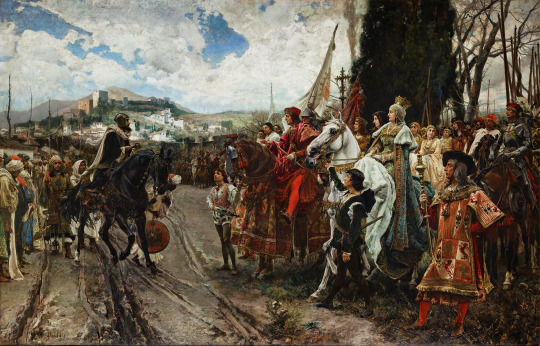
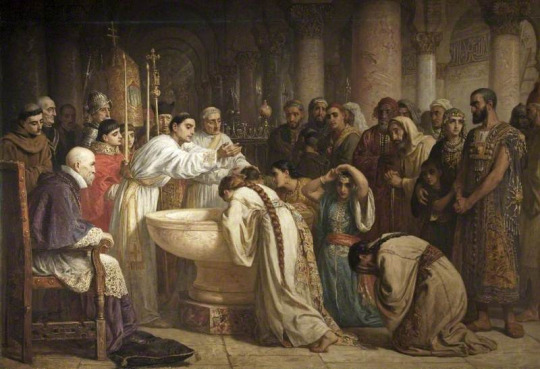
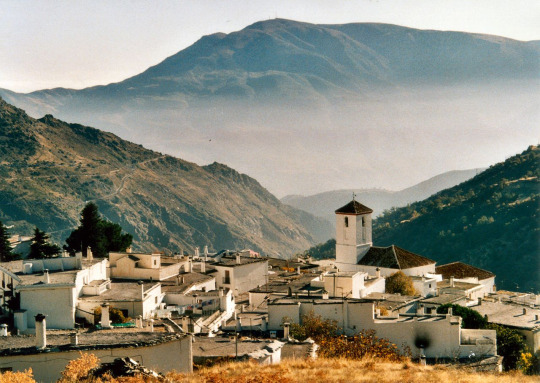
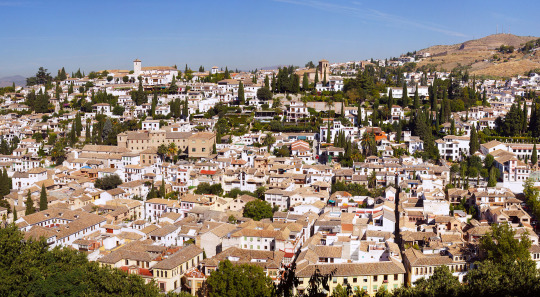
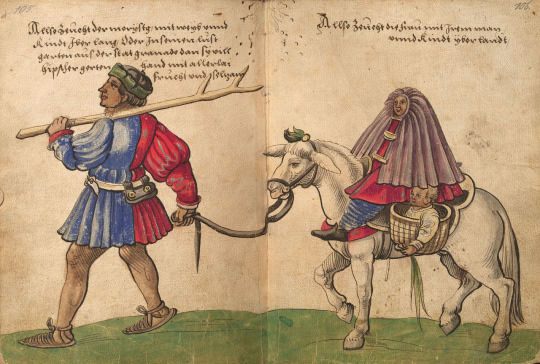
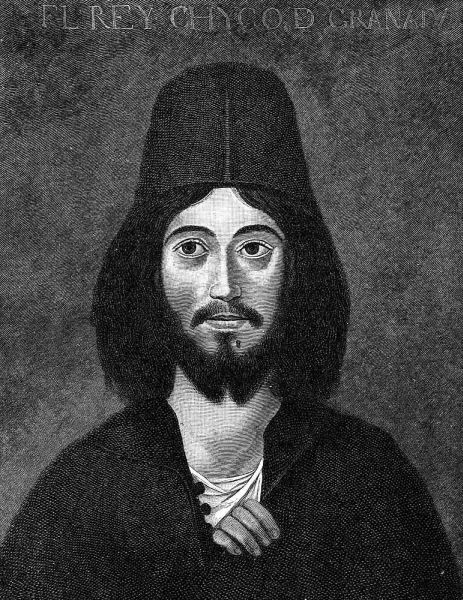
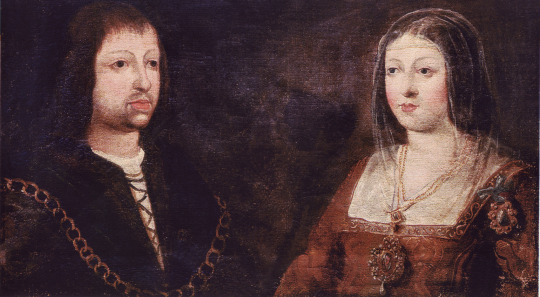
#Moors#morisco#spain#islamic history#islam#spanish inquisition#castile#aragon#portugal#navarre#granada#Emirate of Granada#cordoba#umayyad#Al andalus#military history#alpujarras#Guerilla Warfare#Middle Ages#reconquista#caliphate of cordoba#abbasid#catholic monarchs#ferdinand ii#isabella i of castile#1492#christopher columbus#morocco
10 notes
·
View notes
Text
Isabel de Clare 4th Countess of Pembroke (1172-1220 AD). Anglo-Irish women of the nobility in profile...
Isabel de Clare’s life is largely known in detail for her proximity to people in her life during the late 12th & early 13th centuries of Medieval England. Her parents and ancestors were of noble & royal extraction. Her husband rose through the ranks from son of a relatively minor noble to being the man regarded as the best knight and most trustworthy nobleman in all of the Angevin Empire and a powerful statesman who ruled in England in all but name for a brief period. In death he was lionized as the “greatest knight who had lived” and their children would either become nobles & warriors in 13th century England themselves or marry into other noble families of note.
All of this overlooks just how important, strong and capable Isabel was of her own merit. Something her husband and indeed Anglo-Norman law at the time recognized. Despite its male dominance, there were women capable of being major power players in the ranks of nobility & royalty and Isabel played a contribution to that. Her life offers us a unique glimpse into a noble woman’s life during the High Middle Ages in Western Europe.
Royal Roots, Birth & Early Life:
-Isabel de Clare was born circa 1172 AD, somewhere in Leinster (southeastern), Ireland. From the start she was a symbolic & physical bridge between two cultures. She was the result of a political but dutiful marriage, and her physical being would be of crucial importance in later years.
-Her father was Richard FitzGilbert, also known as Richard de Clare, 2nd Earl of Pembroke (1130-1176). Richard would be best known to history by his nickname Strongbow. He was an Anglo-Norman nobleman of the De Clare family. The De Clare or Clare family originated in Normandy and came to England where they accompanied William the Conqueror, Duke of Normandy who would become the first Norman King of England.
-The first Richard FitzGilbert (1035-1090) was a companion of Duke William and distant kinsman. They both shared a common ancestor in Richard I of Normandy (932-996), Count of Rouen & Duke of Normandy. The name De Clare was from the Norman French for a place name, to be from or “of” said location. As a reward for being companion to Duke William in the Norman Conquest of England. Richard FitzGilbert like other Norman nobles was granted landholdings in England, becoming the new English nobility which replaced the Anglo-Saxons of old. Richard’s particular land holding was in centered in the town of Clare in Suffolk England which made him the first Lord of Clare. He also gained territory in Tonbridge in Kent, England.
-Over the generations the family expanded its holdings in England and in the Welsh Marches, Anglo-Norman controlled portions of southern Wales. Strongbow’s father Gilbert de Clare (1100-1148) became 1st Earl of Pembroke under King Stephen of England, gaining control of important parts of the Welsh Marches, including the Pembroke peninsula in southwest Wales. He also held Striguil in southeastern Wales on the River Wye, forming the strategic border between England & Wales.
-Gilbert de Clare was married to Isabel Beaumont, a former mistress of King Henry I of England & daughter of Robert de Beaumont, 1st Earl of Leicester & his wife Elizabeth de Vermandois. Elizabeth was a French noblewoman was the paternal granddaughter of French King Henry I (1008-1060) of the House of Capet. While her maternal grandfather Herbert IV, Count of Vermandois (1028-1080) was a descendant of Charlemagne and the Carolingian dynasty of Franks. Also, by virtue of Henry I’ of France’s marriage to Princess Anne of Kiev, Strongbow and subsequently Isabel de Clare were direct descendants of the Kievan Rus’s royal ruling House of Rurik which ruled Medieval Ukraine & Russia. Also confirmed among their ancestors from this line were Swedish royalty, Polish tribal royalty & possibly Byzantine Greek royalty, if the debated connections regarding Anne of Kiev’s purported paternal grandmother (Anna Porphyrogenita) are indeed true.
-Isabel de Clare’s mother and the wife of Strongbow was Aoife MacMurrough of Eva of Leinster (1145-1188) an Irish princess who was daughter of Dermot MacMurrough, King of Leinster. Ireland at the time was not ruled by one king but was instead made up of several feudal petty kingdoms, Leinster being one of them located in the southeast of the country, a land of rivers, hills and the famed Wicklow Mountains. Aoife’s and subsequently Isabel’s ancestry in Ireland went back to various Irish petty kings & even the vaunted High Kings of Ireland, who ruled as a somewhat symbolic overlord of the other petty kings. This included her paternal ancestor through Brian Boru, High King of Ireland & King of Munster and founder of the O’Brien dynasty who defeated the Vikings at their settlement in Dublin in 1014, taking the area back for the Gaelic natives of Ireland after years of Viking rule. Though Brian Boru died in the process.
-Isabel de Clare’s parents came together in the 1170′s following a power struggle in Ireland between her maternal grandfather Dermot MacMurrough & then High King of Ireland, Rory O’Connor who worried that Dermot would become too powerful as King of Leinster, so he launched an invasion of Leinster, this forced Dermot off his throne and into exile in 1166.
-Dermot’s exile took him to the court of Henry II, King of England & Duke of Normandy who was in France at the time, trying to hold together his many French possessions (Normandy, Brittany, Aquitaine, Anjou etc.) which made up his Angevin Empire. Henry would not personally partake in restoring Dermot to the throne in Ireland, but he did authorize Dermot to negotiate and make mercenary use of some of his Anglo-Norman nobility and their knightly retinues. Strongbow would be one of these Norman nobles Dermot would negotiate with.
-Strongbow promised to assist Dermot in the recapture of his throne, in exchange for Aoife’s hand in marriage and kingship of Leinster upon Dermot’s death, co-ruling with Aoife to give it air of legitimacy among the native Irish. The Norman invasion of Ireland commenced in small waves as early as 1169 with Strongbow himself arriving in 1170 where his Anglo-Norman forces, some 200 mounted knights and 1,000-foot soldiers teamed with earlier Norman war parties from the prior year, they took the port city of Waterford, once a Viking a stronghold. Here Aoife & Strongbow were married, uniting the Irish royalty with Anglo-Norman nobility in a political manner.
-Children would of course cement this marriage with the birth of Isabel probably in 1172 and her brother Gilbert.
-Dermot’s gamble paid off, his Norman mercenaries overwhelmed the forces loyal to High King Rory O’Connor. The Gaelic Irish military in terms of arms & armor were no match for the Anglo-Normans who sported the most high-quality weapons and armor of their day in Western Europe. Dermot was once again agreed to be King of Leinster in agreement with O’Connor. However, his deals with his new son-in-law Strongbow & the other Anglo-Normans unintentionally and unbeknown to them opened the door to the start of England’s several centuries of involvement in Ireland...
-Dermot would die in 1171 shortly after the retaking of the kingdom, leaving his son and son-in-law (Strongbow) to claim kingship of Leinster. His son and Aoife’s brother claimed it under traditional Brehon law while his deal with Strongbow left it as part of the dowry for marriage.
-Meanwhile. Henry II of England was concerned about his Anglo-Norman nobles over in Ireland. Strongbow in particular had through marriage and acquisition of lands, begun a private colonization of Ireland. Other nobles who took part in Dermot’s operation did so too. This resulted in Henry and Strongbow making a deal, in exchange for keeping Leinster and the restoration of Strongbow’s English, Welsh & French landholdings, he would surrender the ports of Wexford, Waterford & Dublin to royal authority directly. He’d also be required to assist Henry on campaign in France against rebels. He was made in title by Henry II, Lord of Leinster & Justiciar of Ireland (chief justice). Henry II arrived in Ireland in late 1172 for a six month stay where royal troops directly loyal to him took over the key cities of Wexford, Waterford & Dublin from the earlier Anglo-Norman mercenaries. All the Anglo-Norman nobles who gained land in Ireland during the initial invasion were forced to pledge fealty to Henry II as Lord of Ireland in exchange for their right to keep their newly colonized lands. Likewise, the native Gaelic kings were to pledge fealty to Henry II as their feudal overlord, essentially ending the now meaningless institution of High King of Ireland. Waves of Anglo-Norman, Welsh, & Flemish colonists began to settle and establish new English towns in Ireland. Some established relations with the Gaelic Irish, intermarrying, becoming a new cultural group which would expand, ebb and flow over the centuries, the Anglo-Irish. Thus began a fusion of Anglo-Norman architecture, warfare, language and with a gradual cultural assimilation of Gaelic customs that began to blur the differences overtime until the early Anglo-Normans became just accepted as Irish. Nevertheless, politically the longer lasting implications of England’s occupation of Ireland had begun.
-Isabel de Clare was born into this new political realty, her maternal ancestral homeland permanently transformed within a few years due to her maternal grandfather’s personal struggle to regain power in his homebase. None of the the participants, including her parents & grandfather had the slightest notion of the longer-term implications of their decisions. Isabel & her brother were, nevertheless, the flesh and blood realty of this new political & cultural fusion. Meant in part as political bridges between two worlds.
-Strongbow intended for his son Gilbert to inherit Leinster and the various holdings in Wales, England and Normandy. His own death came about in 1176 following an infection of the leg. He was buried in Dublin, with his tomb & effigy still found Christ Church Dublin. Aoife took charge of her children’s upbringing hoping to ensure their inheritance. She was by many accounts fierce in this regard, she was also seemingly well-educated for anybody in that time period but especially a woman, a trait she passed on to Isabel. She is also said to have led Anglo-Norman & Irish loyalist troops into battle against those who tried to take Leinster from her, she earned the nickname Red Eva.
-Gilbert de Clare, died as a teenager around 1185. Thus, all the inheritance remained with his mother Aoife and would by right of Anglo-Norman law pass on to his nearest relative, his sister Isabel and any man she would marry.
-Aoife died in 1188 by some accounts, this left the teenage Isabel orphaned without and without her brother. She was, nevertheless, rightful heir to Leinster, the castles in Wales & England that had belonged to her father and paternal grandfather (Gilbert, 1st Earl of Pembroke). She was the 4th Countess of Pembroke in this line after her brother’s brief tenure. Isabel, became a royal ward of Henry II personally. Meaning he would ensure the safekeeping of her legal inheritance and person. He entrusted this to Ranulf of Glanville, Justiciar of England. She was therefore kept in London for her safekeeping.
-In practical terms this royal wardship was essentially a foster home for orphaned nobility until the king could marry them off to some other noble. Sometimes, other nobles would be entrusted as their personal guardian and be tasked with arranging the marriage of the ward to another noble, sometimes to their guardian’s child or even the guardian themself for personal gain. This would of course require the king’s blessing.
-Isabel was described as beautiful, kind & intelligent “the good, the wise and courteous lady of high degree.” She was among the wealthiest heiresses in the Angevin Empire (Henry II’s personal empire which through conquest, inheritance and diplomacy included all of England, parts of Wales, Ireland and most of Northern & Western France). She was well educated like her mother and could speak her father’s language of French, the courtly language of the English royalty and the Anglo-Norman nobility at the time. She could also speak her mother’s native Irish (Gaelic) & Latin, the language of clergy, diplomacy and government bureaucracy. This coupled with her bloodlines would be of tremendous political import, meaning she could navigate the Irish and Anglo-Norman cultures she was born of. Rather than her education in language, courtly manners, warfare, diplomacy and politics being perceived as a threat to any husband, it would have likely been seen as a great asset.
-Her hand in marriage was promised by Henry II, to one William Marshal in 1189. Marshal was himself an Anglo-Norman noble born and raised in England around 1147. He was the son of a relatively minor noble in England’s West Country with his mother coming from a more distinct Norman family. He came of age through training as a knight with his mother’s relative in Normandy, enduring a six-year apprenticeship in knightly warfare, court etiquette & the arts. He saw some combat but was assigned to the personal service of England’s Queen Eleanor of Aquitaine and then the service of her and Henry II’s son, Henry the Younger. They bonded especially in the late 1170′s by becoming famous knights on the European knightly tournament circuit that was just blossoming at the time. Marshal became perhaps the most renowned tournament knight of all, capturing or unhorsing some 500 knights. Henry the Younger would eventually die after Marshal served him for over a decade loyally.
-Marshal then found himself in Henry II’s personal service and during a war against the King of France who was briefly joined by Henry II’s son and heir Richard where he personally unhorsed Richard with a lance, killing the horse but sparing the prince. Supposedly, the only man to do so. After Henry II’s death, Richard rose to the throne of England & Normandy. He was preparing to go on Crusade to the Middle East and liberate Jerusalem from Muslim rule. He would in time be known as Richard the Lionheart.
-Despite Marshal’s recent opposition with King Richard, the new monarch kept Marshal in his service. He also fulfilled his father’s promise to wed Isabel de Clare to William Marshal. This would make Marshal not only a wealthy and increasingly influential knight but by right of marriage make him now one of the wealthiest landowners & nobles in the Angevin Empire.
Marriage, until death do you part;
-William Marshal & Isabel de Clare were married in August 1189 in London. There was an age difference, she was not quite 18 and he was in is early 40′s. Despite the political nature of the marriage, it appears to have been a genuinely happy one by all accounts. Neither party appears to have been unfaithful to one another. The written records show a great mutual appreciation for one another and produced 10 children, 5 sons and 5 daughters over the next several decades.
-Marshal was technically by right of marriage, Earl of Pembroke but he would not officially acquire the title in his own name until 1199, a decade after his marriage. Nevertheless, he was overlord of Leinster and Striguil and set about making improvements to the castles both he had acquired in England & France for loyal service to the monarchs but his marital gains in Wales & Ireland.
-For the first decade of marriage, William was in service to Richard the Lionheart, particularly when he was gone on Crusade, he stayed behind as a member of the ruling council. This kept him in England, Wales & France mostly, with little attention to affairs in Ireland. Isabel for her part focused on raising a family and supporting her husband as he navigated politics. Though his wartime commitments to defending England from rebels & the French throne often kept them separated. Isabel, appears to have been like her mother before devoted to ensuring the cultured learning of her children.
-Affairs in her native Ireland wouldn’t be pressing for the Marshal family until around the year 1200, during the reign of Henry II’s youngest son with Eleanor of Aquitaine, John. John became king after the death of his eldest brother Richard who had returned from years in the Crusades and then a captive in Germany from a rival monarch, found himself campaigning against Philip II of France (his father’s rival) to regain territory that had been lost under John’s regency of throne. John was eventually back in Richard’s good graces when the Lionheart died of infection from a crossbow wound fired by a rebel soldier in southern France where Richard was campaigning to suppress a revolt.
-John was now King of England and had a reputation for being paranoid, highly emotional and making rash decisions, making him more unpredictable than his older brothers and father.
-Marshal found himself both in John’s good graces and bad graces at various times over the years. He and Isabel were turning to press their rightful rule in Leinster in the early 1200′s despite John’s warnings he not to do so. John like his father Henry II had been concerned about Strongbow now worried Marshal and Isabel would be too powerful and independent in Ireland. Indeed, in the two decades since the Norman invasion of Ireland, the Anglo-Norman nobility who settled there had become accustomed to their own relative autonomy. Loyalty to the king was in name but in practice, so long as they didn’t rebel against the king, they were basically free to do as they please. John’s predecessors did little to enforce this and initially John was more concerned about England & France.
-Marshal & Isabel helped develop the town of New Ross in Leinster, an English town separate from the Gaelic towns nearby, it was peopled with English & Welsh colonists, many of whom were part of the Marshal family retinue and to whom they owed their feudal allegiance. The castles of Kilkenny, Trim & others were developed and expanded by Marshal & Isabel.
-Meanwhile, Marshal earned John’s ire for having paid homage to Philip II of France in exchange for retention of Norman lands after the French kicked John’s English armies out of Normandy, forever losing his ancestral duchy of Normandy to France.
-Concerned of Marshal’s power in Ireland and anger over his dueling homages to John in England and Philip in France. John organized for Marshal to come pay homage in England where he was duly placed under house arrest at the royal court. Meanwhile his own Justiciar in Ireland, Meiler Fitzhenry who had his own ambitions on Leinster invaded using his own Irish & Anglo-Norman forces with John’s blessing. John sought to teach Marshal a lesson and increase personal control over Ireland by having a Norman noble with more loyalty. It also worked in Fitzhenry’s favor.
-Marshal himself was considered fair if not especially popular among the Anglo-Normans already settled in Leinster under his rule. While the native Gaels were less than enthused by him or any other Anglo-Norman lord. Isabel, however, appears to have been the critical element & saving grace for Marshal. Given her ancestry including the native Irish rulers of Leinster and the Anglo-Norman new elite, her command of language & diplomacy appears to have held things together while this Anglo-Norman civil war with the king’s blessing raged in Ireland.
-in 1208 Fitzhenry’s men besieged Isabel (who was pregnant) and the Anglo-Normans who were loyal to Marshal all while Marshal himself and his sons remained personal hostages of King John. Only thanks to an alliance between Marshal’s & Isabel Anglo-Norman loyalists with another rival of Fitzhenry, Hugh de Lacy (1176-1242) Anglo-Norman noble who was first Earl of Ulster did the war come to an end in Marshal & Isabel’s favor. Isabel is said to have helped direct the defense of her castles under siege while de Lacy’s men came to their relief, defeating and capturing the men John had sent to assist Fitzhenry.
-Fitzhenry remained a noble in Ireland but he was removed as Justiciar. Marshal was released by John, and he was allowed to reunite with Isabel.
-Isabel’s day to day to involvement in the civil war is hard to gauge but almost certainly if not the military matters, the diplomatic ones she learned from her Irish princess mother, along with her symbolic blood ties to the Irish & Anglo-Norman nobility of Leinster still held important sway. As Marshal had said prior to his departure to his custody in England, all he had emanates from her. This was mostly true in a political and legal sense, but he appears to have meant it in a romantic sense since she was his faithful wife & mother of his children, the vessel to his dynastic future.
-In the coming years, Isabel & Marshal looked to marrying off their children to important Anglo-Norman nobility. Though successful in this regard and Marshal & Isabel have thousands if not millions of descendants today, none of their sons would bring about descendants meaning, their holdings in Ireland, Wales and England would transfer to other families since their daughters were married off into other noble families and hence the Marshal dynasty was short lived-in terms of male direct descendants. All five daughters Maud, Isabel, Joan, Eva & Sibyl all had children that lived and went onto have descendants that live into the modern era, including members of the British royal family today as well as numerous people in America and elsewhere due to colonial descendants from English nobility.
-Marshal found himself back in John’s good favor and counselled him during the rough times of the First Baron’s Rebellion (1215-1217). He also helped guide John to signing the famed Magna Carta, meant as a peace treaty to ensure certain royal guarantees for the rebellious nobility. Making Marshal one of the Magna Carta “signers”, though the peace was broken shortly thereafter, and John died of illness during rebellion. To make matters worse England’s civil war between nobles revolting against John’s excesses and those loyal to him, including Marshal now attracted the attention of the French king Philip II and his son Louis. The rebel barons now swore fealty to Louis and asked he take over as King of England. Marshal had been made guardian of John’s son 9-year son who was crowned Henry III, making him the 4th crowned King of England that Marshal would serve. Marshal was styled as “Guardian of the Realm” and swore to defending England and its rightful king from the predations of the rebel barons and the French pretender.
-As regent he was now the head of the country in practical matters, yet he was also 70 years old. Marshal would help Henry III and England’s royalist forces when the war when at age 70 and donning knight’s armor one last time he would lead a royalist force to defeat a combined Anglo (rebel)-French force in the Battle of Lincoln in May 1217. This along with the English naval victory over France at Sandwich ended the war in the royalist favor. Henry III was recognized by France at the rightful King of England and the rebels would be forgiven in exchange.
-Marshal won the war for England but his old age was catching up with him. He now set about as Regent of England on behalf of Henry III to try and restore the treasury which was drained under John. He also reissued updated versions of Magna Carta, later cited by historians as a cornerstone moment in the gradual expanding of human rights and democracy, though the original document was narrow in scope and intended for the nobility and the preservation of their rights against royal abuse. It would influence English common law and American Constitutional law in centuries to come.
-From 1217-1219 Marshal was the de-facto the ruler of England, he wasn’t always successful, but he did ensure some measure of peace and lay a foundation that Henry III’s other regents and the king himself could later build upon.
-Isabel remained faithful to the very when Marshal died at home near Reading England in May 1219. She was said to have wept uncontrollably at his passing and could not walk during his funeral procession to London where he was buried in Temple Church.
-Nevertheless, evidence shows that despite her husband’s passing she immediately set about ensuring inheritance was due. Writing the other regents that her lands in Ireland, Wales (minus Pembroke which went to their eldest son) and England were duly granted in her name. She also negotiated with the French king to ensure inheritance of her Norman lands. She even got William Marshal II, their eldest son the hand in marriage to Henry III’s younger sister Princess Eleanor, though this marriage would produce no heirs.
-Isabel’s son William Marshal II was effective as agent managing her various estates, but illness caught up with her in March 1220 and she died in Wales ten months after her husband’s death. She was buried Tintern Abbey near Striguil Castle, now Chepstow Castle which had belonged her father Strongbow and his father before him. Her grave is there to this day alongside her mother Aoife of Leinster. Though the abbey which the De Clare & Marshal families patroned is now in ruin, the grave markers are located on the ground.
-So passed a woman of high birth within the High Middle Ages of Western Europe. She was born of two different cultures and served as a living bridge immersed in the customs of both. As a result, she was given a unique and rich in-depth education unusual for anybody for the times but especially someone of her sex. Her life is mostly known for a seemingly peripheral role in relation to her family and acquaintances of great political importance but the evidence we have suggests she was regarded by especially her family and husband in particular as an absolutely vital and strong character in the events of the time. She played a part in shaping the history of nations, by dint of her birth and by her cultured and determined character.
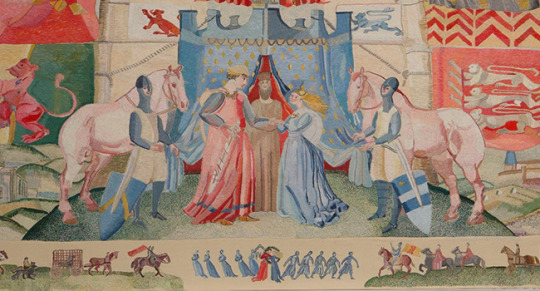

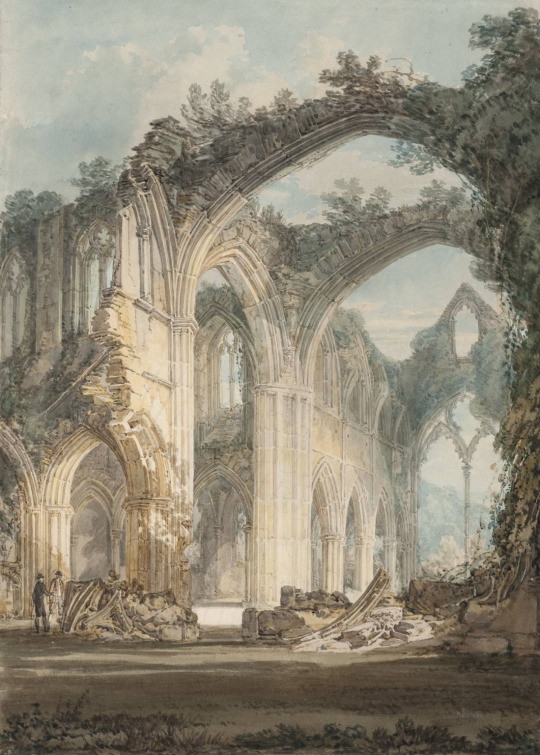
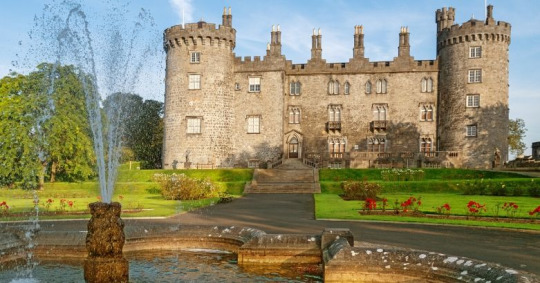

#middle ages#england#france#anglo-norman#medieval#William Marshal#knighthood#chivalry#ireland#leinster#castles#normans#nomandy#de clare#strongbow#wales#chepstow castle#princesses#countess#brehon law#eva of leinster#high middle ages#henry ii#richard the lionheart
16 notes
·
View notes
Text
William Marshal, 1st Earl of Pembroke (1146/47-1219). Greatest Knight of the Middle Ages...
If you hear the term Middle Ages or Medieval Era, at least in a European context one visual that might form in the popular imagination is that of the knight. Bedecked in armor, astride a horse, armed with lance, sword & shield prepping for war. While acting in accordance with a code of conduct known as chivalry, one that stereotypically stressed virtues of loyalty, martial prowess, gentlemanly behavior towards others, including in courtship among other virtuous behaviors.
The truth regarding Medieval knighthood is one far more complex when reviewing the individuals who actually embodied it. Knighthood and what it meant to be and even to look like as a knight developed over a long period of time, it was never that static of a concept. Concepts similar to knighthood can be found in many cultures the world over and many predate the popular European concept of knighthood in the Middle Ages. When you consider the Middle Ages was roughly bookended with the fall of the two halves of the Roman Empire. Starting with the fall of the Western Roman Empire to waves of invasions, primarily to Germanic tribes in the 5th Century AD to the fall of the Eastern Roman Empire or Byzantine Empire in the mid 15th Century AD to the Ottoman Empire, you have about 1,000 years of history to cover, alot of time for a concept to take hold and evolve.
I want to focus on one individual said to epitomize our popular concept of the knight, who lived during the period of time where the notion of European knighthood crystalized from its embryonic concepts to the first flowering of our classical understanding of knighthood & chivalry. The individual said embody this most was man born in 12th century England, an Anglo-Norman by the name of William Marshal. In his native Norman French, he would have been Williame il Mareschal...
The Early Days:
-William Marshal was born in England around the year 1147 AD. His exact place of birth isn’t known but his parentage is. He was the younger son of a minor Anglo-Norman noble by the name of John FitzGilbert, AKA John Marshal and Sibyl of Salisbury. Both from Anglo-Norman families that had formed the new nobility of England following the 1066 Norman Conquest initiated by William, Duke of Normandy (William the Conqueror) who became King of England and united the Duchy of Normandy in Northern France with the whole of England.
-The Normans who descended from Vikings from Scandinavia and settled in Northern France in the late 9th & early 10th centuries. They converted to Christianity and adopted the French language and mixed in with the local Frankish, Flemish & Gallic peoples of France. Here they formed their own unique ethnolinguistic & cultural group. One best known for the martial prowess inherited from their paternal Viking origins combined with devout religious fervor & culture from their adopted French homeland.
-With the Norman Conquest of England started in 1066, the Normans replaced the Anglo-Saxon nobility in most instances with soldiers who accompanied Duke William and their families being granted estates of land throughout England, often at the expense of former Anglo-Saxon rulers.
-The Normans changed the ruling elite, architecture & some linguistic influence of French into England but the majority populace remained Anglo-Saxon.
-As time went by the communities remained somewhat segregated but did learn to interact. The Normans and their Anglo-Saxon subjects over the next century expanded into Wales, southern Scotland & eventually Ireland, becoming the first wave of lasting English influence on the Emerald Isle, more on that later.
-William’s eventual moniker and surname of Marshal, came from his father’s position as hereditary royal marshal. It was a position as an official marshal to the Anglo-Norman King & Duke, generally aiding in access within the king’s household. Nevertheless, for John FitzGilbert, it did not bring large estates and the role was relatively minor in importance.
-Only during the period of civil war known as the Anarchy (1138-1153 AD) did John FitzGilbert rise to a level of semi-importance. The Anarchy revolved around succession to the throne of England & Normandy. Henry I, King of England and last son William the Conqueror to rule England & Normandy found his reign from 1100-1135 in a succession crisis at the time of his death. His legitimate son and heir, William Adelin died at age 17 in 1120 during the White Ship accident on November 25th of that year. The ship hosted a large drinking party of royalty & nobility including the Anglo-Norman heir apparent. The ship disembarked from Normandy to cross the English Channel for England when it struck a rock and most of the people aboard drowned including William Adelin.
-William Adelin’s importance was to unite the political elements of England, Normandy & Scotland into one person. His father of Norman extraction and his mother Matilda of Scotland was born to the King of Scotland Malcolm III & the Anglo-Saxon princess Margaret of Wessex, one of the last vestiges of the displaced ruling house of Wessex which had ruled Anglo-Saxon England for over a century prior to the Norman Invasion. With his death these hopes were seriously endangered.
-William Adelin did have a sister Matilda (1102-1167) who married Henry V, Holy Roman Emperor from 1114 until his death in 1125. Matilda then married in 1128 Geoffrey V, Count of Anjou. Anjou like Normandy was a feudal state within Medieval France which was nominally in service to the French king but was effectively independent as the French king could only wield limited power to rein in his nobles at the time.
-Henry I on his death bed made his Anglo-Norman nobles swear to recognize his daughter Matilda as Queen and her successors as the legitimate rulers of England & Normandy. However, the problem of her sex & the fact that she was previously married to the German Emperor meant she appealed to less than some of the nobles. Her opposition came from her cousin and fellow grandchild of William the Conqueror, Stephen of Blois.
-Stephen, with backing from the English Church had himself crowned King of England on December 22, 1135, within days of Henry I’s death. Stephen had been one of the nobles who previously gave oath this uncle that would recognize Matilda as Queen. Despite his usurpation of the throne, it was didn’t immediately cause an outbreak of war.
-Stephen first dealt with troubles from Scotland and then returned to southern England to issue a series of reforms from the times of Henry I, reforms which were intended to shore up support for his rule by addressing so called royal abuses of noble privilege during the reign of Henry I. He then dealt with rebellion in Wales and gradually trouble from his cousin Matilda & her husband Geoffrey of Anjou who invaded Normandy.
-In 1138, Robert, Earl of Gloucester who was half-brother of Matilda & son of Henry I through a mistress rebelled against Stephen and this pushed England itself into civil war as various nobles in Normandy & England took up us the causes of Matilda & Stephen.
-In this environment John FitzGilbert who initially professed loyalty to Stephen and was granted castles in Wiltshire County and elsewhere as a result. In 1141 he switched his loyalty to Matilda and her supporters. Matilda even briefly sought refuge in one of his castles. While covering a retreat for her John himself took up refuge in an abbey that was set ablaze by Stephen’s supporters. This resulted in the loss of an eye due to dripping lead from the melting roof.
-The Anarchy went off and on over 14 years and John in 1152 was confronted at Newbury Castle in Berkshire by Stephen and his army. During the siege, John’s young son, William (Marshal) was taken hostage by King Stephen. The young boy, no more than seven years old was taken as hostage to ensure the compliance with surrender of the castle but John reneged on the deal with the king. Angry, Stephen threatened to load the young William on a catapult and slam his body against the castle walls as a sign of his determination. John merely mocked the king, saying he could kill his son, for he would make “newer and better sons”. For reasons unknown, Stephen who wasn’t entirely known for being ruthless appears to have taken pity on the boy and spared him. However, he did keep him as a prisoner for several months.
-Matilda & Geoffrey’s son, was Henry FitzEmpress who had become Duke of Normandy in 1150 with his father’s capture of the Duchy. Henry on behalf of his mother’s claim ventured to England in 1153 and ultimately agreed to a final settlement with Stephen as both sides were militarily exhausted with little change in their situation. A truce was agreed to with the understanding that Stephen would remain King of England for the rest of his life but that he would adopt his cousin Henry FitzEmpress as his son and successor. Matilda would therefore not reign herself, but her son would succeed to the throne and reunite England & Normandy under one ruler plus bringing in his inheritance from his father of the County of Anjou.
-Stephen died in 1154 and Henry took the throne of England as Henry II, great-grandson of WIlliam the Conqueror, grandson of Henry I. In addition to England, Normandy & Anjou, his 1152 political marriage to Eleanor of Aquitaine heiress to the wealthy Duchy of Aquitaine in southwest France, herself a former Queen Consort of France during her marriage to Louis VII of France. Her marriage was annulled in 1152 prior to marrying Henry, then Duke of Normandy. This marriage brought into a unified political realm that eventually saw all of England from the borders of Scotland, parts of Wales, Normandy, Anjou and Aquitaine which bordered the Pyrenees mountains with Spain come into being. It would go on to include other French possessions including the Duchy of Brittany, Toulouse and the Lordship of Ireland. This became known as the Angevin Empire, derived from the paternal origins of Henry in Anjou with its historical capital in Angers, France, ruled by the House of Plantagenet, so named from Geoffrey V of Anjou’s habit of wearing a sprig of flower in his hat.
-John FitzGilbert went on to become the Marshal of Horses under Henry II and this became a hereditary position for his family. The position was meant to keeper of King’s horses but eventually became a kind of leader of household troops. It would be inherited by his elder son John Marshal, William’s brother. After his later death in 1194 it would officially transfer to William, becoming an early surname and eventually popularizing the name Marshal.
-William’s prospects were not great being a minor noble’s younger son meant next to no inheritance would go to him. Instead, he was at the age of 12 sent to a relative of his mother Sibyl of Salisbury who was sister of Patrick, Earl of Salisbury. This relative was William of Tancarville, a Norman noble who was lord of Chateau de Tancarville. Sent from England to Normandy, William began an apprenticeship under his mother’s cousin and began being trained in knighthood.
Becoming a Knight
-For roughly a six-year period in Tancarville, William Marshal was trained in horse riding, swordsmanship and fighting in the Norman tradition. He was trained in the early concepts of chivalry, the code of conduct by which knights were to abide by in all aspects of life. It meant loyalty to a lord, stressed physical prowess in combat but also gentlemanly honor in dealing with all individuals. The ultimate goal of a knight was to live in accordance with chivalry, expressed in loyalty to a lord by being part of the noble or royal master’s retinue of troops. In exchange for loyal service, they would be furnished with pay, food shelter & perhaps eventually grants of land themselves, though this latter perk was no guarantee.
-We know William’s training was several hours a day and involved not only combat but etiquette and culture, his apprenticeship was akin to both military basic training and boarding school in his day. He would have learned how to behave at the dinner table, learning the manners of his day. He also would have had some additional cultural training involving the arts. However, he would primarily be known for his physical prowess in combat training and the cultural training wouldn’t initially hold much sway with young William. Though it would nevertheless serve to provide a foundation for how he “should” act. Providing the diplomatic basics that would he come to utilize later in life.
-He was knighted in 1166 while in Upper Normandy which was facing invasion from the County of Flanders. He saw his first taste of battle which was yielded mixed results. He was remarked as brave and determined in combat though his prized horse was killed in battle underneath him. Horses were the most expensive part of a knight’s cost.
-Each knight from a retinue generally had multiple horses in the 12th century. A small horse or general travel, horses for transport of weapons & armor and war horses. Arabian horses brought to Europe by way of Italy & Spain were the most prized. The war horse was on its own more expensive than multiple other horses, armor & weapons. It was roughly the cost of several thousand goats on a farm in England or France circa 1170.
-Armor and weapons for knights in William’s day also did not consist of the shining and ornate full body armor of the later 13th & 14th centuries. Instead, it consisted of a hauberk or shirt of chainmail, occasionally some plates of armor and, a coif of chainmail on the head & helmet. The helmet did not cover the full face leaving them somewhat vulnerable to blows to the face. Otherwise with the weapons of the day, knights were virtually impervious to blows. Though injury could occur in many cases, death in battle among knights was actually not very common, relative to the common soldiery who had much lessor no armor by virtue of expense. The knights brandished a sword typically, along with a medium or large almost triangular shield. On horseback they also brandished a simple wooden lance. Lances were prone to breaking after one use or if lucky repeated use, but they could yield serious injury and occasionally death.
-The object of knight-on-knight battles was not always death or even injury but to render your opponent ineffective. Especially, to unhorse and capture your opponent as not all battle was honor driven but instead for profit. Knights who unhorsed and captured their opponents would take them as hostage and could negotiate for their release later on to be paid by the knight themself or their master since both were usually of noble and relatively wealthy backgrounds. Knighting was expensive but could be incredibly profitable and this served as motivation to join in this marital brotherhood.
-After this brief war, Flanders and the Angevin Empire made peace. William soon found himself also attending knight tournaments. These festive events were gradually becoming a popular spectator sport in the latter half of the 12th century. They were officially banned in England but not so in the rest of the Angevin realm, being popular in France and elsewhere in continental Europe including Germany and other parts of the Holy Roman Empire. These events were condemned by the church and did not generally allow women to attend and weren’t usually filled with spectator stands like later centuries. Nor did they tend to involve one on one jousts.
-Instead, these events which were embryonic in these days were a mix of ever- increasing pageantry filled with a series or one rather large melee of knights from different retinues acting as teams. The goal to capture as many hostages from opposing teams as possible for profit and increase in reputation. It is true retinues began to fly unique banners of their lords but early on the Norman knights would have flown under the banner of the Norman lions.
-William’s initial outings in tournaments were mixed in results like in battle. He appears to have been determined and quite physical. He was noted for his large size physical strength landing hard blows of lance and sword, but he appears to have been headstrong occasionally rushing into battle with little more than anger and courage on his side. This could lead to his own capture at times or yield only a few prisoners of his own. He would have to refine his technique in time.
-Suddenly, he found himself without William de Tancarville’s patronage anymore in 1168 for reasons not entirely known, with little prospects and still mostly unknown. He returned to England and found himself working for his uncle Patrick of Salisbury instead, quickly becoming part of his retinue.
-Later that year while Patrick of Salisbury was escorting Queen Eleanor of Aquitaine to her homeland, her escort was ambushed by rebels from the House of Lusignan, minor nobles in the region who rebelled against Henry II & Eleanor, hoping to use the queen as a bargaining chip for political gain. In the ambush, the Queen escaped but Patrick of Salisbury was killed with a lance blow by one of the rebels. This angered William who rushed headstrong as ever into battle. Again, he fought with determination but cutoff from his retinue he was wounded in the thigh and taken prisoner. He suffered a wound from which he made his own tourniquet to slow the bleeding. He was a prisoner for months and given clean linens with which to wrap his wound, until ransomed by Queen Eleanor herself, supposedly on the grounds of his brave reputation in the defense that allowed her escape.
-William served as part of her personal retinue for the next two years. He took part again in occasional tournaments, refining his skills.
Service to the Kings of England: Henry the Young King
-1170 saw the appointment of William Marshal as tutor in arms to Henry II & Eleanor’s eldest son and heir, the jointly crowned “junior” King of England, Henry the Young. Henry was crowned in June 1170 at age 15.
-Henry the Young King while in name a co-ruler with his father had no practical power. He was given an allowance and was politically married to Margaret of France, princess & daughter of the French king, Louis VII, former husband of Henry the Young’s mother.
-In time Henry the Young King appears to have been under the influence of others around him and in conspiracy with his brothers Geoffrey & Richard, his mother Eleanor & his father-in-law Louis VII of France, Scotland & some Anglo-Norman nobles he began the Great Revolt of 1173-74. William had to make a choice, loyalty to the King Henry II who was his overlord or his immediate lord, Henry the Young King his appointed lord who he trained in knightly arms. He chose to ride with Henry the Young King and made his way to France to take part in the rebellion.
-Ultimately, the rebellion teetered back and forth much like Anarchy of decades before. However, Henry II would be victorious in battle defeating his wife & sons. The motivations were varied but it seems to have centered around Eleanor’s desire to see her sons replace her husband, in part because of her estrangement from him due to his marital infidelity and her desire to see Aquitaine independent of his rule. France & Scotland wanted England & Normandy weakened and more amenable to their own political aims.
-Eleanor was imprisoned for the next several years in a castle in England. Meanwhile, Geoffrey & Richard would be given political positions in their own right to satisfy their desires as they reconciled with their father. Geoffrey would still be Duke of Brittany, Richard still Duke of Aquitaine and Henry the Young King, still junior King of England. However, Henry the Young King did not enjoy much more than an increased allowance and was kept under strict observation by the Henry II initially.
-William & Henry the Young King appear to have bonded quite well during the rebellion, Henry appreciated the loyalty and William the continued patronage. Their does appear to have been evidence of a true friendship. This would only become more apparent in the ensuing years.
-William Marshal became part of the Henry the Young King’s retinue in knightly tournaments over the next few years. Both became obsessed with the sport and in time, went from being little regarded to among the most respected in tournaments.
-Having learned some tricks from Philip I, Count of Flanders, both Henry & William learned to begin winning the day seizing many opposing knights in these melees. Sometimes by what we may regard as less than fair means in the modern sense but still within the rules of the day. One tactic involved not announcing to partake in the melee until it was already under way, then joining in the fray after the first contact, this caught opponents off guard and allowed them to be captured. Otherwise, William’s combination of great physical size, strength and steely determination and renown for unhorsing opponents with hard lance hits and unmatched sword blows coupled with a favored technique of grabbing the opponents horse bridle in one hand with sword in the other while “steering” the opponent away from the fray until they surrendered made him especially successful. By 1179-1180 William Marshal was a relative celebrity on the tourney circuit in Europe. He was feted for his bravery & guile in battle along with his sense of honor and humility outside of battle.
-Two recorded stories sum of his becoming he epitome of the knightly gentleman. Due to his own renown, William was with some persuasion to Henry the Young, allowed to represent himself in some tournaments and he began to develop his own personal small retinue. On the evening before a tournament in France, he ventured into the host town to stay with a local noble. He left his prized hors with a local boy for safekeeping outside the local lord’s home. During a toast to his honor the sound of a thief making off with Marshal’s horse led to him pursuing the criminal on foot. He doggedly pursued the offender and captured him while he was hiding behind a bale of hay in an alleyway. He proceeded to beat the criminal but would not let him face capital punishment. This act showcased his willingness to defend his honor & property but also his mercy towards others. The second story involved a tournament being held in which William held his own but only had mixed results on the day though his bravery was unquestioned. The tournament organizers looked to present an honorary dedication to a knight on that day, a sort of “knightly MVP” of the tournament. They couldn’t decide on one until William Marshal was so named, he reputedly tried to turn down the honor, saying he was not worthy of it but nevertheless accepted it after their insistence, demonstrating his chivalric humility.
-By William’s own later recollection, he captured about 500 knights in tournament career. His winnings made him wealthy and his reputation for success, bravery and gracious behavior made him a celebrity of his time. He had also earned the right to has have his own retinue & bear his own arms in tournament. His coat of arms would remain with him for his life. A red lion rampant on a shield half green and half gold.
-Yet, he lacked the remaining perks of some fellow knights, land and a title. Henry the Young King could not provide him these officially. In time, the two best friends had a falling out circa 1182. The reasons aren’t clear, but one accusation was William having an affair with Margaret of France, Henry’s wife which has never been proven. In could be due to William’s own greed or desire to pressure Henry for his benefit whatever the reason he was dismissed from Henry’s service
-In 1183 they reconciled with Henry went to war with his brother Richard. Henry II intervened on Richard’s side and in May of that year, William was cleared of any wrongdoing he was accused of and returned to Henry’s service, but it was too little too late. Henry the Young King died as age 28 in June 1183.
-Henry on his death bed got William to commit to take up the cross and go on Crusade to the Holy Land.
-William undertook this venture in late 1183 by travelling to Jerusalem with Henry II’s blessing. There is little to no record of his activities while on Crusade, but he did make a promise there that on his deathbed he would be received as a Knights Templar, a Christian military order that partook in the Crusades. Presumably, William partook in military activities, but this could not be definitively determined.
Service to the Kings of England: Henry II’s final years
-Upon returning from Crusade in 1185, William Marshal found himself a captain in Henry II’s army and in personal service to the king.
-He was granted a land holding Cumbria and offered a bride from a minor noblewoman in the north of England. William would decline the offer.
-Henry II would find himself at war with Philip II, King of France and son of former king Louis VII. This war was for control of the region of Berry in central France.
-During this conflict, Richard, Duke of Aquitaine and now Henry II’s heir given his elder brother’s death in 1183 had turned to side with Philip II.
-During a battle, William personally charged Richard and knocked him off his horse killing the animal with his lance. He reminded the Duke of Aquitaine and prince he could have killed him but chose not to out of respect. William Marshal went down in history as the only man to unhorse Richard.
-Henry II died that same year and Richard despite his rebellion against his father was still named heir apparent & now rose to the throne as King of England and Duke of Normandy. Known as Richard I or Richard the Lionheart.
Service to the Kings of England: Richard the Lionheart
-Richard I had received news of the fall of Jerusalem to Saladin, Ayyubid Sultan of Egypt & Syria. He was to partake in the Third Crusade to restore the Holy Land to Christian rule. This would involve a planned alliance with Philip II of France & Frederick Barbarossa, Holy Roman Emperor. Richard would go onto take control of Cyprus and best Saladin in a series of battles, notably the Siege of Acre & Battle of Arsuf. Though he failed to retrieve Jerusalem. The two rulers had a martial respect for one another and agreed to a truce and the coastal territories of the Holy Land remained in Christian hands with free passage of pilgrims to holy sites. While Jerusalem remained in Muslim hands.
- Prior to his departure for the Holy Land, Richard upon becoming king recognized the martial talents of William Marshal. Rather than ignore or punish him, he sought to keep Marshal in his service.
-Henry II was prior to his death looking to finally grant Marshal a marriage that would land him fortune, vast estates and title for his service. He settled on the 17-year-old Isabel de Clare, Countess of Pembroke. Isabel was an Hiberno-Norman (Anglo-Irish) noblewoman. The daughter of Richard de Clare 2nd Earl of Pembroke, better known as Strongbow. Strongbow was an Anglo-Norman nobleman and soldier who hailed from the de Clare noble family which held many castles throughout England and had served the Norman Kings of England. Strongbow was responsible for leading one of the first English invasions of Ireland which was to have lasting permanent effects on that island. Due to a civil war between Irish kingdoms, the King of Leinster Dermot MacMurrough, ruler of an Irish petty kingdom in eastern Ireland was kicked out by his rivals. He left for England and appealed to Henry II who was campaigning in France for assistance in regaining his throne. Henry did not personally join but did allow Dermot to organize a mercenary army of Anglo-Norman nobles to assist in regaining his throne. Strongbow being one of these mercenary leaders made a deal with Dermot, in exchange for this restoration to the throne, Strongbow would marry Dermot’s daughter Aoife (Eva) of Leinster, gain lands in Ireland and became his co-heir with Aoife as his bride.
-Strongbow and other Anglo-Norman lords and their small but well-armed retinues made short work of the Irish opposition in 1171. Dermot was restored to the throne of Leinster, peace was made with his rivals, Strongbow married Aoife & gained power in Ireland. Too much power in Henry II’s eyes.
-Strongbow & Henry II worked out a deal, due to an earlier dispossession of his lands in England & France because siding with Stephen in the years of the Anarchy against Matilda, he wasn’t recognized in certain titles. In exchange for relinquishing control of now Anglo-Norman settled strongholds in Ireland, namely Dublin and other key cities to the King of England, Strongbow would be allowed to retain lands in Ireland, plus his lands in Wales and regain holdings in England & France, making him one of the richest and most powerful Anglo-Norman lords in all the realm. He was also named 1st Lord of Leinster & Lord Justicar of Ireland. In other words, the King of England’s chief justice or representative in Ireland, the first of 700 years of English rule that was to follow.
-Strongbow died in 1176 and his son Gilbert died in 1185 but his daughter with Aoife, Isabel survived into adulthood and was allowed to inherit the landholdings and title of Countess of Pembroke from her parents.
-In August 1189, Henry II’s promise to marry Isabel to William Marshal was upheld by Richard I of England, fulfilling his father’s arrangements.
-William was made Earl of Pembroke by virtue of his marriage a decade later in 1199. He also gained all the rights to most of Isabel’s lands that once belonged to his illustrious father-in-law. He was wealthier than ever with all these land holdings from Ireland to Wales, England & Normandy.
-William was 43 at his marriage & his wife 17 but despite the age difference & political motivations, the marriage was by all accounts a genuine love affair. Both spouses were loyal to each other and 5 sons and 5 daughters. Many people numbering in the thousands if not greater descend from this union into the modern age.
-Richard I made William a member of his regency council upon his leaving for the Crusades in the Middle East.
-During this time William played the role of diplomat and statesman, helping the council of regents to oversee & rule England in the king’s stead. He sometimes sided with Prince John, youngest son of Henry II & Eleanor of Aquitaine.
-Upon William’s older brother John’s death in 1194, he was allowed to inherit John’s lands and title of royal marshal which in turn could pass to his sons.
-Prince John fought against his brother Richard’s loyal regents including William Marshal and he also joined in Richard’s Norman campaigns against Philip II of France as the ongoing power struggle between France’s royal House of Capet & England’s Norman derived royal House of Plantagenet continued to play out for control of Western Europe.
-On Richard’s deathbed in 1199, he made William Marshal custodian of the Norman capital of Rouen plus the royal treasury. Richard was succeeded by his brother John.
Service to the Kings of England: John I & the Magna Carta
-John I took the reins of power in 1199 and William was entrusted with defending Normandy from the French king, but it was ultimately lost as a whole in 1203.
-John alternated with William being in his favor and not being in his favor. John allowed William to serve as an ambassador to Philip II of France where he had to do homage on behalf of the King of England to the French king. William hoped to do so would allow him to personally retain lands in Normandy given his knighthood developing there. However, the French king insisted on a personal homage for this, something not authorized by John. William nevertheless did in order to retain his lands in Normandy, this led to icy relations between Marshal and his monarch.
-John went to war with his nobles in Ireland who he felt exercised too much power independent of his rule. The results were varied. Marshal himself fought against the king’s agents and lost some land but some was regained when his wife Isabel led an army that defeated John’s loyalists. Allowing William to return to Leinster, he remained in Ireland for much of this time up until 1213. He built Carlow Castle, the first towered keep in all of Ireland, its ruins remain standing to this day.
-By 1212, he was back in good favor with John and summoned to the royal court in 1213. The two men had differences having spent a decade in mixed favor and falling out. Nevertheless, after 1213 William Marshal remained loyal to John during the First Baron’s War (1215-1217).
-During this time, William Marshal guided and advised King John to sign the Magna Carta (Great Charter) which affirmed certain noble rights for the barons of England in return for their loyalty to the king. The Magna Carta was seen as a prototypical first step in the placing limitations on the English monarchy, paving a tenuous first step over the centuries towards constitutional monarchy, as well as influencing English common law tradition of later centuries & much later was cited as an influence on American law.
-William Marshal was named one of the 27 Counsellors to the King on the original Magna Carta of 1215.
-Despite Magna Carta, some barons continued to rebel due to John’s perceived lack of compliance and the weakness of its remedies to their grievances. Additionally, Louis VIII of France sought to use English barons against his rival John to push French influence on England.
- As Earl of Pembroke, William remained loyal to John throughout the civil war. There was a final brief falling out but it lasted mere months and the two reconciled once more. Only like decades before in service to John’s much older brother Henry the Young King, the reconciliation came in time for the monarch’s passing. John was on his deathbed in late 1216. He named Marshal one of his regents and entrusted William with protecting the interests of his nine-year-old son and heir, Henry.
-William Marshal was now regent to the newly crowned Henry III, King of England.
Service to the Kings of England: Henry III and final days
-Counting Henry III, John I, Richard I, Henry the Young King & Henry II, William Marshal would serve 5 English kings in succession over three generations served.
-On May 20th, 1217. William Marshal took personal charge of the English army loyal to Henry III as regent to the underage king. He was the real power behind the throne, becoming the most powerful man in all England. At age 70, donning armor one last time he personally led knights into battle in the Battle of Lincoln defeating a combined French and rebel English Baron force which had besieged Lincoln Castle.
-John’s death had caused some barons to switch sides but others were bought up in influence by the French king who sought to place himself on the English throne combining all of France & England into one personal union.
-The Battle of Lincoln and Marshal’s victory over the French and rebels largely ended this French pretense. Rebel barons were killed or captured, French soldiers in retreat killed in the English countryside & the subsequent naval Battle of Dover decided the war in favor of England and Henry III.
-Henry III’s regents including Marshal would uphold his claim to the throne and Louis VIII would drop his claims to the throne of England, vow never to attack England again in exchange for a general amnesty of English barons who had been rebels against John & Henry III. This was the Treaty of Lambeth (1217)
-Some criticized William Marshal for his lenient terms at Lambeth but his sense of diplomacy and restraint were in line with his character and knight’s training with its emphasis on mercy. In battle he was known for his vicious blows but off the battlefield, he had learned that a knight’s chivalry demanded an honorable and if possible expedient peace. Magnanimity in victory was crucial to his thinking and knight’s training.
-To further amends, Marshal reissued Magna Carta in Henry III’s name in 1217 with slight updates from John’s originally signed one from 1215.
-in 1219, with his health failing, Marshal as leader of the regency called together Henry III, the remaining regents & his own son, William Marshal II & his retinue of knights. He chose to name the papal legate as Henry III’s regent. He also fulfilled the promise to officially join the Knights Templar on his deathbed. He died on May 14,1219 at age 72 at Caversham, his estate in Berkshire, England. He was buried in Temple Church in London, where his tomb remains to this day.
-In his funeral, the bishop named him the “greatest knight who ever lived”, due to his prowess & bravery on the battlefield regardless of the circumstances, unrivalled success on the tournament circuit and for his generally dedicated service to England and the stories of his humility, honor, mercy & magnanimity which served as the basis for him being the living embodiment of a chivalrous knight, one who came closest to exemplifying the virtues of King Arthur & his Knights of the Round Table. While this may somewhat be an exaggeration as Marshal was no doubt a man motivated in part by profit, fame & title and he was doubtless a very shrewd politician. Nevertheless, his bravery was never questioned and plenty of stories seem to exist to somewhat uphold this image of knightly hero. Plus, the political restraint he exercised in his dealings as royal regent suggest that his knightly training and the emphasis on chivalry did influence his behavior. We might be able to gleam from William’s life, someone who probably fell short of the chivalric ideals, at least in the purest sense and at the same time, perhaps came closer to embodying them than many of his contemporaries.
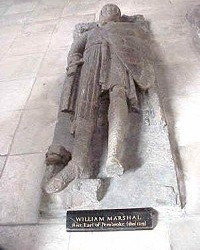
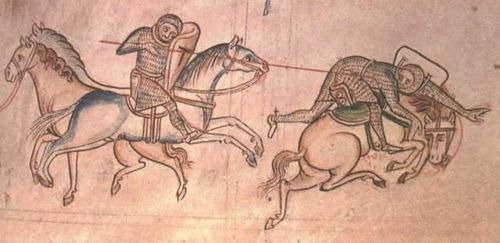
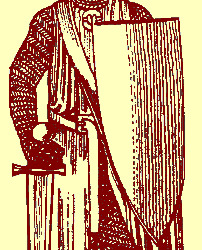

#Middle Ages#knights#chivalry#coat of arms#england#normandy#france#military history#Anglo-Norman#12th century#13th century#medieval#william marshal#henry ii#richard the lionheart#john i#henry iii#magna carta#crusades#knights templar
3 notes
·
View notes
Text
50th anniversary of Bloody Sunday, Pt 1 (The Normans to the Boyne): A historical buildup to January 30th, 1972. Remembering The Troubles in Northern Ireland...
The popularity of tv shows like Britain’s Derry Girls (2018-present) which depicts life in Northern Ireland during the 1990′s near the tail end of the conflict known as The Troubles which lasted officially from the 1960′s until 1998′s Good Friday Agreement has renewed some interest in the conflict and more broadly Northern Ireland, in particular its future. While that tv show is principally focused on the social growing pains of being a teenager and the use of The Troubles is more a backdrop, that comes in and out of the character’s lives and while it is set in a particular time and time, its popularity is a testament to the adage from Irish author James Joyce “in the particular is contained the universal.” It appeals to many people the world over outside of Northern Ireland and has contributed to a slight resurgence in discussion about this corner of the world and its history and indeed wonder about its present and future. As always to understand the present and potentially the future, we need to understand the past. This weekend marks the 50th anniversary of one of Northern Ireland’s darkest chapters and indeed for many, a deciding event in The Troubles, where for some battle lines were drawn and hearts hardened. Leading to another quarter century of conflict...
Historical Overview (The British in Ireland):
-The conflict in Northern Ireland had many short-term immediate causes but also had roots in centuries old conflicts as well. At the heart was the ongoing political presence of Britain in Ireland. This indeed is an issue that goes back to the Middle Ages.
-Following the Norman Conquest of England in 1066, the new Anglo-Norman dynasty and its aristocracy had some designs on expanding their rule to Ireland. In part because Ireland had provided a safe haven for enemies of the Anglo-Normans.
-In the 11th and 12th centuries, Ireland was never historically one united political entity, instead it was a complex mix of various kingdoms that alternately were at peace and war with each other, fortunes waxing and waning with the passing of time. There had been at times, a nominal High King of Ireland, to whom other petty Irish kings owed their allegiance and who held sort of a symbolic position but never exercised total control over the whole of Ireland.
-In 1166 a civil war broke out. A political coalition lead by then High King of Ireland, Rory O’Connor who was also King of Connacht ousted the King of Leinster Dermot MacMurrough. Dermot fled to Wales and onto England & France to request Anglo-Norman assistance in his restoration to the throne.
-Henry II, King of England gave permission for Dermot to use Anglo-Norman soldiers and mercenaries in his program, including an Anglo-Norman noble named Richard de Clare, known to history as Strongbow. As part of Strongbow’s deal with Dermot, he would get to marry the Irish exile’s daughter in exchange for having his soldiers assist Dermot getting back Leinster.
-1169 saw an army of Anglo-Normans and Welsh mercenaries land in Ireland, touching off the first lasting English presence on the Emerald Isle. The Anglo-Normans also eventually included Maurice Fitzgerald whose family was to play a role in Ireland’s history.
-The Anglo-Normans with their heavy armor and fierce and capable fighting skills proved too much for the Irish soldiers of the time, taking Wexford, Waterford & Dublin by 1170. Dermot’s gamble paid off in that he got the High King Rory O’Connor to agree to return Leinster to him in exchange for recognizing O’Connor as High King.
-Strongbow did indeed marry Dermot’s daughter Aoife and after Dermot’s death in 1171, he claimed kingship of Leinster in his wife’s name while her brother also did. Meanwhile, Henry II of England was growing concerned about the ongoing presence of his nobles in Ireland gaining too much local influence.
-Strongbow had his lands in England, Wales & France confiscated by the English crown, so a deal was cut with his King. Strongbow’s lands in all the Anglo-Norman lands in England, Wales & France would be restored, and he could keep his Irish holdings as well in exchange for handing over Wexford, Waterford and Dublin officially to the English crown.
-Henry landed in Ireland with an army in 1172 to enforce his claim. He managed to get both the Gaelic kings of southeastern Ireland to pay homage to him and in addition to the Norman nobles who had semi gone rogue in their mercenary adventure. Strongbow became the first English Chief Justice of Ireland and in time the English kings would take the style of Lord of Ireland.
-The Anglo-Normans in time began to settle and colonize parts of Ireland, gradually expanding into the interior of the country. Many began to disassociate from their Anglo-Norman roots and take on the Gaelic culture of their adopted country. Becoming “more Irish than the Irish themselves” as they were famously described. This impacted Ireland politically and in language, an English presence was now permanent and family names with the prefix Fitz such as Fitzgerald & Fitzpatrick, so associated with Irish culture today came from this Norman naming convention. These families were originally Anglo-Norman in origin before morphing in Irish families and identities over time.
-As the centuries went by, the English maintained their control but limited their influence on the everyday lives of the Gaelic speaking majority and as stated before, many began to identify as Irish. The real sea change of Anglo-Irish intercourse next came in the 16th century Plantation system. This started under the Tudors, specifically Queen Mary though the early attempts to establish English forts were not very successful due to Gaelic resistance.
-The Plantation system was a confiscation of land from the Gaelic speaking Irish, including some of the Old Anglo-Norman Irish, called the Old English. In their stead came more massive settlement from Great Britain from England & Wales. This system was ramped up under Queen Elizabeth I in the 1560′s and beyond.
-The plantations divided Ireland into new areas and in the north of Ireland during the 1610′s under James I, first monarch of the Stuart dynasty that ruled both England and Scotland in personal union, the Plantation of Ulster started.
-Ulster would become an area of particular focus, Irish resistance to English settlement had been very strong here but and it remained outside of English control and under native clans.
-James I, planned the plantation unite the “British” as no longer just an English venture but also include the Scots, half of the settlers in Ulster (made up of six counties) was to be Scottish in origin. As the 17th century would progress a real demographic change would take place in Ulster. Scottish settlers from Scotland’s Lowlands and borderlands with England would leave in droves and along with English settlers from the north of England. They would very gradually over time replace the native Irish as the majority populace in Ulster.
-The native Irish, who were mostly Roman Catholic begin to be more identified with their religion while the English, Welsh & Scottish settlers from Britain tended to be Protestant usually of the Church of England & Ireland (Anglican) and Scottish Presbyterian denominations.
-The Irish Rebellion of 1641 was particular divisive and resulted in a moderate Irish victory in which the Irish Catholic Confederation formed and made an attempt to carve out self-rule. There are reports of the Irish Catholics massacring the British Protestant settlers numbering in a few thousand in Ulster and some revenge attacks by settlers on the Irish in kind. These attacks on the settlers outraged the British and were seared into the memory of the Ulster Protestant community’s cultural memory.
-The rebellion was only a partial success and soon Ireland found itself dragged into the concurrent English Civil War between Parliament and the English Crown. This became known as the Confederate War in Ireland and it also involved Scotland, becoming the War of the Three Kingdoms (England, Scotland & Ireland) since all had the English king as their respective king.
-Initially, Royalist and Parliamentary sentiment in both England & Scotland was inclined to crush the Irish rebels but their own tensions broiled over into civil war in England which eventually saw the execution of King Charles I and the establishment of Parliamentary control headed by the English Parliamentarian and devout Puritan, Oliver Cromwell who became Lord Protector of England, Scotland & Ireland, collectively known as the Commonwealth.
-Politics making for strange bedfellows lead to an unlikely alliance between the English Royalists and the Irish Confederates. In exchange for their help against the English Parliament, the Irish Confederates would be promised self-government and full equal rights for Catholics.
-Cromwell and Parliament invaded Ireland in 1649 to rid themselves first and foremost the threat of the Stuart heir Charles II who was declared King of Ireland. The hope was to shatter Royalist and Confederate strength before it could use Ireland as a staging ground to invade England. Secondly, it was to break up Catholic power which the largely Puritan and other Protestant members of Parliament saw as heresy and threat to their own power. In effect it would avenge the massacres and reverse the losses in 1641.
-From 1649-1653 Cromwell’s forces successfully defeated the Irish Confederates and Royalist troops in Ireland. The garrison of Irish Confederates and English Royalists at Drogheda was killed along with much the population but Cromwell’s troops and like the Anglo-Normans centuries earlier, Wexford & Waterford were likewise taken in succession. Disease and famine exacerbated the losses among the Irish population during this time with estimates varying in a 15-83 percent drop in the overall Irish population, though exact figures are hard to come by.
-Realizing the war in Ireland was a lost cause, Charles II forsook his father’s earlier alliance with the Confederates and left them to their fate. He instead made an alliance with Scottish Covenanters who would aid the Royalist cause in recognition of Presbyterian rights in Scotland. They would invade England but likewise be defeated by the Parliamentary forces in 1651 & 1652. This resulted in Parliament’s control over all three lands for the next decade.
-In Ireland, in particular in Ulster the war and its side effects of famine & disease along with imprisonment of native Irish bound for indentured servitude in England and its colonies in the Americas contributed to a shifting of politics and population to the Protestants.
-Though Protestants remained a minority in Ireland, they began to assume a majority in parts of Ulster. This again consisted of English and Scots settlers.
-After Cromwell’s death and the collapse of the Commonwealth, Charles II was allowed to return to throne of England, Scotland & Ireland in exchange for limitations from Parliament. He reigned from 1660-1685 and during this time he alternated with in his relations with Parliament. He supposedly would become lenient in the Penal Laws enacted against Catholics which impacted Ireland. Then Charles would rescind his policy in favor of improved relations with Parliament, the same was true of his religious policy being seen by the Protestant Parliament as too tolerant of Catholic practices which they saw as idolatry. Ultimately, on his death bed, Charles converted to Catholicism from Anglicanism. He was succeeded by his brother James II.
-James II like his brother towed the line between support for Catholicism and official Anglicanism. His daughters Mary and Anne however had been raised as devout Protestants in support of the Anglicanism. In time, James married Italian princess Mary of Modena and would convert to Catholicism, giving rise to concerns among Protestants that a Catholic heir would be born to the king and a resumption of Catholic rule at the expense of Protestants would take place.
-This concern was especially poignant in Ireland, given the tensions & atrocities of the recent decades. In 1688 on invitation to replace James II was sent by Protestant nobles in Britain to William, Prince of Orange & Stadtholder of the Dutch Republic who was nephew of James II & son in law by marriage to his cousin and James’ daughter Mary. William led an army of Dutch troops and in the so-called Glorious Revolution he landed in England deposed his uncle-father -in-law.
-Mary and William were called to jointly rule England, Scotland & Ireland jointly as Mary II & William III. They promised to uphold Protestantism and ensure its supremacy over Catholicism. James II retreated to the court of his cousin Louis XIV of France, Europe’s leading power of the age. Louis was a major opponent of William and a major reason for his invasion of England was to bring it on side with the Dutch Republic to contain French power on the continent.
-With William & Mary: England, Scotland & Ireland were in personal union with the Dutch Republic, but this was not universally accepted. James looked to restore his throne from his daughter and son-in-law. He needed French backing and also turned to Irish Catholics like his brother and father had earlier. The motivations for the Irish Catholics were his promises of granting political rights in exchange for recognition and restoration of his rule. His supporters became known as Jacobites, taken from the Latin for James which is Jacobus.
-In Ireland, war (Williamite War in Ireland 1689-1691) would soon break out with Irish Jacobites and French troops looking to take over key cities in Ireland and in particular Ulster which was now 50% Protestant even though roughly 25% of Ireland’s population was Protestant at most. Ulster had solidified Protestant settlement in the wake of Cromwell’s success decades before. More English and Scottish settlers had come, additionally, local Irish converts to Protestant alongside religious and political Protestant refugees from France, Germany and later the Dutch Republic also joined in part to escape the wars with Catholic France. The majority of these Ulster Protestant settlers however were Scottish and Scottish culture and Presbyterian religion predominated. In time the Scots, English, French, German & Dutch Protestants would congeal into a community known as Ulster Scots or Ulster Protestants, this community would also become known particularly in America where many later emigrated as Scots Irish.
-Jacobite forces began to skirmish with Ulster Protestant militias at Enniskillen & most famously Derry/Londonderry. The Siege of Derry in summer of 1689 was particularly desperate for the Protestant defenders, they gave the political rallying cry of “No Surrender”, still used by Northern Irish Unionists today. Thousands of Derry Protestants died due to disease and starvation during the French-Jacobite siege, but Derry’s now famous stone walls proved too stout to overcome. Eventually, a Protestant relief naval force from England arrived and broke the siege in later summer 1689.
-1690 saw William himself land in Belfast with a relief force meant to confront James and take Ireland into his full control. The force was a mix of English, Welsh & Scot regulars alongside Dutch regulars, French Huguenot & Danish auxiliaries. Also joining were the militia regiments of Ulster Protestants from Derry and Enniskillen who James held in high regard relative to his English and Scottish regulars. They defeated James at the Battle of the Boyne. James fled back to France while William returned to England. His armies mopped up the Jacobites by 1691 and the peace was tenuously restored by the Treaty of Limerick. Though tensions obviously remained. As the 18th century and the Protestant Ascendancy in Ireland dawned, more changes and events would impact Northern Irish history...
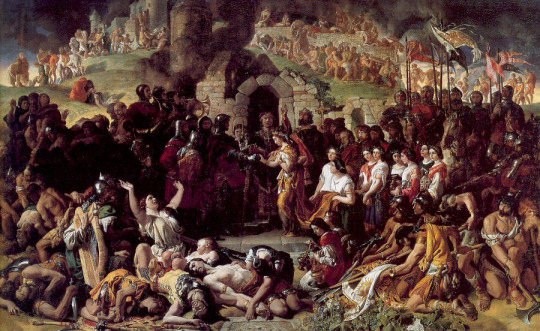


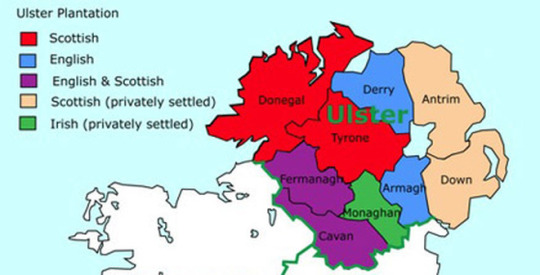


#ireland#ulster#derry#northern ireland#derry girls#anglo-norman#norman invasion#irish catholic#irish protestant#ulster scots#military history#ulster protestant#rebellion#plantation of ulster#jacobites#williamites#orange order
4 notes
·
View notes
Text
1066 Pt 1.: Formation of the Kingdom of England and Duchy of Normandy. The Norman Conquest of England; Anglo-Saxon rule comes to an end as William the Conqueror is crowned King of England 955 years ago this month.
There are certain watershed years in history where literal and figurative changes of the guard occur. When it comes to the history of the British Isles and in particular England no year perhaps is singularly linked to a changing epoch as the year 1066. The year would see three different Kings of England and multiple other claimants to the land’s richest prize. The year would start out with the incumbent king on his death bed, without clearly designated heir and no child relation to pass the crown onto. The second king would derive his claim from his close proximity to the king, his noble position and a supposed death bed appointment to the throne but facing an unsecure reign he’d have to face multiple threats to his reign. The third king would enforce a supposed earlier claim promised by the first king years before and he’d use military force to ensure his claim’s security. It was a year of uncertainty for England from start to end but it initiated a transition that would come to redefine a nation and leaving lasting impacts that survive into the modern era.
Overview: The rise of Welsh, Anglo-Saxon & Norman identities.
-In the wake of the Western Roman Empire’s decline during the 5th century AD. It’s northernmost province of Britain was largely abandoned in terms of military protection. Rome was facing other threats elsewhere, namely to the Italian heartland of the empire and other continental territories. The province of Britain was no longer considered viable to defend and this left it vulnerable to civil war and threats from abroad.
-Britain’s population in modern England, Wales & southern Scotland were ethnically mostly a Celtic speaking people known collectively as the Britons who had been made up of many tribes prior to the Roman occupation. The tribes spoke the same language Common Brittonic or the Brythonic Celtic language. In time these people would morph mostly into the modern Welsh along with the Cornish of Cornwall and Bretons of Brittany in France. Though the elite identified as Roman, having fused Roman culture and luxury with their British origins.
-However, in the wake of Roman withdrawal the British or Romano-British begin to take a new more local identity one that put their Celtic origins and language at the forefront but still retained Roman imported ideas and culture, including Christianity. In time, the Britons (Welsh), forged distinct sub-kingdoms throughout the land. Yet, they faced threats from their fellow Celts in Ireland, the Gaels in particular from Ireland who were settling in Scotland and fusing with another Celtic people, the Picts. The Gaels of Ireland and Scotland began raiding post-Roman Britain with an increased frequency from the days of Roman occupation.
-To counter this, as the Welsh sources attest, a British king known as Vortigern invited Germanic mercenaries, namely Hengist & Horsa to lead an army of Germanic peoples from various tribes including the Angles, Saxons & Jutes mostly from modern Germany, Denmark & the Low Countries to help fend off the Irish and Scottish raiders in exchange for small settlement in south-eastern Britain, what is now County Kent.
-These Germanic mercenaries were still practicing Germanic paganism and after the initial wave, saw more numbers arrive in the southern portion of Britain. In time they were form the founding population of what became the Anglo-Saxon or English peoples. While a common perception was that the German Anglo-Saxons which came from multiple German tribes who simply slaughtered and pushed back the Britons to the farthest corners of the land, it is now believed through genetic & other historical evidence the Anglo-Saxon identity forged from the majority Britons intermarrying with the Germans while the Germans formed a small but elite ruling populace.
-In turn the Britons adopted the Anglo-Saxon culture and language while gradually the Anglo-Saxons adopted Christianity in turn from the Britons. Those Britons who did not join in Anglo-Saxon culture found themselves in the westernmost more northerly regions of Britain. Specifically, the peninsulas of Wales & Cornwall, where a common people relatively cut off by Anglo-Saxon rule formed them into distinct and more modern Welsh & Cornish identities that persist to this day. Some Britons also fled to the Amorica province in France which became the peninsula of Brittany, named as the Britons or Bretons in French who settled there. A fourth group of Britons in northern England & lowlands of Scotland formed the Cumbric people or dialect of the Brythonic Celtic language. These regional variations would survive for some time with all being threatened out of existence. Though Welsh, Cornish & Breton language and culture survives in the modern era.
-The Anglo-Saxons were hardly a united people among themselves as much as they fought their Celtic neighbors, they also fought each other and saw themselves divide into distinct petty kingdoms as well. These were East Anglia, Essex, Kent, Mercia, Northumbria, Sussex & Wessex.
-793 AD saw the traditional dawn of the Viking Age when Scandinavian raiders attacked the Anglo-Saxon monastery of Lindisfarne in Northeast England. These Scandinavians were like the Anglo-Saxon settlers of Germanic ethnolinguistic origin. However, they tended to hail from further north in modern Denmark, Norway & Sweden. They also still retained the Germanic pagan religion. The reasons for the subsequent outbreak of Viking raids across Europe range from simple opportunism to a population boom in Scandinavia or some combination of these factors and others.
-The raiders by profession became known as Vikings which has become a catch all term for Scandinavians from the 8th-11th centuries. It is a misnomer though it does describe a sort of distinct culture that resulted from these raids and subsequent colonization. Viking raids began to spread throughout Britain and beyond. They were very successful in Britain & Ireland due to the divisions among the Anglo-Saxon kingdoms and the various Celtic peoples including the Scots, Welsh & Irish. Sometimes they would ally with the locals against other locals, but they also helped reshape the Anglo-Saxon identity of less a regional one and more of a unified nation.
-The Kingdom of Wessex of southern England was to emerge as the leading Anglo-Saxon kingdom. Alfred the Great (848/849-899), the King of Wessex lead an army of West Saxons to defeat the Danish Vikings in 878 at the Battle of Edington. He signed a treaty that more or less divided England with the Viking settlements in the Northeast. This combined with the conversion to Christianity of Viking leaders bought Anglo-Saxon identity more time to coalesce into an English identity.
-Danish raids continued and in time Wessex absorbed the declining Mercia and fought while fighting the Vikings further north. By 927 this became the foundation of the Kingdom of the English, or England under Aethelstan.
-From 927 onward England grew in power eventually pushing most remnants of Viking influence out of its borders and it looked to border the growing Kingdom of Scotland to the north and the various Welsh principalities to the west. The English monarchs would hail from the House of Wessex, but they were notably an elective monarchy not an absolute one driven by inheritance. The leading nobles or earls of Anglo-Saxon England essentially needed to approve the rule of the King.
-While the Viking influence in England waned as the 10th and 11th centuries wore on. They did not fully cease in Europe, and they took hold of political power elsewhere and this included across the English Channel in France.
-In France, the Kingdom of the Franks had formed between the Germanic Franks and the Gallo-Roman peoples, a people speaking a dialect of Latin and who were ethnic Celts and Roman colonists under a unified Roman culture. These people fused with the Franks to given birth to a distinct French nation. Though this kingdom like the Anglo-Saxon ones in Britain were divided, centralized power varied from the times of Charlemagne.
-Vikings raided France by use of its many rivers flowing to and from the Atlantic coastline. One Viking of unknown Scandinavian origin was Rollo who in 911 after raids in the Seine River valley made a deal with Charles III, King of West Francia. In exchange for conversion to Christianity, protection from other Viking raids and a promise to no longer raid Frankish lands, Rollo would be given a semi-independent land grant and title as Count of Rouen. The County of Rouen would be a nominal vassal of the Frankish kings but largely be independent. Rollo and his fellow Vikings formed the core of a new people, the Normans.
-In time Rollo’s dynasty and followers would adopt the language of the French language and intermarry with the Franks, Gallo-Romans and some Bretons who lived among the Viking colonists from Scandinavia and along with other Viking settlers from Britain and Ireland including Norse-Gaels. The new Norman ethnogenesis was so named because of its patrilineal Viking origins coming from the North, so they became known as Northmen or Normand in French. Gradually, the County of Rouen expanded and overtook over lands held by other Norman-Frankish nobles, its rulers would no longer be just the Counts of Rouen but come to rule a duchy and the territory would become known as the Duchy of Normandy and indeed the geographic region maintains the namesake of the Norman people to this day.
-Technically, Richard II (r.996-1026) was the first official Duke of Normandy, he was Rollo’s great-grandson though the title of Duke of Normandy is commonly applied to Rollo on down even if the title was not used until the 11th century.
-Richard II had multiple sons and two would succeed him as Duke of Normandy. The first was Richard III who reigned roughly a year before dying and being succeeded by his younger brother Robert I. Robert I had mistresses, one of whom was the daughter of a Norman tanner, her name was Herleva of Falaise. She bore him as least one known son though they never married. This son was known as William, great-great-great grandson of Rollo though his father.
-William was born circa 1027-1028 in Falaise. The only known child of this union, his mother would have two sons by her marriage given William half-brothers and he had a half-sister by his father’s affair with another woman. because his parents never married before or after his birth, he was considered illegitimate in the eyes of canonical church law, this earned him one of his many monikers, William the Bastard.
-This status as not legitimate had potential political connotations under both Norman and broader European law as often only legitimate born children to married parents could claim inheritance. This was not universally practiced even the earliest Counts of Rouen/Dukes of Normandy had a history of illegitimate birth since they took brides in the so called “more Danico” (Danish manner), a Scandinavian tradition of basically a pledge of union without an ecclesiastical officiant to oversee the marriage, this was more akin to a common law practice of cohabitating long enough to be considered for legal purposes man and wife.
-In 1035, Robert I underwent a pilgrimage to the Holy Land in Jerusalem and before his departure, he held a council of other Norman nobles to recognize William as his rightful heir by the pledge of fealty. Robert died in the Byzantine Empire in modern day Turkey on his return to Normandy.
-Despite the pledge of fealty given, William’s accession to ducal authority was no guarantee. Though he did have support from both is great-uncle the Archbishop Robert and King of France Henry I. more crucially he needed the support of other Norman nobles. Soon civil war followed because other Norman nobles could not accept his illegitimate birth and his youth as acceptable.
-William would spend the next several years nominally recognized as duke but facing private wars between his nobles over functional control in the duchy. In 1047 with the support of Henry I of France, William and his loyalists won the Battle of Val-es-Dunes against various Norman rebels. The combined Franco-Norman army proved too formidable for the rebels and from there William gradually assumed more central authority over his duchy, this would occur with major operations lasting until 1054 and ongoing lower-level fighting until 1060.
-William would also fight with Henry I against the other French fiefdoms which were like Normandy nominally vassals of the French king but essentially independent in their own affairs. William perfected his knowledge of warfare in these campaigns as well as the fights against his own rebel nobility. He at times could be known for his vicious temper and cruel treatment of foes but this was not out of the norm for Medieval rulers.
-Normandy was a very powerful and influential place by the 11th century both in France and abroad. Norman culture took the French language, added Old Norse influences and it survived as a distinct literary and spoken dialect known as Norman French even surviving in the Channel Islands of Jersey and Guernsey in the modern era. The Normans also in time following Rollo’s conversion adopted Christianity and became ardent Latin or Roman Catholic proponents. In the coming decades and centuries, they would serve as Crusaders some becoming rulers of Crusader states in the Middle East in their own right. They also developed distinct architecture in castle building and church building. They patronized the arts especially in music and literary arts like poetry with their own distinct flavor. The infused Frankish and Catholic canonical law with injections of Scandinavian customs and created a distinct Norman law of customs or common law as well. Mostly, the Normans would be known as a martial people. Never forgetting their Viking roots, they continued to practice and drill heavily in warfare, making adept raiders they also cultivated new warrior traditions becoming archers, good siege warriors and in particular heavily armored cavalry. Norman mailed knights became the tank of their day, armed with swords and other contemporary weapons. Norman soldiers with their heavy armor and fierce fighting spirit harkened back to their Viking ancestry becoming feared and prized mercenaries, but their greatest strength was the amalgamation of adaptable tactics, embrace of new technology and well-drilled discipline...
1066 Pt, II: -The geopolitics of 1066, Harold Godwinson’s reign, rival claims to the throne & Norman Invasion...

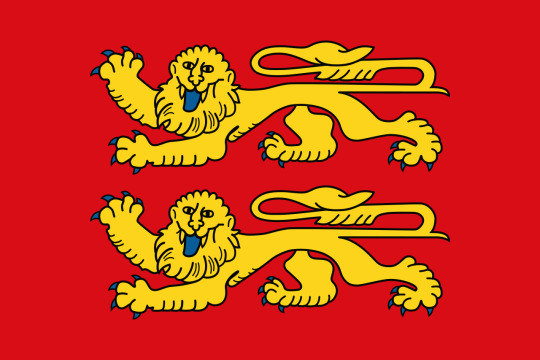
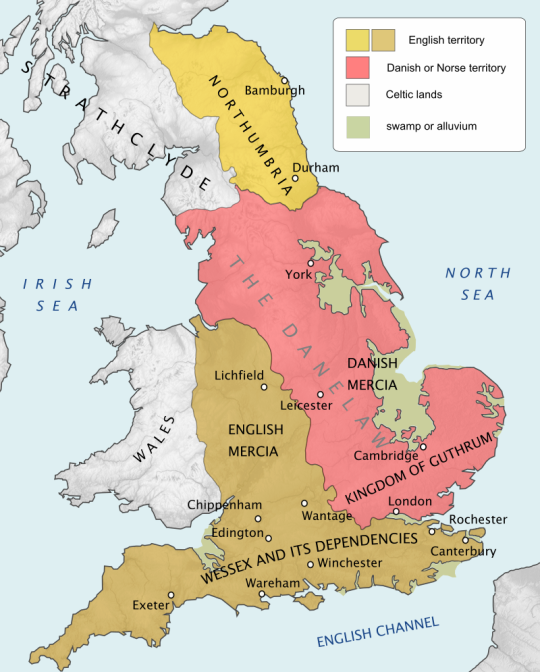
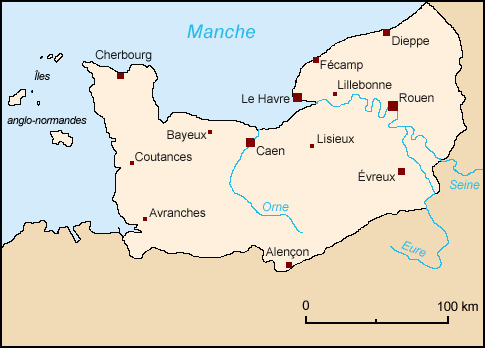
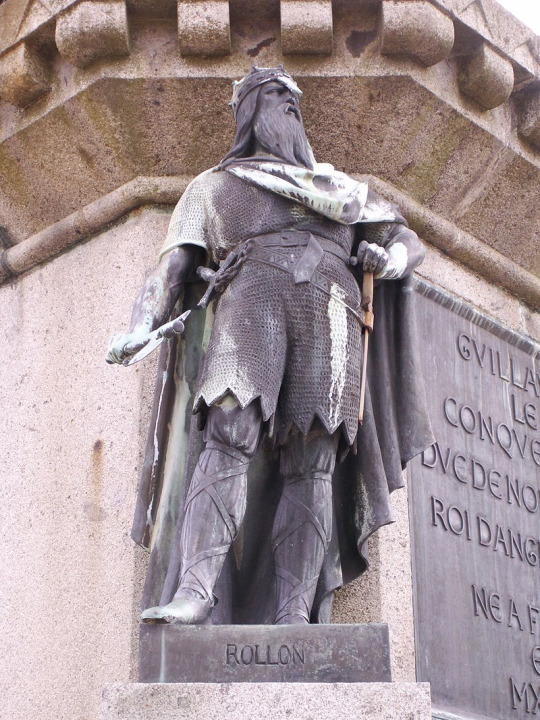
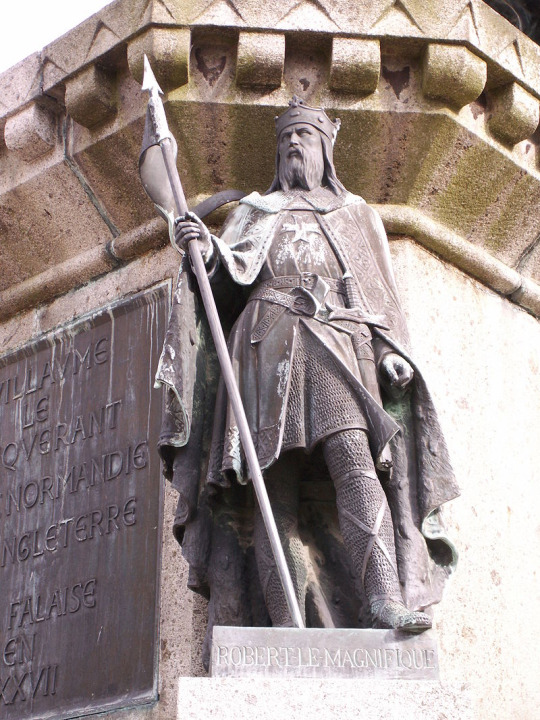
#normans#nomandy#duchy of normandy#anglo-saxon#britons#england#wales#scotland#Ireland#france#medieval#military history#vikings#norway#denmark#sweden#rollo#william the conqueror
1 note
·
View note
Text
Mummy/coffin portraits part I: Real life depictions of the departed in Roman era ancient Egypt. A picture of ancient Egyptians utilizing Greco-Roman art...
There are at least two well documented periods in history, far apart in time and culturally quite different in which a realistic portrait of the recently deceased was placed with the coffin or sarcophogus of the dead. What these images do is leave us with a picture of not only the deceased but accurate depictions of people in particular societies well into the past and as well as provide glimpses of customs for the remembrance of the dead.
We’ll look at first are the mummy portraits from antiquity of Roman Egypt spanning about the 1st century BC through the 3rd century AD. These portraits were found painted on wooden boards affixed to the mummy of the nobility in Roman Egypt, largely in the city of Fayum. About 900 of these portraits have been found in the modern era. Roman Egypt came about officially in 30 BC following the death of Cleopatra VII, better known as just Cleopatra and the death of her lover, the Roman general Mark Antony.
Cleopatra was the last Queen of Ptolemaic Egypt, a Greek dynasty established in the late 4th Century BC following the death of Alexander the Great who conquered Egypt as part of his campaign to take over the Persian Empire. His general Ptolemy took Alexander’s body to the new capital Alexandria and established a Greek dynasty that bore his name and lasted for nearly three centuries. The Ptolemaic dynasty saw large numbers of Greek colonists settle in Ancient Egypt. The ruling elite became Greek but the majority population remained native Egyptian but also included Egyptians who adopted Greek culture. Although the Ptolemies did maintain Greek traditions and bring a Hellenized culture to Egypt, they also took on local Egyptian culture. This cultural interface worked both ways and resulted in hybrid god and goddesses of both religious traditions. artwork, language and politics. The Ptolemies also referred to themselves and depicted themselves as Pharaohs like native Egyptians who once ruled in eras past.
Cleopatra VII was the last in this line of Greek rulers and she found herself in relationships with both Julius Caesar and later Mark Antony in the Roman era. Rome got involved in Egyptian politics in part because its expanding empire bordered on the area and because Egypt supplied much of the grain imports to the Roman Republic. Cleopatra and Antony were pulled together at the conclusion of the Roman civil wars at the end of the Roman Republic following Julius Caesar’s death. His great-nephew and adopted son Octavian fought against and defeated Antony and Cleopatra in Egypt. The lovers took their lives rather than be taken prisoner and marched through Rome in a victory parade. With their deaths, Octavian had whole control over Rome’s territory and in the coming years he worked his political magic with the Roman Senate to become the first Emperor of Rome, better known by his honorific title Augustus (Latin for venerable or majestic). Egypt became personal property in union with the Roman Emperor. Like the Greeks before a number of colonists from Rome moved to Egypt and settled with the Greeks, Jews and native Egyptians.
The Romans in some ways continued things as they were in Egypt but synthesized the Egyptian traditions less than their Greek predecessors. They also thought of the Greek colonists as Egyptians, though the Greeks would have identified as Hellenic people and the native Egyptians who largely were segregated from the Greeks likewise would have not thought the Greeks as their own.
That said, there was some degree of mixing between Greeks and Egyptians and Romans with the Greeks and Egyptians. The city of Fayum saw its share of Greek and later Roman colonists, some of who married local Egyptians and served as its upper class of soldiers, civil servants and merchants. The Fayum mummy portraits depict this upper class as most could not afford such artwork. These are largely believed to be painted after the death occurred.
While the artwork depicts the Greek and later Roman style natural portraits, those depicted originally thought to be Greek or Roman colonists were in fact found through modern DNA analysis to be mostly of native Egyptian background, having DNA closer to earlier Ancient Egyptian mummies. This helps support the belief that the genetic imprint of the Greek and Romans on Ancient Egypt was in fact relatively small and limited in its depth and span.
Though some depicted were indeed Greek or Roman, the vast majority appear to be native Egyptian. Granted these were Egyptians who had become Roman citizens and culturally took on aspects of the Greek and Roman ruling elite. They would have been a small community and occupied a unique space between their native community and the Greco-Roman overlords. In general, the Romans treated the Greeks as slightly less than themselves in their hierarchy but more or less as collaborators while the majority of native Egyptians particularly the peasantry as a conquered people at the bottom of complex and enforced yet not completely rigid or restrictive social hierarchy.
The Fayum mummy portraits give us a glimpse at the Roman fashions of the time and their popularity among the Greek and Egyptian upper class that synthesized in the city. They show unique dress, jewelry, hairstyles and other aspects of daily appearance. The also provide a glimpse of course of the fusion of Greco-Roman art coupled with Egyptian mummy making traditions. Finally, they provide us with a sort of historical window into what both some Ancient Egyptians and Greco-Roman colonists settled in Egypt would have actually looked like in their day to day lives. A truly unique glimpse into three ancient societies layered upon and interwoven with each other...
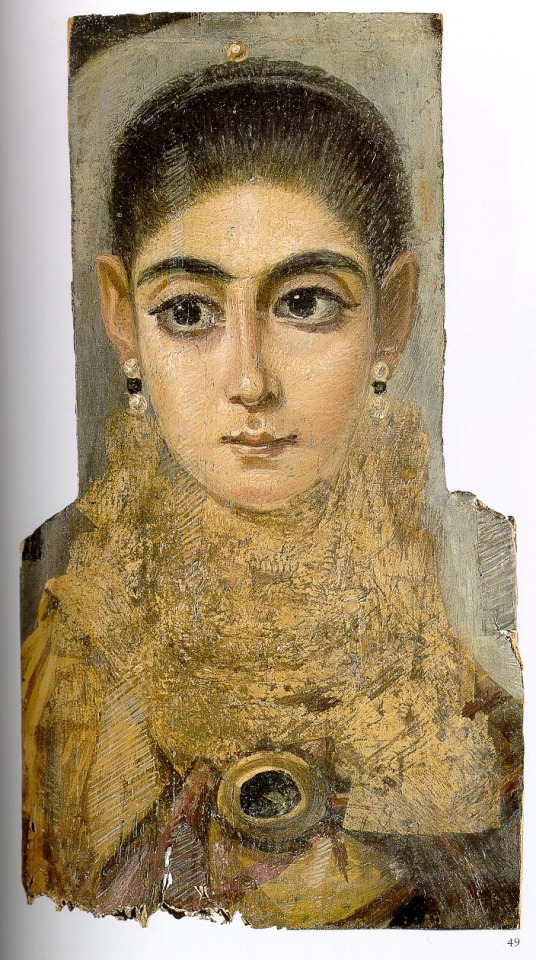
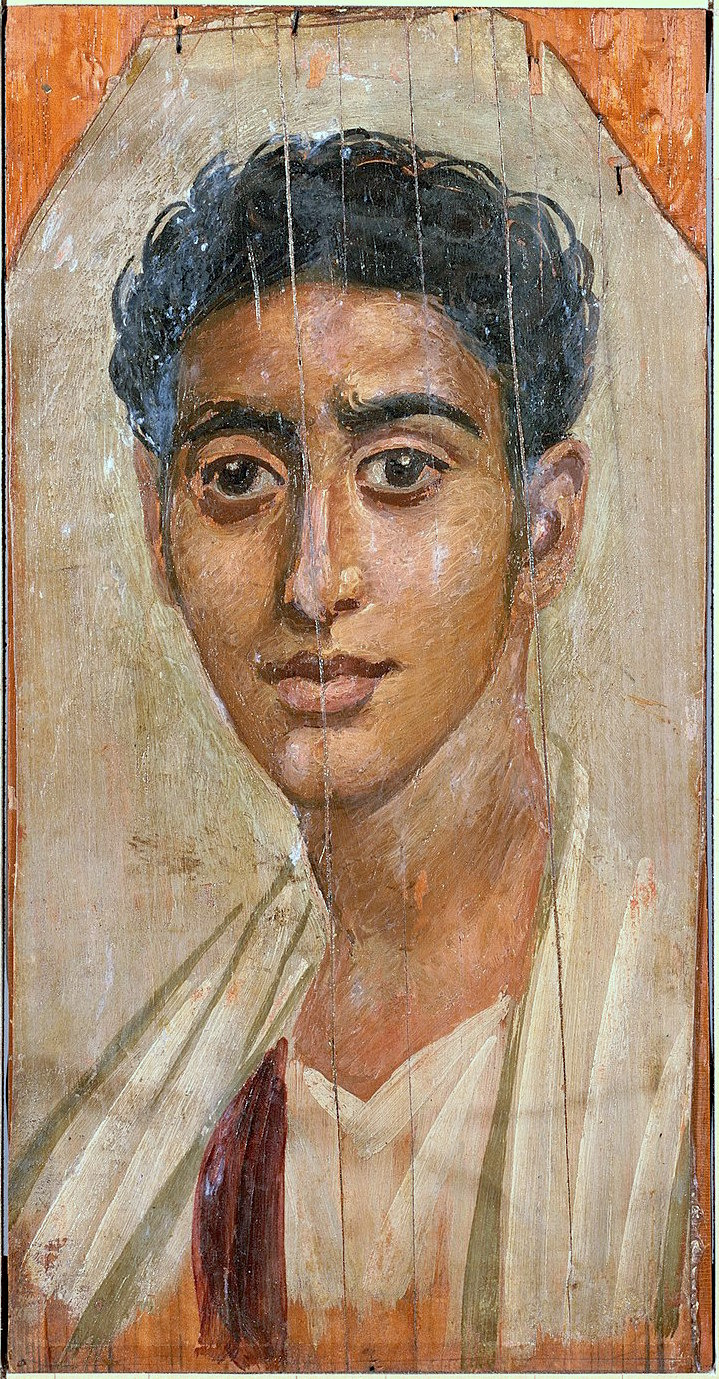
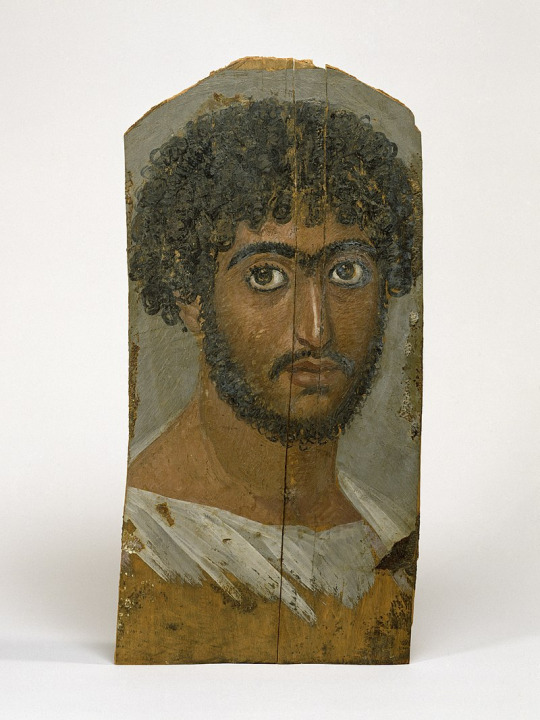
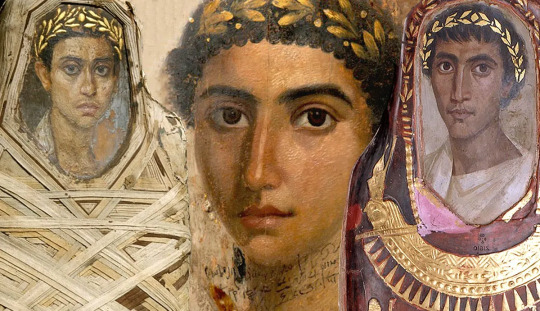
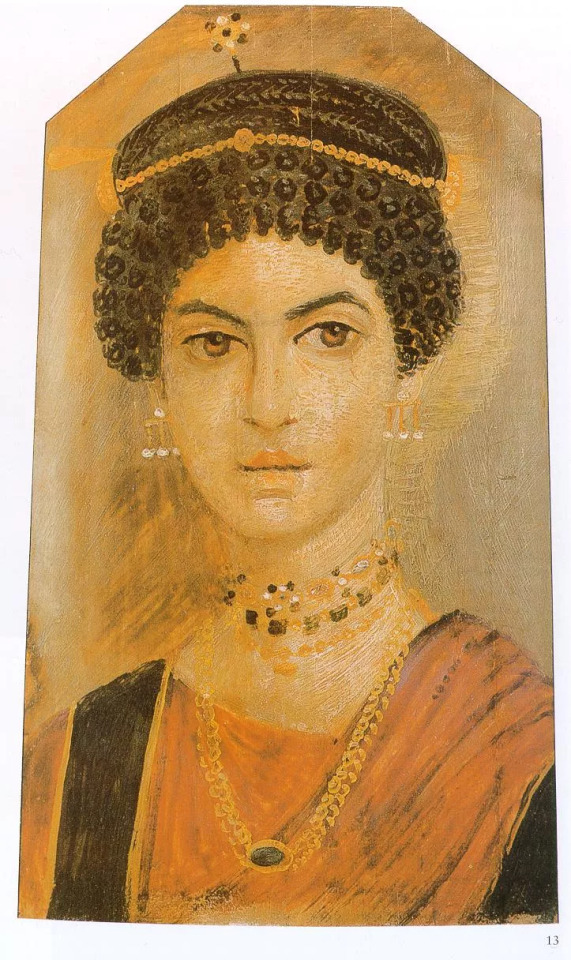
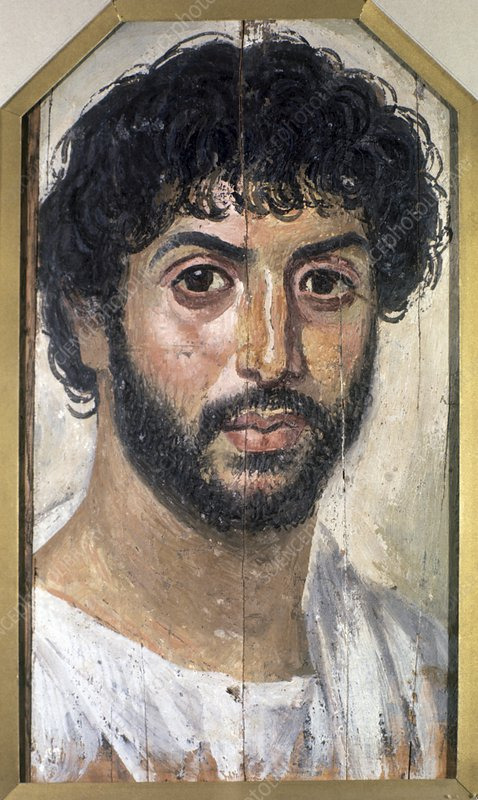
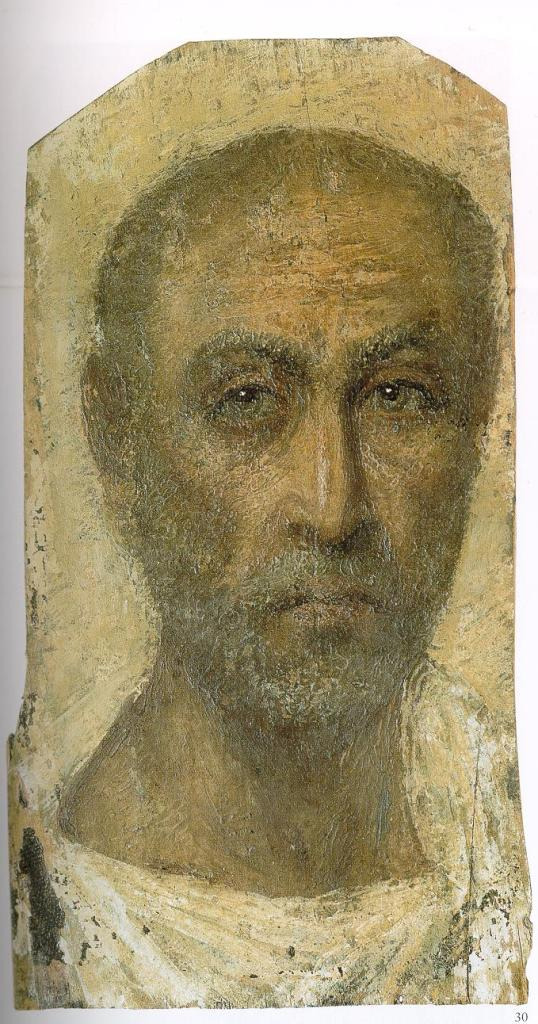

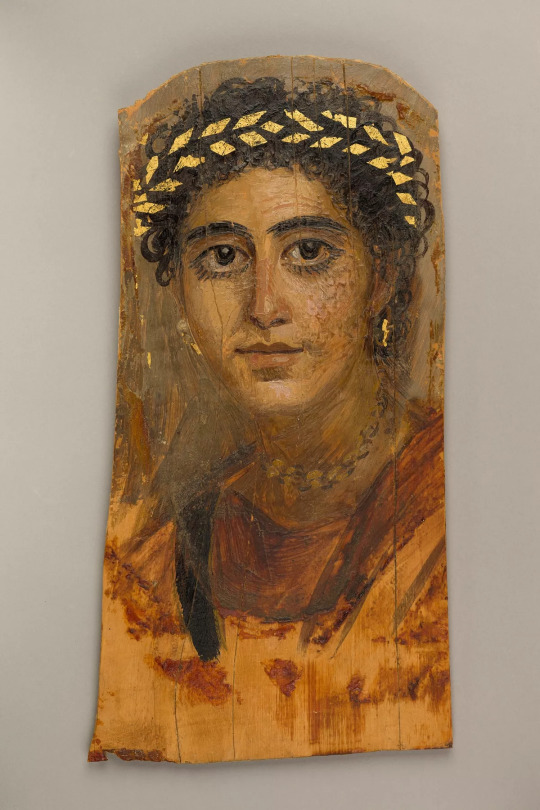
1 note
·
View note
Text
The Battle of Karnal 1739: Persia’s Nader Shah alters the history of India in 3 hours on the battlefield...
The 16th century saw the, rise, zenith, conflict & coexistence of the three Islamic Gunpowder Empires, so called for their major use of gunpowder based firearms and artillery: The Ottoman Empire (Turkey), Safavid Empire (Persia) & Mughal Empire (India). These empires had similarities & differences abound and while on the surface all were Muslim dynasties with some level of overlap they also came from different origins and had oftentimes competing self-interests. By the 18th century all shared a similar downward trajectory in terms of political fortunes. We’ll detail how those trajectories started to fan out and how one episode in particular hastened the fate of one of these empires, in the aftermath of another...
By the early 18th century all three Islamic Gunpowder Empires were reeling from conflicts, whether they knew it or not, their once great heights and good fortune had begun to decline or was on the edge of collapse. For the Ottomans power was checked after two centuries of continual expansion, the disastrous Siege of Vienna (1683) saw their defeat at the hands of the Holy Roman Empire, Poland-Lithuania, Russia, Venice and other European powers. By the conclusion of the Great Turkish War (1683-1699), the Ottoman Empire was forced to give up significant areas once under their control or influence, most notably Hungary which saw them pushed back to the Balkans and would start unknown to many at the time, a two and half century decline culminating in its collapse post World War I (1914-1918).
The Safavids, a dynasty originating from a Shia Sufi Islamic religious order of mixed ethnic Kurdish, Georgian, Turkoman, Circassian & Greek origins restored “native” Iranian rule to Persia (Iran) (by virtue of their Kurdish origins) for the first time in centuries following foreign rule by Arabs, Turks & Mongols. Yet, despite foreign rule Persian language, administrative acumen & culture, particularly in the arts persisted, becoming the de-facto language of poetic tradition in Islamic tradition. Persian culture throughout the Islamic world was widespread, being used and taught by their Ottoman rivals and the Mughals to their east. The Safavids were major patrons of the arts and pushed a Persian renaissance from their rise in 1501 until their end, peaking under Shah Abbas the Great who reigned from 1588-1629. Their empire extended from parts of Anatolia, the Southern Caucasus & Iraq to Afghanistan and from Bahrain to Central Asia. Their greatest rival was the Sunni Ottoman Empire to the west, the Safavids faced alternating periods of dominance & loss of Iraq, Armenia, Azerbaijan Georgia & Turkey with an ever shifting border thanks to multiple wars with the Ottomans as well as some wars with the Russians and the Uzbek khanates on their northern borders. Additionally, European maritime powers like England & the Netherlands and others dominated trade in the Indian Ocean and this cut off Iran from crucial overseas trade routes which hurt the economy already strained by repeated rebellions & raids from various Turkic and other Iranian groups. To add to the mix following Shah Abbas the Great for the most part, Iranian court politics became dominated by competing figures from the Shah’s harem, alongside religious clerics & other interested parties. The infighting and domestic upbringing of many of the subsequent Shahs ensured their political weakness and ineptitude, leading to a lack of strength in government affairs. In the early 18th century this came to a head with its sudden collapse in 1722 from the Pashtun tribal Hotaki dynasty which arose in rebellion from Afghanistan and marched towards Iran’s then capital Isfahan and overtook the Shah Husayn who abdicated and recognized Mahmud Hotak as the new Shah ruling over Iran. We’ll return to the fallout from the collapse of the Safavids as it will play into the Mughals decline too.
The Mughal or Moghul (Persian for Mongol) dynasty descends from both the Turco-Mongol ruler Timur (Tamerlane) and Genghis Khan himself, it was known as the Timurid dynasty originally, having come from Central Asia a ethnic mix of Turk & Mongol and culturally influenced by Persian, Turkic & Mongol traditions, the Mughals overtook parts of Afghanistan in the 16th century before supplanting the Delhi Sultanate in 1526 and making Northern India its new center for a rising empire. Islam had existed on the Indian subcontinent for centuries but the Mughals were its epitome. They were influenced by Persian language, architecture, horticulture and arts and synthesized it with native Indian influences among others. Through gradual military conquest and administration, the Mughals spread their control over the mostly Hindu populace of India, though conversion to Islam and Islamic culture increased in its reach. Examples of the Mughals influence are reflected today notably in the many forts they left like the Red Fort of Delhi, Agra Fort & in the mausoleum the Taj Mahal alongside ornate & symmetrical Persian influenced gardens.
By the late 17th century into the first decade of the 18th century they had their peak of geographic control under Aurangzeb, the sixth Mughal Emperor who reigned from 1658-1707. Aurangzeb was a devout Muslim who depending on the source was either relatively tolerant or fairly intolerant of other religions unlike his ancestors who despite their faith had a more or less tolerant approach to Hindus, Sikhs and other non-Muslims of India. He engaged the empire in a seemingly endless war to conquer the Deccan Plateau in West Central & Southern India, opposed to him were the former vassals of the Mughals, the proudly Hindu Maratha Empire. The Maratha were a warrior caste of former farmers from the Marathi people of the Deccan Plateau, they had gained prowess for their determination in battle alongside guerilla style war tactics and while they controlled many hill forts that could be subsequently taken over by the Mughals, they would simply take control of new forts or strike the Mughals overstretched supply lines prolonging the war interminably.. The war alongside Aurangzeb’s large army and floating war camp of great size was expensive to maintain and left the Mughal economy once incredibly wealthy and robust still sizable but much reduced. Aurangzeb died in 1707 having conquered much territory but unable to subdue the Marathas. Following his successor's death in 1712, the Marathas crossed the Narmada River and began a gradual pushing back of the Mughals becoming the new rising superpower in India.
In the aftermath of the rise of Marathas, the Mughals faced many internal challenges besides an economy in ruins, many Mughal governors and nobles began to carve out power for themselves in local areas which decentralized power alongside corruption and an antiquated military system meant the Mughals were unable to always coordinate a mutual defense for the whole empire and when they did, it was slow moving, awkward and outdated. This took power away from the Emperor, Aurangzeb being the last absolute ruler of the Mughals whose power commanded virtually all. It is in this environment of a receding Ottoman Empire, collapsed Safavid Empire and fracturing Mughal Empire that our story takes shape and the collapse of the Gunpowder Empires is perhaps best crystallized in the 1739 Persian invasion of India by one Nader Shah.
Nader Shah (1688-1747), as I have mentioned in a previous article of mine rose from being a peasant in Khorasan region of Northeastern Iran to a local warlord. Nader was of a Turkoman ethnic background but was culturally Turco-Persianate. Nader was a very powerful local warlord at the time of the Safavid abdication in 1722 overthrown by the Hotaki dynasty which now sought the allegiance of all warlords and nobles in Iran, only Nader refused to swear fealty. This lead to him siding with the Safavids in exile lead by Tahmasp II alongside the Qajar Turks (future Shahs) in a war against the Hotakis, he defeated them in Afghanistan and then marched towards Isfahan driving them out and restoring the Safavids under Tahmasp. Rewarded with a governorship and marriage to Tahmasp’s sister, Nader’s profile rose greatly. He then turned back the Ottomans and Russians who had carved out Iranian territory for themselves in the chaos of the Hotaki uprising.
Nader’s tactical prowess and diplomacy made him a rising star as the premier general of the restored Safavids. However, the Shah Tahmasp II was envious of his top general’s prominence and while Nader continued the war with the Hotakis (resolved in 1738) in the east, Tahmasp lead a failed campaign against the Ottomans and signed a treaty undoing Nader’s earlier gains. Nader decided to remove Tahmasp from power himself. Getting the Shah drunk on alcohol in public and in front of his court following his recent defeats which brought shame to the nation, Nader used this as a pretext to create a essentially a vote of no confidence in Tahmasp’s leadership and he was forced to abdicate in favor of his son Abbas III who was a child and making Nader the young Shah’s regent, becoming the ruler of Iran in all but name. Nader resumed the war in 1732 against the Ottomans and initially it went bad being defeated at Baghdad. However, this was to be his only defeat and a series of victories followed culminating in the 1735 victory of Yeghevard fought in Armenia which undid the Ottoman resolve and forced them to sign a peace treaty the next year giving up Northwest Iran, Azerbaijan & Armenia, the Russians would also sign a treaty withdrawing from the area.
The same year as the treaties with the Turks & Russians, Nader decided to make himself Shah in name. This was suggested on a hunting trip with Iranian nobles in the Moghan plains between Azerbaijan & Iran. He called a qorotai, a Mongol & Turkic tradition of calling the leading nobles to a conference where they signed a document affirming their approval of Nader’s ascent to the throne officially making him Shah in the same tradition of Timur and Genghis Khan to their respective ascents to power. Nader removed Abbas III from his nominal kingship and officially ended the Safavid dynasty for all time.
During Nader’s earlier days as a warlord & general and now as Shah of Iran and founder of the Afsharid dynasty (named after his Turkic tribe) had always instill military reforms. The first of which was to upgrade the importance of the infantry, using gunpowder based firearms, he developed several corps of reformed and well drilled infantry, the most elite and often decisive in battle were the jazayerchi who fired a musket of heavier caliber than the European equivalent of the day, it was also capable of greater range and accuracy. Nader’s jazayerchi corps drilled constantly in terms of marksmanship and speed. Nader also believed in elements of meritocracy and promoted the top marksman to lead regiments. The musket infantry was important in securing the defense of mobile artillery and cavalry, freeing up these two arms of the military to maneuver less impeded in battle than in previous iterations of the Persian army.
In terms of cavalry, the horses which previously were the personal property of the horsemen were now state “issued” and trained in all kinds of tactics, flanking maneuvers (a favorite of Nader’s), encirclement, feigned retreat, fighting in the steppe warrior tradition but no longer with bows and arrows, instead a combination of swords, lances, pistols & muskets allowing the Persian cavalry, a mix of Iranians & Turks to become more tactically flexible, serving as scouts and skirmishers. Additionally, a royal bodyguard numbering in the thousands in service to the Shah himself was considered the most prestigious horseback regiment.
Artillery also underwent crucial changes with Nader. He created permanent production factories, cannon foundries churning out guns and cannonballs for his campaigns. He also developed mobile workshops to build and repair artillery while on campaign. Another innovation was the zamburakchi, a corps of mobile artillery using small swivel guns mounted on the backs of camel which suffered short range and accuracy issues but when fired in mass compensated by devastating enemies at close range.
By the late 1730′s Nader sought to finish off the Hotaki which still rebelled against his rule and by 1738 he defeated them as an entity though a number of them escaped from Afghanistan into modern day Pakistan & India, then part of the Mughal Empire. Nader asked the Mughal Emperor then Muhammad Shah (reigned 1719-1748) to turn over the convicts as treasonous criminals in Persia. Muhammad Shah refused, supporters of Nader will argue that Muhammad Shah’s reluctance was unfounded and a simple request to comply with. While others with less sanguine views of Nader argued Muhammad Shah likely had little ability to comply. with a decline in central authority to act on the request and given the large territory the Afghan rebels could hide in, it was deemed not very practical to apprehend them. On these grounds, Nader Shah declared war against the Mughal Empire.
Muhammad Shah of the Mughal Empire saw in his three decade reign a rapid decay in the empire’s stability, decentralization & corruption were rampant and any chance at meaningful reform went unheeded due to lack of cooperation and coordination among the Mughal nobility. Additionally, the Marathas through war was gradually chipping away at Mughal territory. The Mughal military though large was not formally coordinated and was in fact armies who were raised locally at the behest of the local nobility and governors and not the emperor, rank and file troops and their equipment were of decent but varying and uneven quality but the leadership was divided by personal rivalries and ambition. Many cannons for example were large and best use as siege guns but not field guns and were therefore antiquated and ill suited for pitched battle. The Mughals did make use of the Indian elephant as a beast of burden and weapon of war but there were largely of psychological than just practical value.
Nader departed in 1738 for India through Afghanistan and he captured Kabul and using a flanking maneuver from an unexpected direction outfoxed the Afghan tribesmen waiting to ambush him in the Khyber Pass. His army entered the Punjab region of flowing rivers centered around the Indus River and he pillaged along the way reaching Lahore but the local governor paid off Nader with a large ransom in order to spare the city and procure his position as governor following the Persian conquest. The Persian army of 55,000 on the ready and 160,000 strong reserve was made up of Iranians, Turks, Kurds & even Georgian vassals of Iran.
Nader’s rapid advance caught the Mughals off guard and realizing the invaders were going for the Mughal capital at Delhi, Muhammad Shah had to organize a resistance. Calling on the Mughal nobility he was able to organize a counter force of 300,000 strong with thousands of camp followers. Due to their massive size, the Mughal force with antiquated weapons and divided leadership faced many logistical issues leaving it to lumber northward until it reached the city of Karnal near the Alimardan & Jamna rivers.
Nader’s Persian army arrived and encamped near the Jamna river to the east end of the area while the Mughals were in the west at Karnal. Nader scouted the Mughal position and realized he was outnumbered nearly 6 to 1 as he could easily field 55,000 ready to go against the Mughal force. To offset the numbers issue in favor of the Indian force, Nader chose instead to use his faster mobility, discipline and ground of his choosing to lay a trap for the Mughals.
Placing the Persian battle line in a north to south line in a valley before the village of Kanjpura (southeast of the Persian camp), Nader planned to have a scouting force of cavalry lure the slower moving Mughal forces to pursue him in a feigned retreat. The Persian force was divided into three bodies, one just north of Kanjpura was commanded by his son, this was the center of the army. The northernmost body was commanded by Nader’s trusted general Tahmasp Khan Jalayer. Command of the southern flank was divided among two other commanders.
Nader sent out a cavalry force to “scout” on the morning of February 24th and Mughal commander Sa’adat Khan arrived to pursue, he had just reached the Mughal camp earlier and had thousands of men still arriving. He immediately gave pursuit towards the skirmish that had begun with the Persian scouts. The Mughals poured more troops into the skirmish and the Persian cavalry began to rout which only encouraged the Mughals more to pursue. Muhammad Shah was cautioned against making any uninformed decisions but was so encouraged by the news he egged on his commanders to give pursuit of the Persians but without any grand plans, instead they would rely solely on their superior numbers to reinforce the army at the front.
Nader hoped to direct the Mughals towards his waiting center and left (southern) wings around Kanjpura. As the Mughals chased the cavalry, he prepped by having his camel zamburak artillery and jazayerchi musketeers get mounted to reinforce a massive initial volley. In the center of the Persian line, the scouting cavalry force that had acted as bait cleared out of the way to reveal a Persian line of muskets and artillery loaded and waiting, they fired into Sa’adat Khan’s men who simply braced and endured the volley which took several lives in an instant. To the south another Mughal column marched right into the environs of Kanjpura village and found themselves facing a similar trap and were now ambushed by a combination of musket and artillery, the ferocity of which dizzied the Mughals. Many Mughal nobles and commanders were wounded or killed in the early volleys, the Persians kept up volley and volley like clockwork, their bullets piercing the armor of the Indian elephants on which the Mughals were mounted. The alarm raised and confusion in these volleys, the Persian right flank under Khan Jalayer now launched its attack from the north hitting the Mughals in the side and rear as it cut off their retreat. Sa’adat Khan surrendered on the spot and others did the same or made a break for it.
News of the disaster spilled into the Mughal camp by retreating troops who made it to safety, the emperor himself was faced with the disbelief that his top commanders were captured or killed and that his men were slaughtered wholesale. Estimates of the killed and wounded Mughal troops range from 8,000-30,000 while the Persians suffered around 2,000 dead and 5,000 wounded, a very lopsided victory. It was all over in three hours.
Muhammad Shah was forced to meet with Nader to discuss surrender. In one fell swoop the Mughal army was defeated thanks Nader’s military reforms and tactical & strategic prowess. The meeting was described as initially tense but ultimately respectful as the two emperors met. Nader and the Persians accompanied Muhammad Shah and accompanied the Mughal court back to Delhi. The Mughal troops were allowed to return home throughout India in an act of magnamity from Nader. The occupation of Delhi lasted a few months while Nader Shah was installed in the palace and decided on terms of his departure.
The occupation began on March 20th, 1739, the next day the Persians celebrated Nowruz, the Persian new year. While sending out troops to negotiate bread prices, small bands of locals formed a mob and attacked the Persians. Quickly an ultimately false rumor of Nader’s assassination spread through town and a general uprising commenced in which Persian troops all around the city were killed in isolated pockets. Upon learning this Nader sent out his most disciplined troops to quell the rebellion which they executed in overwhelming fashion. Over the course of several hours in March 22nd, the Persian soldiers are said to have massacred or driven to death by suicide 30,000 citizens and burnt and looted large swaths of Delhi. Hindu and Muslim alike were not spared nor man, woman or child according to some sources. Nader then ordered a halt to the violence and immediately his troops obeyed his orders. Nader decided to place blame on Muhammad Shah for the uprising and as such he exacted a heavier price than originally intended. The Mughal treasury was looted, tax collections from the poor and rich alike were taken. Mughal princesses related to Muhammad Shah were taken as brides for Nader’s sons, generals and himself. All the Mughal lands west of the Indus river were likewise ceded to the Persian Empire. Many Mughal crown jewels including famous diamonds, emeralds & rubies were looted and the famous and ornate Peacock Throne of the Mughal Emperor was carted off to become a symbol of Iranian royalty ever after until its disappearance. When the Persian army departed Delhi in May 1739 to head back to Iran, they left with roughly the equivalent of 8.2 billion pounds sterling in modern currency. Nader and the Persians acquired so much wealth it was carted out on thousands of horses, camels & elephants and most interestingly, it replenished the Iranian coffers so much that Nader cancelled all taxes within his empire for the next three years. He now had enough state revenue from just Delhi loot to finance new campaigns and run the state expenses for those next three years.
For the Mughals the humiliating defeat of Karnal & sacking of Delhi did not immediately end the Mughal Empire but it sent psychological shockwaves through the empire and left scars to its people figuratively & literally. The losses to the Persians in Nader’s 1739 invasion of India also sent messages to the enemies of the Mughals just how weak they had become. The Marathas exploited this taking over all Mughal territory in the coming decades save for Delhi where the Mughal Emperors became little more than a puppet ruler controlled by the Marathas, the Afghan Durrani Empire and ultimately and most impactfully the British. The British East India Company took note of Mughal weakness following Karnal and begin their century long march in the mid-18th century to outright conquer India straying from their isolated trading posts to full on expansion in Bengal and elsewhere. In time the Mughal Emperors would come under house arrest as ceremonial puppets of the British until their abolishment following the failed 1857 Indian Rebellion in which the Mughal Emperor was blamed for encouraging the revolt against British rule.
Karnal again did not cause the second end of one of the once great Islamic Gunpowder Empires but it certainly sped it up. By shattering the last vestiges of tangible Mughal power, reducing the emperor and his empire to one in name only and setting in motion the events that lead to the eventual British Raj overtaking all of India.
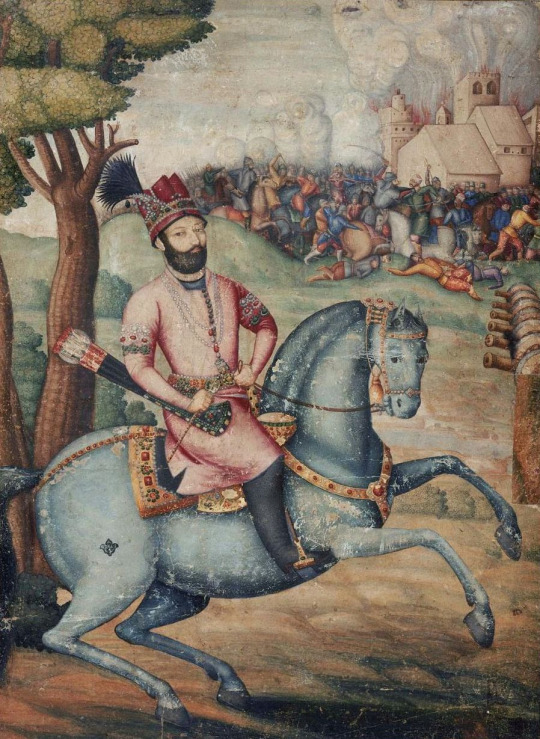
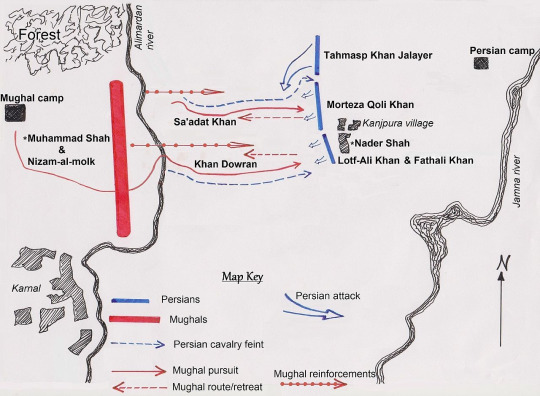
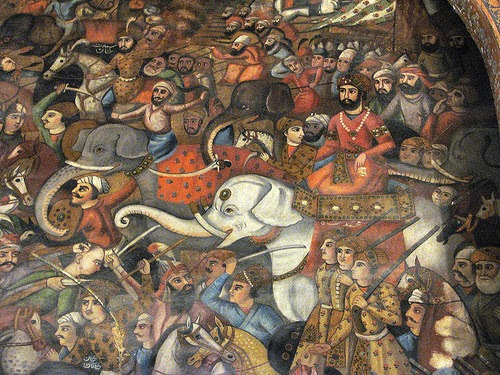
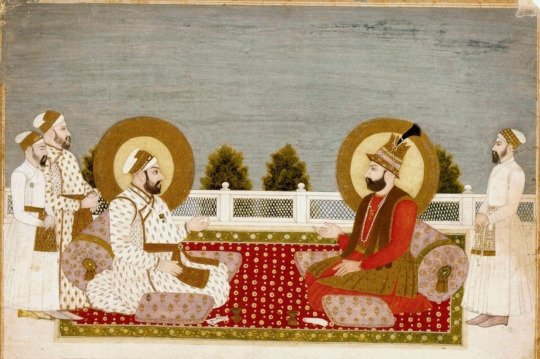
#military history#indian history#iranian history#persian empire#Mughal Empire#nader shah#18th century#gunpowder empire#tactics#battle of karnal#india#iran#islamic history#hinduism#islam
8 notes
·
View notes
Text
Medieval Revival: 1839 Eglington Tournament. A Medieval knight’s joust at the dawn of the Victorian Era.
Nostalgia is a feature long analyzed in the human experience whether on an individual & personal level or a more broad cultural level. In 1839 Britain, at the dawn of the Victorian Era, one moment of nostalgia captured the popular imagination of the British and European public. While its intention may have been to harken back to a romantic vision of the past in an effort to instill national pride, its legacy was one more mixed than its ambition. On the downside, it lead to the near financial ruin of its creator & it was criticized by many as an extravagance of the wealthy in a time when many were facing poverty. On the perhaps more positive side, it tapped into a certain cultural mood that looked romantically on its past and prefigured some of the celebrated visual & literary art tastes that would come to define the Victorian Era. This moment in time was the Eglington Tournament, held in southwestern Scotland in August 1839.
Origins: An overview
-Queen Victoria had taken to the throne as Queen of Britain & Ireland in 1837 upon the death of her uncle William IV, having just turned 18 she was now monarch to the most powerful nation & empire in the world at the time.
-The early 19th century had seen a cultural reaction to the implications of the 18th Enlightenment & subsequent Industrial Revolution that had taken foot. The reaction took foot in many European nations and the Americans as a reaction to the modern world’s rapid social changes especially in the areas of science, culture, industry & economics. As a whole this reaction became known as Romanticism.
-Whereas the Enlightenment placed more emphasis on scientific reasoning, rationality & helped to spur scientific & technological advancement in particular. The Romanticism of the 19th century tried to temper the socio-economic & cultural upheaval this generated. The Enlightenment had lead to the American Revolution & later the French Revolution & subsequent Napoleonic Wars which were viewed by some as the excesses of Enlightenment and its topsy-turvy effects on society.
-Romanticism tended to find its inspiration in the past with elements of mysticism with an emphasis on the supposed morality of the past. It also found beauty in what it called the transcendent usually to be found in natural scenes Fixated on a proverbial golden age, the followers of Romanticism could derive meaning from in the wake of the upheavals of modernity. This romantic view was more often than not based on a reality that never was, or at best where select aspects could be found in.
-In Britain, Romanticism hit on every level of society from the poor working class to the developing middle class & the upper class. One example was the rebellious social movement called the Luddite Movement (1811-1816) which was made up of textile workers who sought to actively destroy textile factories, an early byproduct of the industrial age. Though their primary motivation was for the very real concern of economic dislocation due to automation. The symbolism of their reactionary stance against modern technology was lampooned by some and celebrated by others. Those who celebrated it were sympathetic to the very real changes industrialization were bringing to people’s lives.
-By the Victorian Era, Romanticism was less focused on the economic dislocation of industrialization. The Luddites failed to stop technology & by then steam powered transportation at sea and on land with the advent of the train & railroads had begun to first make their imprint. These were increasingly accepted as part of the modern world.
-Romanticism was increasingly found in the cultural realm rather than just the socio-political. Particularly in the arts both visual & literary. As reflected in topics with a nostalgia for both nature scenes cultural norms that prefigured the modern era. They began to reflect in everything from fashion to social mores.
-In Scotland and with Britain at large, increasingly their became a re-fascination with the culture of the Scottish Highlands. Something actively oppressed following the last of the Jacobite Rebellions in (1745-46). This fascination was largely fueled by author Walter Scott (1771-1832) whose books focused much on promoting a look back at Medieval Scotland & England. Portraying a romantic vision of Scottish Highland culture in particular. His books Ivanhoe, Rob Roy & others became popular. He also helped facilitate the 1822 visit to Scotland of King George IV, a PR visit which endeared the monarch to Scotland but also Scottish culture to Britain more broadly.
-Scottish tartans, kilts & other fashion became in vogue, in particular with the wealthy. Additionally, Scottish folk dances and supposed tales of heroics of various Scottish clans against the romantic backdrop of the Highlands, a mysterious place to most outsiders at the time enthralled the public. This was paired with a look back at the courtly life of Medieval England and a belief in the supposed morals of the time. As stories of knights, damsels in distress, heroic kings, virtuous queens, dangerous witches & mysterious but kindly wizard sages became fashionable in literature & poetry. Most prominent was a revival in the tales of King Arthur and Camelot. There were also Welsh & Irish cultural revivals as part of the broader Celtic Revival.
-Wherever one went in Britain, Romanticism increasingly had a grip on the popular culture and one family and man in particular sought to create an event that would epitomize the British brand of Romanticism...
Setting the Grand Stage: The Earl of Eglington & his vision
-The 13th Earl of Eglington was Archibald Montgomerie (1812-1861) of Scottish Clan Montgomery, also known as Lord Montgomerie. He was a British nobleman of the Scottish nobility (Peerage of Scotland) and served as a Conservative politician who most prominently served as Lord Lieutenant of Ireland in 1852.
-Lord Montgomerie like his direct predecessors were the hereditary Clan Chiefs of Clan Montgomery. Making them the nominal leaders of the clan. Clan Montgomery’s chiefs had their origins in the Norman Invasion of England, originally a Norman (French-Viking) family who first settled Wales and then emigrated to Scotland in the 12th century. In time Clan Montgomery’s chiefs intermarried into the Scottish population and became culturally Scottish. They also had a history military service, sometimes in service to England during Scotland’s periods of internal infighting. They also sided with the Hanoverian government against the Scottish Highlander Jacobites.
-Lord Montgomerie, 13th Earl of Eglington was born in a wealthy and leisurely existence of horseback riding and playing golf. The Montgomery chiefs had Eglington Castle built to serve as their country home and seat of power. It was located in Ayrshire a historical county of Scotland located in the Southwest Lowlands of the country.
-Eglington Castle in its original form was burnt in the 16th century but the most famous and final version came to existence in the late 18th-early 19th century when the 12th Earl (Archibald’s father) had it built in a Scottish Gothic Castle style, reminiscent of the old “medieval” structures, it was expressly romantic by design and reactionary to the industrial age.
-Eglington became regarded as one of the great country estates of the nobility in all of Scotland for its grand appearance. It was also renowned for its expansive pleasure gardens, with woods straddled along the banks of a river that flowed through the grounds.
-Lord Montgomerie had been raised in an atmosphere steeped in the romantic grounds of his home along with the personal stories of his ancestors military service & the broader popular culture of Romanticism. In 1838 when it was announced that Queen Victoria’s coronation would not feature some of the traditional Medieval ceremonies, namely a Medieval style banquet, some in the nobility decried this as a loss of tradition in an increasingly modern world. This was in part determined by the Whig Prime Minister Lord Melbourne. Britain as the time was facing an economic recession that had hit hard the working class. The Whigs were concerned that ostentatious celebrations in the midst of great economic suffering might appear as public relations disasters for the Queen and her government. Their had been similar concerns with the 1820 coronation of George IV and public outcry from the expense of that ceremony.
-For Lord Montgomerie, this served in part as an impetus to make a statement of cultural intent, a romantic one. If the Queen’s coronation wouldn’t include the “ancestral” rites of passage from the medieval days then Montgomerie would throw his own celebration of a bygone era. His vision...
-He’d throw a medieval jousting tournament featuring “knights” and their retinues. This would be coupled with a festival of sorts featuring a banquet. He would also throw it on the grounds of the Eglington estate. The jousting tournament would be the central feature, a spectacle of almost performance art, meant to harken back to an age in British history of chivalry and medieval “values” meant to be a pure reaction to the Industrial Age and modern trappings. Montgomerie hoped it would conjure up national pride and instill romantic views of the the past, setting a tone to permeate the culture at large.
-Word went out about this jousting tournament and the autumn of 1838, 150 would be “knights” met in London to discuss the tournament, each could create their own armor, have a retinue of their choice and compete in the tournament but they would be responsible for their own expenses which were quite large. Most backed out would apprised of the estimated expense to be undertaken. Roughly 40 or so decided to push ahead with the goal of competing in the tournament.
-Samuel Pratt, a dealer in medieval armor would be responsible for the custom designs of armor along with the design of each knightly retinue’s costumes, décor & pavilion. He would also supply the tents, stages & stands for spectators and guests including the banquet hall. It is unknown how much of what Pratt supplied was genuine medieval armor as he claimed all were supposed to be. Only one was known to be looked into and it was found to be not original or authentic armor but imitation in the style of medieval armor.
-Meanwhile, Lord Montgomerie oversaw the festival grounds being developed on his estate and went to great personal expense to see everything was to his liking. Montgomerie didn’t know whether his vision would pay off but he was determined to throw it.
-Dress rehearsals were held in a London park by a list of participants roughly 20 in number with the final rehearsal being in mid-July 1839. The tournament would be held in late August 1839 at Eglington Castle. The final rehearsal went well, the “knights” were well rehearsed the weather was in fine form at the final practice run, The press who assembled to cover the event predicted success at Eglington.
-The prospect of the tournament indeed captured the public’s imagination as memorabilia related to it sold to all classes through out Britain, demonstrating its popular appeal. Queen Victoria would not attend herself personally thought the idea a foolish venture, mere spectacle but she did comment in her diary that some elements of the event were aesthetically pleasing to hear about and discuss.
-Lord Montgomerie announced to the press the tournament would be open to the public and free of charge but that the tickets would have to be applied for and were of limited number. He also requested attendees dress in medieval costume if able. In effect he was creating the first modern renaissance faire. Initially he anticipated attendance of 4,000 people. However, he was soon receiving requests from all over Britain to attend from people from all walks of life.
-Determined to meet demand, Montgomerie raised the preparations to accommodate more than to two times the original order for attendance. It was estimated that roughly 100,000 would come to attend the tournament over the three days it was held.
The Tournament: The show must go on...
-They came in droves, by carriage, by horse, by ship, by train and by foot. Attendees, either with tickets or not by the thousands, backing up the dirt roads of southwest Scotland for miles for instance Glasgow to Ayr was filled end to end for a length of 30 miles, lined with abandoned carriages as curious onlookers travelled by foot. The town of Irvine near Eglington did not have enough accommodation so private homeowners charged for room & board at great prices making a profit.
-Some reports say those without accommodation merely slept outdoors under the grandstands or even in hollow trees.
-The tournament was held on a meadow near the castle in a loop in the River Irvine which passed through the estate.
-Day one which was August 28th, 1839 showed an opening parade featuring 40 knights and their entourages who were to parade before the Queen of Beauty (Lady Somerset) who was the sort of pageant overseer. Despite the best hopes things went awry on day one.
-Each knight and their retinue were to mount their horse ride to the castle and pickup a lady in waiting, then march along the road to the meadow but the participants were not well trained to mount their horse in armor and there was no control as to the parade’s order overall. This lead to hours long delays and traffic jams for the parade. Nevertheless, the crowd did enjoy the pageantry of it all.
-Just as the parade was organized and about to be underway, a sudden rainstorm as is frequent in Scotland, appeared. Lord Montgomerie had all the ladies in waiting stowed into carriages, while the knights and their retinues marched the parade’s length soaked in mud and rain. While the crowd covered themselves in umbrellas.
-The tournament lists & grandstand for 2,000 spectators also suffered rain and wind damage plus muddy grounds. Finally, Lord Montgomerie stated the rain would have to delay the tournament weather permitting in a day or two. The banquet and festival was likewise postponed and everyone who had accommodations went back while those thousands without toughed it out in the rain where “shelter” could be provided.
-Day two was August 29th. Lord Montgomerie decided with the participants to postpone for another day to allow repairs to commence on the tents, grandstand and lists in the interim. The Eglington estate grounds staff set to work making the repairs and draining the lists from the flooded river.
-The third and final day was August 30th, in which case the weather was overall much better. Finally, the parade procession and tournament was held. Involving several jousts where of the participants, James Fairlie “Knight of the Golden Lion” was the winner on points. However, symbolically Lord Montgomerie was declared the winner. One knight suffered injuries requiring medical attention and two knights got caught into such a fray they had to be pulled apart by a marshal of the tournament. A main feature was the melee fought between many knights at one time. However, the still muddied grounds made the execution of the event difficult at times.
-Later that day, the banquet for 400 and ball for 2,000 guests were held, most dressed in Medieval attire with a military orchestra from the 2nd Dragoons regiment providing the musical accompaniment using medieval instruments and tunes. The banquets food followed authentic medieval recipes and was served on custom gold & silver plates made for the occasion. As bad weather once again appeared, Montgomerie declared the day and tournament over.
The notable participants:
John, Viscount Alford, aged 27, "Knight of the Black Lion"
Captain Beresford, aged 32, "Knight of the Stag's Head"
Archibald, Earl of Cassillis, aged 23, "Knight of the Dolphin"
William, Earl of Craven, aged 30, "Knight of the Griffin"
Captain James O. Fairlie, aged 30, "Knight of the Golden Lion"
the Hon. H. E. H. Gage, aged 25, "Knight of the Ram"
George Viscount of Glenlyon, aged 25, "Knight of the Gael"
Sir Francis Hopkins, Bart., aged 26, "Knight of the Burning Tower"
the Hon. Edward Jerningham, aged 35, "Knight of the Swan"
Charles Lamb, aged 23, "Knight of the White Rose"
Richard Lechemere, aged 40, "Knight of the Red Rose"
Walter Little Gilmour, aged 32, "The Black Knight"
Henry, Marquess of Waterford, aged 28, "Knight of the Dragon"
Cropley, Earl of Shaftesbury
Charles, Marquess of Londonderry
Prince Louis Napoleon- future Napoleon III of France
Princess Esterhazy of Hungary
Count Persigny of France
Count Lubeski of Poland
-Additionally, Lord Montgomerie also participated.
Aftermath:
-Lord Montgomerie was awarded a nearly 5ft tall sterling silver trophy that weighed 1600 ounces and was awarded to the Earl of Eglington in 1843 as a honorary piece for his organizing & hosting the event.
-Montgomerie himself was in financial ruin due to great expense it took to organize and host the event, he made no profit by not charging for tickets and when greater numbers of attendees showed up the damage to restore his estate grounds coupled with flood damage was extensive. This was in addition to all the costs of preparation.
-Public opinion was mixed, some in the press, in particular Whig friendly journalists declared it a waste of money in midst of a economic recession and merely little more than pageantry for the upper classes to amuse themselves.
-Attendees seemed to have enjoyed it favorably despite the weather. Given the demand for tickets to attend along with the press coverage and cottage industry of commemorative memorabilia that sold at the time for the event, it certainly captured the interest of the public.
-Subsequent tournaments were held in London starting in 1840, some as parody pieces and others as lucrative business ventures.
-Did Lord Montgomerie achieve his aim, which was never quite clearly defined? Though not a financial success for him as it was for others, did it really tap into a sense of national pride, by staging an event involving nostalgia for an era long gone by? Assuming rich costume guises, elaborate rehearsals and pushing a public spectacle but for what? Its debatable whether it had any lasting impact, other than capturing the general attention of society for a moment and today is usually remembered as a failure for its economic ruin on the Earl and for its criticisms as an extravagant amusement for the upper class.
-However, by looking to Britain’s medieval past, to hopefully tap into some greater cultural expression. Not only in the guise of period costumes and recipes, the tournament was able to prefigure the medieval nostalgia that was to permeate Victorian Era culture. From the literature and art of the Pre-Raphaelites with their emphasis on medieval themes, to the social norms regarding “gentlemanly” & “ladylike” behavior in the public realm and increasingly found in the moralizing tales of Victorian literature, to become adopted as the social values of both the upper class and burgeoning middle class of British society. Serving as a romantic sheen or façade over the Victorian Era. Whether Eglington directly contributed to this later nostalgia & emphasis, undeniably it along with other Romantic era cultural strains attempted to express a rose tinted glimpse of a past society, that one hoped could temper and ground anxiety over an ever changing modern society.

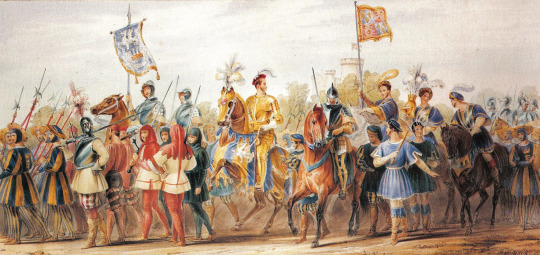

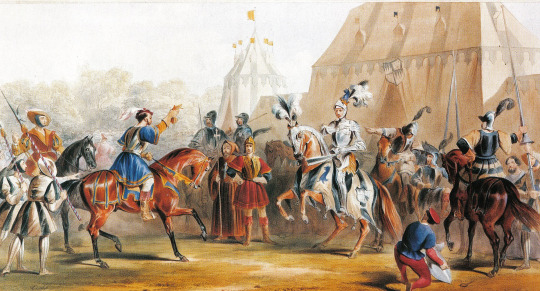
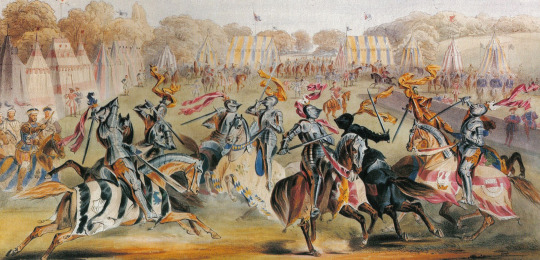

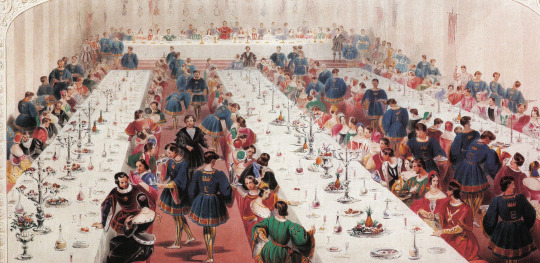

#victorian era#scotland#eglington#scottish clans#clan montgomery#queen victoria#napoleon iii#england#britain#19th century#romanticism#british romantics#medieval#jousting#culture#pre-raphaelite#victorian#middle ages#nostalgia#history#costumes#knights
2 notes
·
View notes
Text
Battle of Alcacer Quibir (1578 AD) (Battle of the Three Kings). Portugal’s attempt at colonialism in Morocco backfires and a new Moroccan dynasty secures its independence from foreign intervention.
Overview:
-Morocco’s history is largely driven by its strategic location. The Northwest corner of Africa at the tip of the Sahara Desert region, just south of the Iberian Peninsula in Southern Europe and hugging the gateway to the Mediterranean Sea at the Atlantic Ocean. Its position was crucial to geostrategic considerations with access to so many sea & overland trade routes.
-Its native peoples were Berber or Amazigh who encountered the Greeks & Romans of antiquity, they were a varied people across North Africa united by some common language and customs. After the rise & spread of Islam by Arabs from the Middle East, North Africa including Morocco became a target of conquest and religious conversion. The Berbers in time took on the Islamic religion while somewhat retaining their own customs. Gradually, they took on a cultural Arabization that takes place today with most of Morocco’s population being ethnic Berbers with Arab acculturalization becoming Arab-Berbers. There were however some Arab colonists who migrated from the Arabian Peninsula, Syria and other parts of the Middle East who settled & setup their lives in Morocco mixing with the local Berbers. Arabs & Berbers went on to invade the Iberian Peninsula in 711 AD under the Visigoth Kingdom which they largely over threw aside from the north of modern day Spain. In time Muslim dynasties ruled in Iberia and the Arabs and Berbers set up a colonial presence there while some Visigoths and Iberian Romans converted to Islam making up the majority of Iberia’s population well into the Middle Ages and the combination of Arabs, Berbers & European converts to Islam became known as Moors which covered no single ethnic group but rather the cultural ties that bonded these various peoples, though was previously used to describe just Berbers.
-In time, civil war amongst the Muslim dynasties that came & went along with the Reconquista, a centuries long Christian Crusade to rid the Iberian Peninsula of a Muslim presence weakened the Moorish hold over southern Europe. Arab & Berber dynasties from Morocco would often intervene in Iberia to reverse the tide of misfortune befallen its Muslims but inevitably they too would be brushed aside or retreat to Morocco which had become so intertwined with Iberia at that point. By the end of the 15th century, the Emirate of Granada, the last Muslim power in Iberia had fallen. The Kingdoms of Portugal & Spain had arisen from earlier Iberian Christian kingdoms and become more powerful than their Muslim rivals.
-Complicating matters was the rise of the Turkish Islamic dynasty in the east, the Ottoman Empire. By the 15th & 16th centuries, The Ottomans found themselves masters of the eastern Mediterranean and in competition with the Spanish Hapsburgs for control of the Mediterranean Sea. By then Spain had established dynastic control over parts of Italy & small colonial possessions on the coasts of North Africa spreading from Morocco to Libya. This was contested by the local Arab-Berber presence and the Ottomans. Likewise the Ottomans were overtaking North Africa from both their European rivals & the Arab-Berber dynasties of North Africa. Though direct Ottoman power would be varied depending on location and sometimes they relied on governors of theirs to rule in their stead, which in turn became increasingly semi-autonomous. these dynasties engaged in piracy of European trade and in particular in the enslavement of European Christians giving rise to the Barbary Pirates of Barbary Corsairs, so named for the Barbary (Berber) Coast of North Africa from which they operated, ranging in port cities from Morocco to Libya.
-The Ottomans and Spanish eyed Morocco as an area of political control. The Ottomans hoping to make it a protectorate like the rest of North Africa and the Spanish a home to various ports to counteract the Ottoman attacks against their shipping lanes. Meanwhile, Spain had for the last century engaged in exploration and conquest of the so called New World, the Americas. Spain’s other Iberian counterpart, the Kingdom of Portugal, likewise has engaged in colonization and conquest with the Americas, namely Brazil. Both Spain & Portugal saw it in their interest to secure the shipping to their ports from the threat of Ottoman and other Muslim piracy which confiscated their gold and other raw materials from the Americas. To this end they were determined to and did indeed conquer Moroccan port cities. Likewise the previous overland Trans-Saharan trade routes of gold, ivory and enslaved Sub-Saharan Africans which had previously enriched the Arabs & Berbers were of less importance due to both European investment in the Americas and control of Moroccan ports. This had lead to impoverishment of the Moroccan economy & flight of its many intellectuals draining its infrastructure and governance as well.
The Power Players:
Morocco & domestic politics...
-16th century Morocco had seen the foreign encroachment of the Portuguese & Spanish hold strong. Portugal held many of its Atlantic ports while Spain its Mediterranean. Meanwhile, the Ottomans who had overtaken neighboring Algeria were threating invasion to oust the Europeans but likewise overrule the local Arab-Berber population.
-At the start of the century Morocco was nominally ruled by the Berber dynasty known as the Wattasids. They had come to power in 1472 AD overthrowing their fellow Berbers, the Marinids. However, Wattasid rule only held sway in the north of Morocco with their kingdom being centered around the city of Fez. The south of the country was much more divided into various principalities and the populace in general resented the Wattasids for their seeming political and military impotence to eject the Europeans from their port cities. They failed in their promise to recapture these cities time & again.
-In the south of Morocco, a new power was rising that promised to remove the weak Wattasids & eject all foreign influence on Morocco. This new promising power was the Saadi dynasty. The Saadis were of Arab origin with a known ancestor going back to 13th century Arabia from the port city of Yanbu on the Red Sea who migrated to Morocco. The family is generally considered to be of Sharifian origin, which is an Arab honorific word meaning “noble or highborn” and reserved by Arabs for descendants from the Prophet Muhammad. The Saadis claimed descent through Muhammad’s daughter Fatimah and her marriage to Ali ibn Abi Talib, the prophet’s cousin & companion. The descent to the Saadis then continued through Ali & Fatimah’s son Hassan and as descendants of Hassan, the Saadis became known as Hassanids and were given the title of Sharif. Whereas descendants of Muhammad’s other grandson through Ali & Fatimah, Husayn were given the honorific title of Sayyid.
-The descent from Muhammad of the Saadi dynasty is a matter of some political conjecture, with their rivals trying to down play it as mere propaganda. Others will concede they descended from a relative of Muhammad but not his daughter Fatimah herself. It will probably be next to impossible to establish its veracity but it was promoted by the dynasty along with numerous other Islamic dynasties throughout history even into the present.
-The Saadis derive their name from the word for “happiness or salvation” and were settled by the 14th century in Morocco from their Arab ancestors in the southern part of the country. Centered around the city of Tagmadert in the Draa River valley. It was a region that neared the Sahara Desert. It was here that the family intermixed with the Arab-Berber populace and gave rise to the popularity of Sufism in Morocco. Sufism is a form of Islamic mysticism akin to the Kabbalah in Judaism or Gnosticism in Christianity.
-The chief (Sharif) of the Saadi family circa 1510 was Abu Abdallah al-Qaim who ventured to Medina in modern day Saudi Arabia as part of his religious pilgrimage and evidently while there had a dream involving two lions leading a large crowd of people to a tower. Taking this mystical vision as a sign he visited with a Sufi mystic who confirmed it as God’s mission for his son’s who would play a crucial role in the family and indeed Moroccan history. Al-Qaim returned to Morocco and aligned with the Sufi orders in the south of Morocco around the Draa Valley and organized them into a military order to declare jihad on both the Wattasids & the Europeans with a now holy mission to save Morocco.
-The Saadis gradually overtook by force and diplomacy much of southern Morocco’s other principalities. They captured the city of Tidsi in 1510 and al-Qaim’s two sons ventured to Fez to beseech the Wattasid sultan to undertake a nationwide jihad against the Europeans. When this did not materialize the Saadis gradually felt it was their duty to save the nation.
-The Saadis began a campaign against the Portuguese ports in the south of Morocco and had gradual success in retaking these port cities. Making them increasingly popular with the locals at the expense of the Wattasids in Fez. 1524 saw the Saadis capture the city of Marrakesh. Al Qaim’s son Mohammed al-Shaykh became the leader of the dynasty in 1517 and Al-Shaykh’s campaign against the Portuguese now turned to the Wattasids. His brother Ahmad Al-Araj was placed in charge of Marrakesh while Al-Shaykh controlled the city of Taroudannt and in 1527 the Saadis defeated the Wattasids in the Battle of Wadi al-Abid after which they recoginzed a divided dominion in the south for the Saadis and north for the Wattasids.
-However, Al-Araj & Al-Shaykh soon turned on each other and the brothers engaged in a civil war with Al-Araj seeking Wattasid assistance. Additionally he fought the Portuguese and successfully took the port city of Agadir in 1541 which led to other port cities to be evacuated by the Portuguese. His brother was defeated and fled to eastern Morocco to live out his days in exile. Meanwhile, the Wattasid capital of Fez was captured in 1549 using a reformed army that was based on the Ottoman model, including modern artillery.
-The capture of Fez gave the Saadis a chance to now attack Portuguese ports in the north with more success. However, some cities like Tangier remained in Portuguese hands.
-The Saadis also expanded into Western Algeria and captured a portion of that territory.
-Meanwhile Saadian expansion, concerned the Ottomans who hoped for it to become a protectorate. The ousted Wattasids cut a deal with the Turks to invade Morocco, oust the Saadis and become Turkish vassals in their own right.
-Al-Shaykh and the Saadis were driven out of Fez in 1554 by a combined Wattasid-Ottoman-Algerian army. The recapture was short lived as in the September of 1554, the Saadian army once more met the Wattasids & Turks in the Battle of Tadla and defeated them, the Wattasid ruler, Ali Abu Hassun was killed by the Saadian troops in battle and ended the threat of their dynasty.
-Al-Shaykh having united the country against the Europeans with success, having defeated his brother, the Wattasids & Ottomans had unified his rule over Morocco as undisputed Sultan. The Saadi dynasty was now firmly established, but much work remained and in the process of the Saadian conquest they had made many enemies.
-1557 saw plans for Morocco to ally with the Spanish against the Turks who still sought a foothold in Morocco. As this came to fruition, the Ottoman governor of Algeria ordered Sultan Al-Shaykh’s assassination. A number of Ottoman assassins claiming to be deserters infiltrated the Saadian armed guard of the Sultan, earning his trust before killing him.
- Al-Shaykh had multiple sons but three sons: Al-Ghalib, Al-Malik & Al-Mansur who would all play important roles in the coming years.
-Al-Ghalib being the oldest became the new sultan of Morocco. He had to defend against an Ottoman Algerian invasion in 1558 which was successfully halted at the Battle of Wadi al-Laban. The battle was inconclusive itself but word had reached the Turco-Algerian forces of a Spanish counterinvasion of Algeria and they were forced to turn back, sparing Morocco a potential take over.
-As so often happens in history, the concern over dynastic struggle takes place. Worried about civil war with his younger brothers Al-Malik & Al-Mansur, the two younger siblings went into exile with the Ottoman Empire, visiting its capital of Constantinople and living in Turkey with lavish existence.
-The two exiled Saadi princes served in the Ottoman army, battling in the famous 1571 naval confrontation off the Greek coast known as the Battle of Lepanto against Spain and a Holy League. It was a Christian victory that cost the Turks their best naval commanders and while their navy did replenish its numbers it never again had the level of experienced commanders and subsequently its training and experience stagnated, beginning a slow withdrawal from direct Ottoman involvement in the Mediterranean. Likewise, Lepanto contributed to the rise in its North African governors taking de-facto power for themselves. Giving rise to the age of the Barbary Corsairs who operated out of the North African city-states of Tunis, Algiers, Tripoli and later various Moroccan ports with these pirates peaking their powers in the 17th century and lasting until well into the 19th century.
-Al-Ghalib fought the Spanish and Turks and for 17 years kept Morocco in virtual peace. He improved the economy and built new mosques and other architecture, raising the stature of Marrakesh, which became the primary center of Saadian power.
-Al-Ghalib died of asthma in 1574 and was succeeded by his son, Abdallah Mohammed. Abdallah Mohammed like his father suspected struggle with brothers, one of whom was killed on his orders while the other was imprisoned. The reign of Abdallah however was challenged by his uncles Al-Malik & Al-Mansur. Now in Ottoman Algeria, they invaded Morocco with Ottoman backing in 1576
-Fez was captured by the Ottoman backed Saadian prince Al-Malik. Whose now ousted nephew Abdallah Mohammed fled first to Spain and ironically then to Portugal, former enemy of his grandfather & great-grandfather.
-1576 saw Al-Malik take power but with the understanding that he was a de-facto vassal of the Ottomans. However, his nephew sought to regain the throne and was willing to work with Portugal to regain it...
Portugal & King Sebastian...
-Sebastian of Portugal was born in 1554 and a member of the Aviz dynasty which had ruled Portugal since 1385 and was responsible for Portugal’s global empire, sometimes in competition with neighboring Spain. They had established control of Brazil in the Americas and had colonies as far flung as Macau in China, parts of India where they fought against the Ottomans in the Indian Ocean and even in Africa with control of Angola, Mozambique and elsewhere. Though the Portuguese and Spanish had rival colonial ambitions they had a common enemy against the Ottomans and Portugal in particular conflicted with the Turks in the Red Sea, Indian Ocean, Ethiopia and other parts of Africa.
-Sebastian’s mother was of the Hapsburg dynasty that had ruled Austria and Spain which with Spain’s global empire had become the most powerful dynasty in Europe if not the world. His grandfather was Charles V and uncle was Philip II of Spain.
-His father died when he was an infant and his mother later remarried in Spain. while his grandmother Catherine of Austria helped raise him. He grew to be tall and physically fit. He was also given a stern religious upbringing under Jesuits tasked with his education.
-He technically took the throne at age three with the death of his paternal grandfather and a regency was put in place for him. As he grew older he became more stubborn in his personality but was always devoutly religious. Sebastian also had several marriage proposals made but none had come to fruition.
-Under his personal rule he improved relations with Spain, France, England & the Holy Roman Empire wanting to secure the peace and trade of all for his global empire. He also rewarded natives in Brazil who aided the Portuguese against the French by giving them their own grants of land and freed them from slavery by decree. He also restructured the laws of administration and the judiciary in Portugal. Hoping to expand education for his people, he also created royal scholarships for students of medicine at university.
-Finally, he sough to patronize the arts with poems & operas being written during this time and dedicated to him. He also reformed the military which proved successful in fending off attacks in India against the Portuguese colony of Goa.
-However, one everlasting goal of his since 1568 at the age of 14 was to conquer Morocco by Crusade against the Saadi dynasty which had expelled the Portuguese from control over numerous ports. These ports were important as way stations for Portuguese ships traveling in India where its colonies were important in the spices, gems & other precious commodities trade. A combination of religious fervor and economic concerns over nearby Morocco guided Sebastian.
-The opportunity for his Crusade arose in 1576 with the ouster of former Saadian Sultan Abdallah Mohammed who had been overthrown by his uncle, the Ottoman backed Al-Malik.
-Abdallah Mohammed had fled first to Spain and then Portugal asking for aid in the restoration of his throne. After which he promised his support against the Turks, Portugal & Spain’s principal rival. Sebastian was intrigued by the offer and visited with his uncle, Philip II of Spain to discuss joint plans for a combined Portuguese-Spanish invasion of Morocco to restore Abdallah Mohammed as their friendly ally who would allow future use of Moroccan ports for trade and as launching points against Ottoman Algeria. Philip refused to participate whole heartedly since he sought a treaty with the Ottomans to give some much needed breathing space for other concerns, namely England. He did offer a smattering of Spanish volunteers though.
-Despite Spain’s lack of full commitment, Sebastian decided to go it alone. Absolutely convinced of the technological superiority and training of his army against the Moroccan army. Technically this was true with advances in gunpowder driven small arms, artillery and armor being superior along with overall discipline. Whereas Morocco relied on light cavalry, had less artillery and mostly ill trained and ill equipped irregular troops.
The invasion and Battle of Alcaber Quibir.
-Sebastian began preparations for summer campaign in 1578. He departed Lisbon with an army of 17,000 men made up of Portuguese regulars at foreign mercenaries from Germany, Spain, Italy & the Netherlands. He also asked the Portuguese nobility to accompany him. Convinced the campaign would be quick, he wanted to demonstrate his power before them while also establishing colonial holdings in a Portuguese controlled Morocco. Some nobles brought over their whole retinues & families as well as a fully stocked kitchens, portable chapels and even a whole church choir, giving the crusade an almost picnic or hunting expedition feel for some.
-The fleet stopped at Cadiz for the promised Spanish volunteers, they did not materialize and so on they sailed for Morocco. Arriving in June south of Tangier they joined Abdallah Mohammed with 6,000 loyal Moorish troops.
-Upon reaching the shores and in front of his still disembarking nobility Sebastian and a small contingent chased away an enemy contingent. This demonstrated to many assembled that Sebastian was a brave commander fully confident in his mission. To some of his commanders though there was concern it might mean he was also too headstrong to listen to reason.
-They suggested to the king that he first capture ports along the coast and avoid venturing into the interior of Morocco at this juncture. The ports would be important for reopening Portuguese trade and weakening the Moroccan economy. From there they could also resupply by sea for future operations, typically sound military advice.
-Sebastian did not heed the caution, he sought a decisive victory to end the campaign quick. He ordered a march into the Moroccan interior. Despite knowing he would face a numerically superior opponent. Confident Portuguese technology, training & God’s will were on their side.
-Al-Malik as Sultan of Morocco, took advantage of the Turkish backing, training his troops in advanced Ottoman techniques and acquiring some Turkish arquebusiers (early muskets) and artillery. Nevertheless, the majority of his forces were Berber and Arab irregulars from the Moroccan countryside or Moors expelled from Iberia, though some Ottoman Turks and Algerians had joined in the army. While his army was of poorer quality training & technology, it was made up for in raw numbers of men and morale for defense of their homeland.
-Al-Malik also suffered one more setback going into the battle, his own health was suffering by some undisclosed illness, possibly the plague. Only his brother (Al-Mansur) and physician knew of this illness as Al-Malik did not want to discourage his troops morale, to it was kept secret. He rode out from Marrakesh with at fast speed the drive of which gave Al-Malik barely any rest and only worsened his condition. Al-Mansur rode out from Fez and the two planned to meet and intercept the invaders & their nephew’s army.
-The two opposing armies would meet at the town of Ksar-el-Kebir rendered in Portuguese as Alcacer Quibir. Sebastian had 23,000 troops at his disposal against the Moroccan 50,000 strong under Al-Malik. Fearing being outflanked by a larger foe, he ordered his forces in a fortified square. Placing his artillery & arquebusiers in the front with cavalry & pikemen in the rear on the sides.
-Al-Malik was so ill he had to be strapped to his horse. He would choose to give a rousing speech to his troops before the battle’s start. His army formed in a crescent shape
-The battle began with volleys of artillery & arquebusiers from both sides while the Crusaders elite cavalry charged the Moroccan center. The Portuguese made headway until Al-Malik and his personal bodyguard and other cavalry rode out to blunt the charge and hold the center. Likewise he signaled Al-Mansur to command the tribal horsemen from the Berber tribes of the northern mountains of Morocco he had been hidden in reserve with the goal of enveloping the main Portuguese square which was now without the use of its best cavalry. Al-Malik has setup a surprise trap. now the task of enveloping the whole Portuguese army was to begin.
-Al Malik and his bodyguard joined his brother while the Moroccan center reorganized having surrounded the Portuguese cavalry. Seeing what was happening, Sebastian rode out personally leading his reserve heavy knights & nobles along with the horsemen of his ally, the deposed Abdallah Mohammed. The goal was to take down Al-Malik personally and break the Moroccan army’s morale.
-The retinues of all three kings met in the middle, with Al-Malik losing many men around him but the sultan and his bodyguard fought on while his brother Al-Mansur continued with the encirclement of the main square.
-Al-Mansur’s cavalry encircled the square and using dragoon tactics charged the square only to turn around just before being impaled by the Portuguese pikemen. Once the Moroccan horse pirouetted around the rider fired their musket at point blank range inflicting casualties on the European infantry. This tactic continued for hours in order to wear down the Crusaders.
-Meanwhile, Sebastian and his retinue fell back trying to rally the square. Soon the whole square was attacked on all sides. At some point while bravely fighting he lead another charge and was cut down, his body never recovered. He was only 24 years old and without wife or heir.
-Eventually the flanks of the Portuguese square were worn down and soon the Moroccans pushed onto the center which overwhelmed it.
-The battle ended after four hours of heavy fighting resulting in a decisive Moroccan victory. Sebastian had been killed in the fighting along with much of the nobility with 8,000 Crusader & Moorish troops in the Portuguese army dying. Another 15,000 troops including their camp followers were taken prisoner and enslaved. Roughly only 100 are believed to have escaped to the coast or Portuguese controlled ports. Abdallah Mohammed had escaped the battle on horseback but drowned crossing a river in hasty escape. However, for Al-Malik and the Moroccan army, it was costly too. Al-Malik, sick with a fever and plague died of natural cause due to over exertion due to riding on horseback and personally fighting, the exact point he died is uncertain but kept secret from his army so as not to break their morale until after the battle had been decided. The Moroccan army also suffered around 7,000 dead according to Portuguese sources as the bravery and determination of the Portuguese were acknowledged despite their defeat. With the deaths of Sebastian & the rival Saadian sultans Abdallah Mohammed & Al-Malik, the day be became known as the Battle of the Three Kings.
-Though it could be called the battle of four kings as Al-Malik’s younger brother and second in command, Al-Mansur would become his heir and successor as Sultan of Morocco. Al-Mansur also became the pinnacle of the Saadian dynasty reigning from 1578 until 1603 during which time he was the absolute ruler of a Morocco that was unified and expansive. He extended control to parts of Algeria and southward into Mauretania & Mali where he conquered the Songhai Empire and revived the important gold, ivory & African slave trade overland routes of the Trans-Sahara, vastly improving Morocco’s economy. He also went on to eject the Ottoman influence and army from his court. Asserting an independent Morocco free of European and Turkish influence. While there remained some European controlled ports, Al-Mansur was mostly successful in stabilizing his country. He also built up Marrakesh & Fez including vast palaces and the Saadian Tombs, considered the peak of Saadian architecture.
-After Al-Mansur’s death in 1603 Morocco fell into civil war and relative chaos once more. As had typified the Saadian dynasty from the start, the sons fought over control of the country. This time, the Moroccans had joint sultans who ruled divided portions of the country, creating a power vacuum that allowed for the rise of Barbary Corsairs and their pirates republics which would claim de-facto independence from the sultans, most notably the Republic of Sale headed by the Dutch privateer turned Barbary pirate, Jan Janszoon Van Haarlem also known by his Muslim name as Murad Reis the Younger.
-Eventually the Saadi dynasty was overthrown in the mid 17th century by the Alaouite dynasty which was another Arab Sharifian dynasty and which rules Morocco to this day. Though the Saadis are still regarded by the Moroccans for their architecture and role in securing an independent and stable Morocco, free from foreign influence.
-As for Portugal, it lost its king without an heir and much of its nobility. It was in this power vacuum that subsequently it was overtaken by the Kingdom of Spain being in a so called Iberian Union for the next 60 years before it became independent once again.
-Meanwhile, the Ottomans increasingly lost their ability to have a direct hold over North Africa altogether and despite nominal over lordship of Egypt to Algeria, Morocco remained relatively untouched by Turkish influence, given it a special place in the Muslim world. Additionally, the Turks with a stagnating navy turned their attention to expansion in the Middle East and Europe with the 17th century being the start of a long stagnation for them as well, their best days long behind them.
-The Battle of Alcacer Quibir fought on August 4th, 1578 was the culmination of domestic and foreign power struggles for Morocco, the product of colonial and imperial desires amid a succession crisis and civil war. Ironically, it triggered a succession crisis in the invading country and resolved one in the very country that triggered the foreign intervention. It was also a case in point of the arrogant illusion of the inevitability of European and Ottoman colonialism in North Africa and of course became a great symbolic victory in the psyche of an independent Morocco...

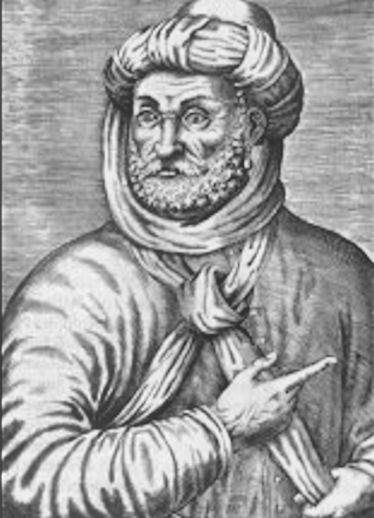
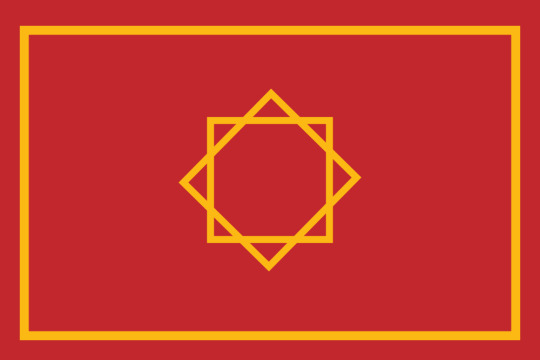
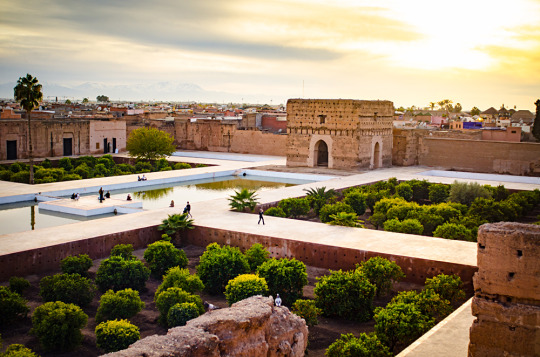
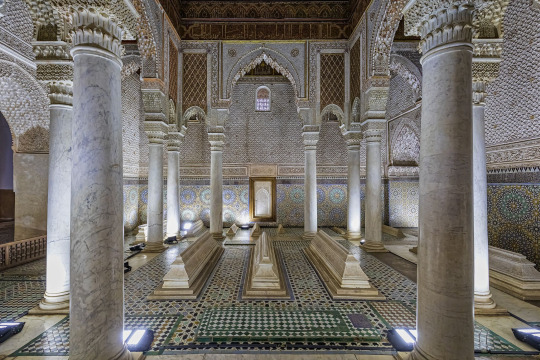
#morocco#moroccan#portugal#saadi#aviz#ottoman empire#saadi dynasty#saadian tombs#marrakesh#fez#battle of Alcacer Quibir#16th century#colonialism#imperialism#crusades#islam#sufism#berber#amazigh#arab#turk#portuguese#spain#hapsburgs#military history#songhai empire#sahara#africa
4 notes
·
View notes
Text
Historical Architecture: Alhambra, remnants of Islamic Spain.
One of the Iberian Peninsula’s and indeed European history’s more interesting chapters was the period of Islamic rule in the southwestern corner of Europe. For nearly 800 years there was a presence of Islamic governance in modern day Spain, Portugal and even parts of southern France. Rarely a unified Muslim state, it went through periods of changing dynasties, conflicts against the Crusading Christian kingdoms in the north known as the Reconquista as well a various civil wars with each other, alternating in competition and alliance with rival Christian powers as well as each other. Collectively, the name for Islamic Iberia as a geographic entity, period of history and culture was known as “Al-Andalus” which helped give rise to the modern day region of southern Spain “Andalusia”.
The rise of Islam in Iberia began with the 711 invasion of a mixed Berber (Amazigh) & Arab force from what is now Morocco into southern Spain. The Berbers were relatively new converts to Islam having been spread in the last half century across northern Africa. Lead by a Berber by the name of Tariq ibn Ziyad who served on behalf of the Umayyads Caliphate based out of Damascus Syria. The Umayyads were an Arab dynasty that replaced the Rashidun Caliphate which had formed after the death of the prophet Muhammad. The Rashiduns were the first Islamic Caliphate and spread across the Middle East & North Africa, the Umayyads became the second such caliphate and expanded their reach to Morocco and subsequently Europe with the invasion of Iberia in 711. Tariq and his force landed at what is now Gibraltar, with the modern name being a Spanish variation of the Arabic taking its name from Tariq, Gibraltar means “Mountain of Tariq”.
The invasion of the Umayyad overtook the Visigothic Kingdom that ruled over Iberia in the wake of the fall of the Western Roman Empire. The Visigoths were Germanic tribes who had migrated from northern Europe along with a host of other “barbarian” peoples in the waning days of the Western Roman Empire, this became known as the Age of Migration of the 4th & 5th centuries AD. Eventually the Western Roman Empire collapsed due to corruption, civil war and relentless waves of migratory peoples overwhelming parts of its territory. Germans, Celts, Slavs, Avars, Alans & Huns among others. In Iberia, the Visigoths who had sacked Rome itself but later converted to Christianity largely settled where they established their own kingdom and more or less assimilated with the Latin speaking majority of Roman colonists and Romanized Iberians and Celts who lived in Hispania as the Romans called it.
The Umayyads overran the Visigoths fairly quickly and within less than decade controlled most of the Iberian Peninsula. The exceptions being parts of the Basque country in the north and the so called Kingdom of the Asturias in northern Spain, protected by mountains. Here the Visigoths, increasingly Latinized in language and culture formed the first of many Christian kingdoms that ultimately successfully reversed Muslim rule on the peninsula in a slow 800 series of wars called the Reconquista.
Over those centuries numerous Muslim and Christian kingdoms and fiefdoms came and went, the most notable Muslim polity being the Emirate and later Caliphate of Cordoba which ruled from the city of Cordoba which in the Middle Ages was the largest city in all of Europe excepting Constantinople in the Byzantine Empire. Cordoba held roughly quarter to half a million people at its peak. It became a center of learning and culture, a true intellectual center in the so called Dark Ages. Scholars and artisans from the Muslim world and even Christian Europe studied in its libraries and learning institutions and the majority of Iberia’s population some estimates suggest 80% of the population were Muslim or least nominally so. Muslims in Al-Andalus developed somewhat of a caste among themselves even though religiously they were co-equals. The ethnic Arabs though not large in the overall population were typically the ruling elite found mostly in cities. Berbers made up a larger chunk of the populace but ruled more rural areas and finally, European converts to Islam who were both Visigoths & Hispano-Romans made up the majority of the Muslim population, with another sliver being made up of European slaves imported mostly from Eastern Europe and later converted to Islam. Arabic was the unifying language of governance, business & culture and Islamic law and religion its unifying identity. Christians & Jews also continued to exist in Al-Andalus and were allowed nominally to practice their religion without interference but they had to pay the jizya, a poll tax for the “protection” of their Muslim rulers, it was also a symbolic subjugation to Muslim rule, a recognition of second class citizenship. Over time restrictions on Christians and Jews were eased or tightened depending on the changing Muslim rulers and dynasties or their “reconquest” by the encroaching powers of the Christians of the north.
Eventually, the most powerful Christian kingdom in Iberia came to be the Kingdom (Crown) of Castile. In time, Castile unified the other Christian kingdoms to form modern Spain, Portugal being somewhat separate centuries earlier. Castile came to rule over much of Spain by the 13th and 14th centuries. The last independent Muslim state on the entire peninsula was at times Castile’s vassal and enemy obstacle. The last piece of the Reconquista, the Emirate/Sultanate of Granada (1230-1492).
The sultanate was founded in the early 13th century by the Nasrid dynasty, an Arab dynasty of somewhat humble origins that established a power base in the southern Iberian city of Granada which still had a majority Muslim population. Its founder and first sultan, Muhammad I pledged vassalage to Castile’s king Ferdinand III according to Christian sources circa 1245 AD. Muslim sources frame it differently stating their political understanding was as coequals with certain obligations to both parties. However, Castile was the more powerful of the two states and Granada always had Castile in its considerations. Muhammad I in part hoped good relations with Castile would allow Granada its own breathing space to flourish and indeed his dynasty would last for a further 260 years.
Muhammad I of Granada’s legacy wasn’t only the Nasrid dynasty’s political establishment, it was a cultural and architectural blossoming of Islamic culture, the last major flowering on the Iberian peninsula lasting until nearly the 16th century. Most memorable of Granada’s Islamic past, of the Nasrid dynasty and in part emblematic of Al-Andalus as a whole was the fortified palatial complex first established by Muhammad I, the Alhambra.
The Alhambra means in Arabic “The Red One” named after the sun basked red bricks that made up much of the fortifications. The Alhambra’s existence spanned the whole Nasrid dynasty’s 260 plus year reign and instead of being one palace was actually a series of additional expanded complexes and fortified walls & watchtowers atop a hillside surrounded by forests. Unlike other Al-Andalus architecture, it avoided many Byzantine Christian influences in its design and remained very much in line with traditional Arabic and North African influences. It followed a quadrangular design filled with courtyards, Arabesque columns and motifs. It contained pleasure gardens filled with fragrant flowers and trees, running water from mountainside streams and springs filtered through a canal system. Geometric patterns found in tile work amid a multitude colors along with designs to allow sunlight and shadow to play amidst the shifting hours of the day and passageways to allow cooled breezes in the hot climate of southern Spain.
While the Alhambra was captured in 1491 by the besieging Castilian forces its legacy did not end. It became the new royal palace of Christian Spanish monarchs and remained so for some time afterwards. By later centuries, it was neglected and abandoned and partially vandalized but by the 19th and into the 20th & 21st centuries it has undergone restoration efforts and become a museum to its place in history. Not only as a palace for the Spanish monarchs but their Islamic predecessors who established it as their own “paradise on earth”, a reminder to tourists and those with an interest in history that at one time, Islam was the dominant religion and cultural lens of Spain...
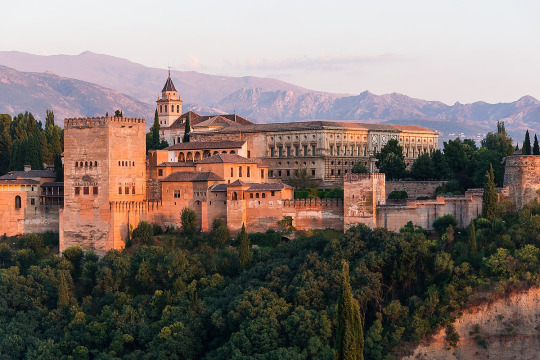
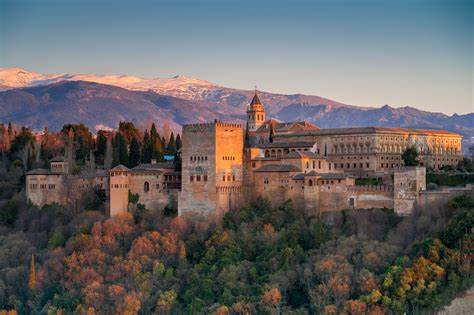
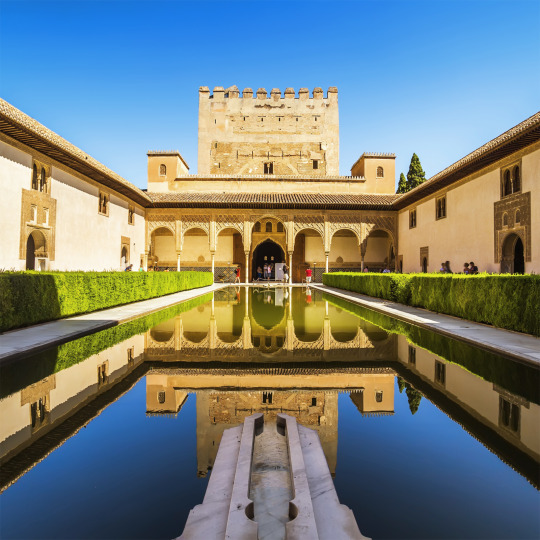
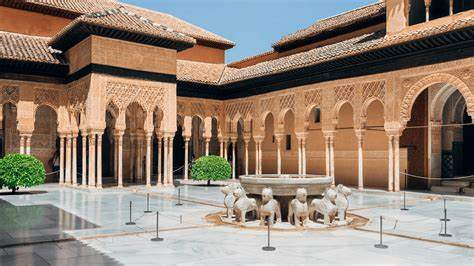
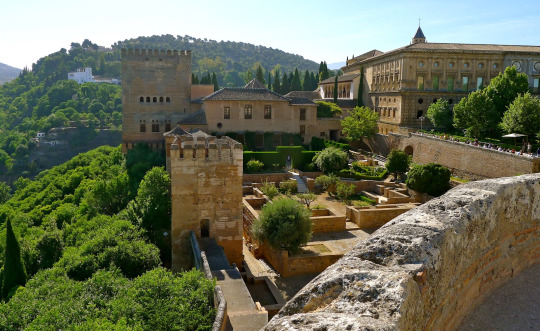
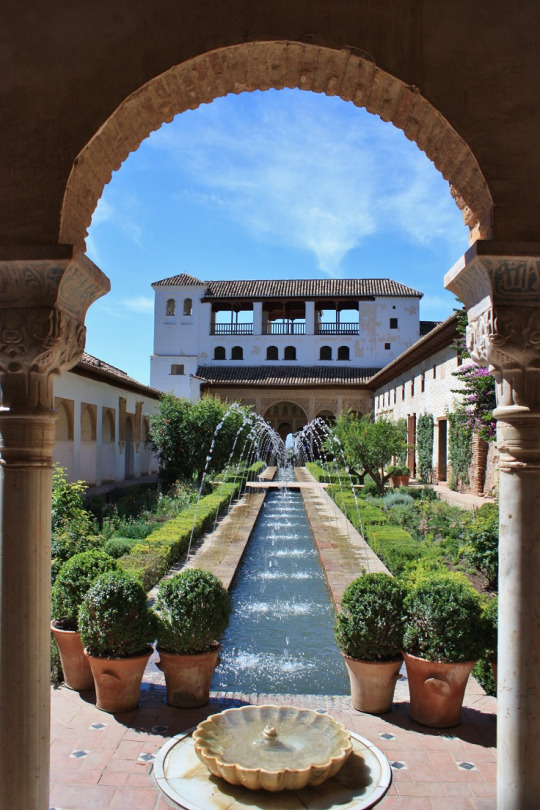
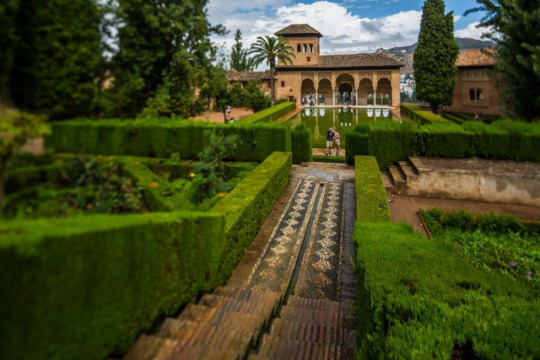
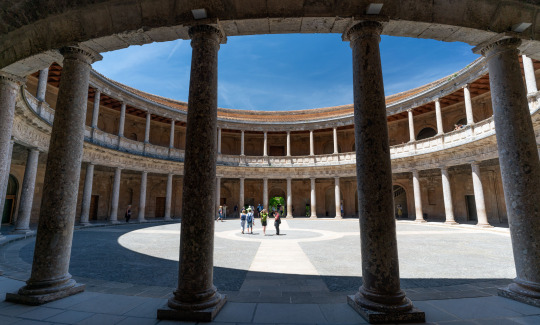
#al andalus#emirate of granada#islam#reconquista#alhambra#spain#iberian peninsula#architectures#european history#granada#andalusia#middle ages#renaissance#islamic garden#horticulture
49 notes
·
View notes